The Committee for Agriculture And Rural Development
Inquiry into Renewable Energy and Alternative Land Use
Written Submission
Action Renewables
Agri-Food and Biosciences Institute
Allied Biodiesel Industries
B9 Organic Energy
Carbon Trust
Committee of Culture, Arts and Leisure
Department of Agriculture and Rural Development
Department of Education
Department for Employment and Learning
Department of Enterprise, Trade and Investment
Department of Environment
Department of Finance and Personnel
Farm Woodlands
Green Energy Ltd
Home Energy Conservation Authority
Mr JWI Duff
Northern Ireland Authority for Utility Regulator
Northern Bio Energy Ltd
Northern Ireland Energy Agency
Northern Ireland Environment Link
Powertech Ltd
Rural Development Council
Rural Generation Limited
Ulster Farmers’ Union
Woodland Trust
WWF Northern Ireland
Action Renewables
Contact: Dr Andy McCrea, Director, The Innovation Centre, NI Science Park, Queens Road, Belfast BT3 9DT. Tel: 028 90737856 e-mail: andy.mccrea@actionrenewables.co.uk
Action Renewables Background
1.1 Action Renewables was established in July 2003 and since then it has been supported by the Department of Enterprise, Trade and Investment (DETI). It was created in response to European, National and Northern Ireland government commitment to renewable energy as one strand of the policy to combat climate change, environmental pollution and to increase fuel diversity.
1.2 The objectives of Action Renewables are to significantly raise awareness of the impending threat from climate change, the depletion of resources and the security of our energy supplies. Action Renewables’ aim to increase understanding of the issues associated with conventional energy use and to promote renewables generally in the context of a possible solution. In meeting these objectives we hope to win the hearts and minds of makers and opinion formers.
1.3 Action Renewables is established as a private company, limited by guarantee with charitable status.
Submission based on the Terms of Reference:
(a) The recent and current policy framework for the development of renewable energy in Northern Ireland, focussing on but not limited to those policies developed and implemented by the Department of Agriculture and Rural Development.
2.1 There is a range of policies and targets affecting decision-making in Northern Ireland which directly, or indirectly, promote the use of renewable energy generating technologies (Table 1).
Table 1: Selected Policies and Targets promoting AD in Northern Ireland
| Policy | Target | Period |
|---|---|---|
| Kyoto Protocol – UK Target | Reduce CO2 emissions by 12.5% below 1990 levels | 2008 - 2012 |
| UK domestic target | Reduce CO2 emissions by 20% below 1990 levels | 2010 |
| UK domestic target | Reduce carbon emissions by 60% | 2050 |
| Nitrates Action Programme | Spreading organic manure only within a designated period | Closed period – 15th Oct to 31st Jan |
| Nitrates Action Programme | Maximum of 170 kg total N per hectare per year from livestock manures applied to the land, including by the animals themselves | Outside closed period |
| European Council Statement on 9th March 2007 | 20% of total EU energy mix to come from renewable sources | 2020 |
| Strategic Energy Framework | 12% of all electricity consumed in Northern Ireland is obtained from indigenous renewable energy sources | 2012 |
| Strategic Energy Framework | 15% of the renewables mix should be generated from renewable resources other than wind | 2012 |
| Northern Ireland Renewables Obligation | Electricity supply companies in Northern Ireland obliged to supply up to 6.3% of their electricity from renewable resources | Up to 2012 |
| Waste Management Strategy | Reduce the quantity of biodegradable municipal waste being landfilled to 35% of the 1995 level | 2020 |
| Waste Management Strategy | Compost or recycle 45% of household waste | 2020 |
| Northern Ireland Sustainable Development (NI SD) Strategy | Reduce greenhouse gas emissions by 25% below 1990 levels | 2025 |
| NI SD Strategy | Make the Government estate carbon neutral | 2015 |
| NI SD Strategy | Establish a renewables centre of excellence at AFBI Hillsborough | 2008 |
2.2 In Northern Ireland, the total greenhouse gas emissions in 2005 were 5.5% below 1990 levels. Overall, however, the UK showed a 15.8% reduction on 1990 emissions of greenhouse gases. Northern Ireland’s performance is poor when compared to the UK total, and indeed, emissions from the industrial and transport sectors in Northern Ireland continue to rise. In particular, emissions associated with the production of energy have risen from 14.8 Mt CO2 equivalent in 2002, to 15.4 Mt CO2 equivalent in 2005.
2.3 Emissions of greenhouse gases from the agricultural sector are also higher per head of population in Northern Ireland than in the UK as a whole, accounting for 9.7% of UK agricultural emissions in 2005 yet being home to only 3% of the population. This reflects the importance of agriculture to the economy of Northern Ireland, but also provides opportunities to improve Northern Ireland’s record on reducing greenhouse gas emissions (Greenhouse Gas Inventories for England, Scotland, Wales and Northern Ireland: 1990 - 2005).
(b) The range of renewable technologies currently in operation or planned in rural communities, taking into account, as appropriate, similar projects elsewhere.
3.1 Northern Ireland currently has a range of operational and planned renewable energy projects:
3.2 Large scale wind > 100kW
There is approximately 180 MW of installed large-scale wind turbines. These are mostly found in wind farms but there are several individual large wind turbines owned and operated privately by rural businesses and farms.
3.3 Small scale wind < 100kW
Utilised by over 100 households and businesses in Northern Ireland to supplement electricity demand.
3.4 Biomass CHP
Provides heat and electricity from biomass, typically woodchips. Gasification units have been installed, but have yet to see widespread uptake. Some large examples exist, such as the sewage sludge incinerator which is 1 MW.
3.4.1 Anaerobic Digestion
A form of biomass power which converts organic material to biogas – a mix of methane and CO2 – by methanogenic bacteria in the absence of oxygen. Some examples are being developed.
3.5 Biomass boilers (woodchip / wood pellet)
A popular heating technology which can directly replace traditional oil-fired boilers in homes and businesses. Comes is a variety of sizes from small room heaters to large industrial boilers used to provide heat and hot water for offices, hotels, schools and government buildings.
3.6 Large scale hydroelectric > 100kW
3.7 Small scale hydroelectric < 100kW
3.8 Photovoltaic Panels
A popular electricity generating technology for householders, which requires little or no maintenance.
3.9 Heat Pumps (Ground, Air, Water)
A heating technology which is commonly incorporated into new developments as disparate as a single large rural dwelling, the apartments being built in Titanic Quarter, Randalstown Heath Centre.
3.10 Biofuels
Several trials and some commercial operations in existence.
3.10.1 Miscanthus
3.10.2 Willow
Pioneered by John Gilliland, there are now numerous willow growers across Northern Ireland.
3.10.3 Biodiesel
3.11 Solar Water Heating
A very popular renewable energy technology used mostly in domestic installations to supply hot water and reduce heating bills, but which is also being used to supplement farm hot water requirements.
(c) The relative importance in terms of contributing to Governments renewable energy targets, of heat from renewable sources, electricity from renewable sources and fuel from renewable sources, and how relevant each could be to the NI economy.
4.1 There is a current level of microgeneration in Northern Ireland of approximately 15,000kW. This compares to an installed capacity of wind farms of approximately 180,000kW. Microgeneration, therefore, currently represents about 8% of Northern Ireland’s renewable electricity generation in 2007, with the remainder coming from wind farms. Renewable electricity generators in Northern Ireland provide about 4% of electricity consumed in Northern Ireland, meaning that microgeneration supplies just 0.32% of Northern Ireland’s electricity.
4.2 Heat is a different matter. 81.4% of energy consumed in Northern Ireland, excluding transport, is used for space heating and hot water in buildings and for commercial and industrial uses. The domestic heat sector alone accounts for half of the energy consumed in Northern Ireland, excluding transport. The current level of installed capacity of renewable generation of heat is in the rough ballpark of 59,000 kW, providing an estimated output of about 1.3% of Northern Ireland’s heat demand.
4.3 Shown graphically, it is clear that there is much work to be done.
4.4 Note: Action Renewables were commissioned by DETI to produce reports on:
(1) Renewable heat potential in Northern Ireland – A Scoping assessment
(2) Research into the creation of renewable based Energy Supply Companies (ESCO’s) in Northern Ireland.
These reports are currently with DETI for evaluation.
Figure 1. Total Electricity and Heat Consumed in Northern Ireland by Source.
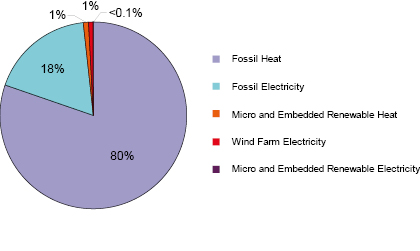
(d) The range of support available to renewable initiatives at local, national and European levels.
5.1 The information below covers Householders, Businesses, and Not-For-Profit Organisations
5.1.1 Grant Information for Householders – Renewable Energy
Scheme name & Funding Organisation |
What is it? |
What’s on offer? |
Eligibility |
Further Information |
Reconnect Grant Scheme - Action Renewables & DETI |
Grants for Renewable Energy Technologies |
Range of grants available for installing micro-generation technologies in domestic-households. |
If you are a home owner living in Northern Ireland and willing to use an accredited installer, you are entitled to the grants. Please note that the grants must be applied for before the technologies are installed - they are not retrospective. |
Reconnect Programme, Action Renewables Tel: 08000234077 Email: reconnect@detini.gov.uk Website: www.reconnect.org.uk |
Low Carbon Buildings Programme – Phase 1 (UK) |
Grants for Renewable Energy Technologies |
Range of grants available for micro- generation technologies for the home. |
If you are a home owner living in the UK you are entitled to the grants. |
Low Carbon Buildings Programme Tel:08009150990 Email: info@lowcarbonbuildings.org.uk www.lowcarbonbuildings.org.uk |
‘PV Top-Up Grant’ NIE Energy |
Grants for Renewable Energy Technologies |
It has been agreed that NIE will top up both the Reconnect grant and the Low Carbon Buildings grant for Photovoltaics (PV). NIE will now top this up with an additional 15% (or £900 per kWp, whichever is less, capped at £10,000). |
The grant is available to Householder PV schemes in Northern Ireland, and is only for new schemes - it will not be paid retrospectively. |
NIE Energy Website: www.nie-yourenergy.co.uk/renewablegrants.php |
‘Help with Hydro – Small Scale Hydro Programme’ NIE Energy |
Grants for Renewable Energy Technologies |
This programme is to help encourage the development of small-scale hydro schemes in Northern Ireland. Support is offered to help develop micro hydro in the form of: Householders - Grant for 0.5kWe to 5kWe system is £1,000 per kWe, up to a maximum of £5,000, (whichever is smaller). |
The grant is only available to hydro schemes in Northern Ireland, and is only for new schemes - it will not be paid retrospectively. Grants must be claimed within 12 months of a grant offer being made by NIE. |
NIE Energy Website: www.nie-yourenergy.co.uk/renewablegrants.php |
Phoenix ‘Solar Warmth’ Scheme in partnership with Action Renewables |
Cashback of £400 for solar panels |
Solar Warmth will offer new Phoenix Natural Gas customers and Reconnect applicants a £400 top-up grant to help with the installation of a high efficiency natural gas boiler alongside a Reconnect solar water heating panel. |
This grant is in addition to the Reconnect grant of £1,125 You can only avail of this grant if you live in the Phoenix Natural Gas area |
Telephone 08454 55 55 55 and select option 1. Please quote Solar Warmth Offer when you ring. This grant ends on the 31st January 2008 |
5.1.2 Grant & Loan Information for Businesses – Renewable Energy
Scheme name & Funding Org |
What is it? |
What’s on offer? |
Eligibility |
Further Information |
|---|---|---|---|---|
‘PV Top-Up Grant’ NIE Energy |
Grants for Renewable Energy Technologies |
It has been agreed that NIE will top up both the Reconnect grant and the Low Carbon Buildings grant for Photovoltaics (PV). NIE will now top this up with an additional 15% (or £900 per kWp, whichever is less, capped at £10,000). |
The grant is only available to Householder/Community Group/Business PV schemes in Northern Ireland, and is only for new schemes - it will not be paid retrospectively. |
NIE Energy Website: www.nie-yourenergy.co.uk/renewablegrants.php |
‘Help with Hydro – Small Scale Hydro Programme’ NIE Energy |
Grants for Renewable Energy Technologies |
This programme is to help encourage the development of small-scale hydro schemes in Northern Ireland. Support is offered to help communities and other organisations develop micro hydro: - Grant applied for is a maximum of 25% of total capital and installation costs, or £10,000, (whichever is smaller). |
The grant is only available to hydro schemes in Northern Ireland, and is only for new schemes - it will not be paid retrospectively. Grants must be claimed within 12 months of a grant offer being made by NIE. |
NIE Energy Website: www.nie-yourenergy.co.uk/renewablegrants.php |
5.1.3 Grant & Loan Information for Not-for-profit Organisations – Renewable Energy
Scheme name & Funding Organisation |
What is it? |
What’s on offer? |
Eligibility |
Further Information |
|---|---|---|---|---|
Low Carbon Buildings Programme (Phase 2) grant scheme |
Grants for Renewable Energy Technologies |
Grants are available for the installation of micro-generation technologies covering between 30%- 50% of project costs up to a maximum of £1 million. |
Grants are available to public sector buildings (inc. schools, hospitals, housing associations and local authorities) and charitable bodies, wishing to install renewable technologies. |
Low Carbon Buildings Programme Tel:08704232313 Email:info@lcbpphase2.org.uk Website: www.lowcarbonbuildingsphase2.org.uk |
Community Low Carbon Buildings Programme Phase 2 top-up – NIE Energy |
Grants for Renewable Energy Technologies |
LCBP grant levels vary for PV, SWH, Wind & Biomass, so NIE will top-up the grant to an overall 65% of the installed cost (capped at £5,000 for each technology). |
Community groups in Northern Ireland who have applied to and are receiving LCBP (Phase 2) funding to install renewables in a community project. |
Contact Action Renewables on 02890 737868 or freephone: 08000234077 |
Eco-Schools Grant Scheme |
Grants for Renewable Energy Technologies |
Grants of up to £4000 are available to enable registered Eco-Schools in Northern Ireland to carry out building work and cover the cost of new equipment which supports the development of the school’s Eco-Schools programme. |
Primary and Secondary schools in Northern Ireland registered in the Eco-Schools Programme who have achieved a minimum of a Bronze Award and are working towards their green flag are eligible to apply. |
Tidy Northern Ireland, Tel:0282768434, ecoschools@tidynorthernireland.org |
The Green Energy Trust – Scottish Power |
Grants for Renewable Energy Technologies |
Projects are supported that promote renewable energy and the installation of renewable energy technologies. The Trust can provide up to 50% of the project costs, up to a maximum of £25,000. |
The Green Energy trust supports not-for-profit organisations in the development of new renewable energy sources in the UK. Potential projects must support communities through education and public involvement. |
Scottish Power Green Energy Trust Tel:0141 568 3492 Email: greenenergytrust@scottishpower.com Website: www.scottishpower.co.uk/green |
‘PV Top-Up Grant’ NIE Energy |
Grants for Renewable Energy Technologies |
It has been agreed that NIE will top up the Low Carbon Buildings grant for Photovoltaics (PV). NIE will now top this up with an additional 15% (or £900 per kWp, whichever is less, capped at £5,000). |
The grant is only available to Householder/Community Group/Business PV schemes in Northern Ireland, and is only for new schemes - it will not be paid retrospectively. |
NIE Energy Website: www.nie-yourenergy.co.uk/renewablegrants.php |
‘Help with Hydro – Small Scale Hydro Programme’ NIE Energy |
Grants for Renewable Energy Technologies |
This programme is to help encourage the development of small-scale hydro schemes in Northern Ireland. Support is offered to help communities and other organisations develop micro hydro: - Grant applied for is a maximum of 25% of total capital and installation costs, or £10,000, (whichever is smaller). |
The grant is only available to hydro schemes in Northern Ireland, and is only for new schemes - it will not be paid retrospectively. Grants must be claimed within 12 months of a grant offer being made by NIE. |
NIE Energy Website: www.nie-yourenergy.co.uk/renewablegrants.php |
5.1.4 Useful Contacts for Householders
Name of Organisation |
Service Offered |
How can they help? |
Who do they help? |
Further Information |
|---|---|---|---|---|
Action Renewables |
Advice & Information |
Action Renewables provides free impartial advice on sustainability including transport, energy efficiency and renewable energy, renewable technologies, accredited installers and grants in Northern Ireland. |
Action Renewables provides free impartial advice and support services for Householders, Community groups, Not-for-profit organisations and SME’s in Northern Ireland. |
For further information contact Action Renewables on freephone 0808 141 2020 or log on to www.actionrenewables.org or email info@actionrenewables.org |
Northern Ireland Environment Link (NIEL) |
Advice & Information |
NIEL is the forum and networking body for organisations interested in the environment of Northern Ireland. It aims to facilitate understanding of environmental issues and enhances the capacity of groups and individuals to speak and act in a co-ordinated way in the interests of the natural and built environment. |
Who can join? Full membership is open to voluntary organisations whose aims include promoting the conservation of the environment of Northern Ireland. Statutory organisations, companies or individuals with environmental interests are eligible for Associate Membership. |
For further information contact NIEL via Tel: 02890 455770 Email: info@nienvironmentlink.org Website: www.nienvironmentlink.org |
Heatsmart -NIHE |
Advice & Information |
The service offers free impartial information on heating and includes a home visit providing advice on the heating system, timers, controls etc. |
This service is for Housing Executive tenants only. |
Contact Action Renewables on 02890 737868 for more information. |
Energy Savings Trust |
Advice and Information |
The service offers free impartial advice on energy efficiency and transport |
EST works with householders and community groups |
Freephone 0800 512 012 |
5.1.5 Useful Contacts for Businesses
Name of Organisation |
Service Offered |
How can they help? |
Who do they help? |
Further Information |
|---|---|---|---|---|
Action Renewables |
Advice & Information |
Free impartial advice on renewable energy, renewable technologies, accredited installers and grants in Northern Ireland. |
Action Renewables provides free impartial advice and support services for Householders, Community groups, Not-for-profit organisations and SME’s in Northern Ireland. |
For further information contact Action Renewables on freephone 0808 141 2020 or log on to www.actionrenewables.org or email info@actionrenewables.org |
Northern Ireland Environment Link (NIEL) |
Advice & Information |
NIEL is the forum and networking body for organisations interested in the environment of Northern Ireland. It aims to facilitate understanding of environmental issues and enhances the capacity of groups and individuals to speak and act in a co-ordinated way in the interests of the natural and built environment. |
Who can join? Full membership is open to voluntary organisations whose aims include promoting the conservation of the environment of Northern Ireland. Statutory organisations, companies or individuals with environmental interests are eligible for Associate Membership. |
For further information contact NIEL via Tel: 02890 455770 Email: info@nienvironmentlink.org Website: www.nienvironmentlink.org |
Carbon Trust |
Advice & Information |
The Carbon Trust supports the development of low carbon technologies and provides free advice and information on how to reduce your carbon footprint and help cut carbon emissions. |
Mainly offers support to businesses and the public sector. |
The Carbon Trust Tel: 0800 085 2005 Email: customercentre@carbontrust.co.uk Website: www.carbontrust.co.uk |
STEM (Sustainable Together through Environmental Management) Project - SGEHC |
Advice & Information |
The STEM project aims to assist businesses in implementing an Environmental Management System (EMS) within their organisation and help them work towards achieving ISO 14001. The STEM Team delivers the EMS through a combination of workshops and on site visits, at a pace that suits the individual businesses needs. |
If you are a small-to-medium sized enterprise operating in any of the nine participating council areas (listed below), you are eligible to register.
|
STEM Project Tel: 02837 515810 Email: Website: www.stemproject.com |
Envirowise |
Advice & Information |
Envirowise seeks to improve environmental performance whilst increasing the competitiveness of UK industry by encouraging the take-up of good practice technology and techniques. The main themes of the Programme are the promotion of waste minimisation and the adoption of cost-effective cleaner technology. |
Envirowise is mainly aimed at those in industry and commerce. It organises and supports workshops, seminars, exhibitions and Waste minimisation clubs throughout the UK and provides on-site consultancy for SME’s. |
The Environment & Energy Helpline: 0800585794 Website: www.envirowise.gov.uk |
Northern Lights Carbon Reduction Programme – ARENA Network, Northern Ireland |
Advice & Information |
ARENA Network is offering free Carbon Footprint audits to Northern Ireland based companies. Specially trained representatives will work with businesses to develop a strategic approach to energy management and to adopt simple cost saving measures. |
Grant assistance is available for Northern Ireland businesses that are interested in implementing renewable technologies to reduce their carbon consumption. To be eligible businesses must have an annual energy spend of less than £50,000. |
Michael Schwartzentruber Tel:02890 460606 Email: Michael.Schwartzentruber@bitcni.org.uk Website: www.arenani.org.uk |
5.1.6 Useful Contacts for Not-for-profit Organisations
Name of Organisation |
Service Offered |
How can they help? |
Who do they help? |
Further Information |
|---|---|---|---|---|
Action Renewables |
Advice & Information |
Free impartial advice on renewable energy, renewable technologies, accredited installers and grants in Northern Ireland. |
Action Renewables provides free impartial advice and support services for Householders, Community groups, Not-for-profit organisations and SME’s in NI. |
For further information contact Action Renewables on freephone 0808 141 2020 or log on to www.actionrenewables.org or email info@actionrenewables.org |
Northern Ireland Environment Link (NIEL) |
Advice & Information |
NIEL is the forum and networking body for organisations interested in the environment of Northern Ireland. It aims to facilitate understanding of environmental issues and enhances the capacity of groups and individuals to speak and act in a co-ordinated way in the interests of the natural and built environment. |
Who can join? Full membership is open to voluntary organisations whose aims include promoting the conservation of the environment of Northern Ireland. Statutory organisations, companies or individuals with environmental interests are eligible for Associate Membership. |
For further information contact NIEL via Tel: 02890 455770 Email: info@nienvironmentlink.org Website: www.nienvironmentlink.org |
Energy Savings Trust |
Advice and Information |
The service offers free impartial advice on energy efficiency and transport |
EST works with householders and community groups |
Freephone 0800 512 012 |
5.1.7 EU Funds – Normally on a rolling call basis
“ALTENER”, which concerns the promotion of new and renewable energy sources for centralized and decentralised production of electricity and heat and their integration into the local environment and energy systems, including the preparation of legislative measures and their application;
“STEER”, which concerns support for initiatives relating to all energy aspects of transport, the diversification of fuels such as through new developing and renewable energy sources and the promotion of renewable fuels and energy efficiency in transport, including the preparation of legislative measures and their application.
(e) To compare the range of fiscal and other incentives offered elsewhere to support the development of a renewable energy industry and the infrastructure to support it.
Grants Support Programme
Lennox & Wyfold Foundation
- Grants range from £5,000 to £10,000
- One grant category is Environment/Conservation
- Match funding optional
- Must be a registered UK charity
- Contact Trust with regards your eligibility
- Applications may be submitted at any time.
Steel Charitable Trust
- Offers one off grants ranging from £500 to £25,000. The Trust distributes grants totalling approximately £1 million each year.
- Match funding optional
- Must be a registered UK charity
- ‘Environment & Culture’ is one of their funding priority areas.
- Rolling Programme (applications may be submitted any time)
The Polden-Puckham Charitable Foundation
- One of the Foundations main areas of interest is ‘Ecological Sustainability – The Foundation aims to address the causes of global ecological damage rather than its symptoms. It particularly supports organisations which are tackling the underlying pressures leading to environmental damage. Fundamental to its approach, is the realisation that in order to meet targets for containing global warming, as well as minimise other environmental problems, people in the developed countries have to alter their way of living to live more sustainably.
- Grants are normally available between £1,000 and £10,000 and funding can be provided for up to three years.
- Applicants are expected to show what other sources of funding have been sought and secured.
- Since resources are limited and such a huge range of work needs to be supported, the charity has often chosen to fund projects which promote policy change and which encourage environmental understanding amongst opinion-formers and other leaders.
- The funders meet twice a year to consider applications: 15th February & 15th September each year.
Green Energy Trust
- Aims to assist in the creation of new renewable electricity sources and to promote education in the community regarding new renewable energy generation.
- The Trust can provide up to 50% of the project costs up to a maximum of £25,000.
- Applications are invited from not-for-profit organisations or groups to carry out community-based renewable energy and educational products within the UK.
- Triannual funding.
Alcan Community Investment Programme
- No minimum or maximum donation amount is stipulated
- Organisations that have already received direct or indirect donations are not eligible to apply.
- Alcan donates to projects that contribute to four key themes:
- Environmental contribution – Priority is given to projects that
(1) Promote recycling
(2) Promote the conservation of natural resources
(3) Enhance the knowledge among young people of the interdependence of sound environmental practices and sound business practices
(4) Sustain or foster relationships between Alcan and non-governmental organisations (NGOs)
(5) Sustain or foster relationships between Alcan and institutions involved in environmental science and research.
(6) Include opportunities to involve Alcan employees and their families.
- Applications accepted from registered charities within the UK
- Rolling programme…applications can be submitted at any time.
Oak Foundation
- Support is offered through various programmes and areas of priority interest.
- Priority area: ‘Climate Change’- addressing global climate change by advocating for renewable energy and energy efficiency in the power and transport sectors through education, research and policy change.
- The Foundation will provide grants of no less than USD $25,000. No maximum grant is defined in the guidelines.
- Projects are required to show financial commitment from other sources has been obtained.
- Rolling programme - applications can be made any time.
Esmee Fairbairn Foundation
- Four programme areas under which applications are accepted…one of which is the Environment Programme (part of this includes projects which aim to produce a ‘reduction in carbon emissions, together with ell-planned, sustainable urban and rural developments, offering a good quality of life to all.
- There is no minimum or maximum grant size although in 2005 the average grant awarded was £52, 795.
- Grants may be for one year or a longer period although they are not generally made for longer than three years.
- Grants are made towards projects and core costs, including running costs such as staff salaries and overheads.
- Within the broad objectives stated, the programme supports three interrelated themes: UK biodiversity, a Low Carbon Economy and Sustainable Food Systems.
- LOW CARBON ECONOMY… ‘Applications promoting the more rapid adoption, on a nationwide basis, of renewable energy, from a variety of sources, and of energy efficiency.
- Applications may be made at any time for consideration by the Trustees at meetings held four times a year.
Renewable Energy Installers Academy
The Renewable Energy Installer Academy (REIA), a pilot project funded under the INTERREG programme as a joint initiative of Action Renewables in Northern Ireland and Sustainable Energy Ireland in Republic of Ireland, was developed in response to the recognition that the lack of trained installers and specifiers is one of the critical barriers to the development of a sustainable renewable energy market.
The objective of the REIA pilot project was to develop structures for training, registration and quality control of installers in the INTERREG region, which is Northern Ireland and the six border counties, namely Cavan, Donegal, Leitrim, Louth, Monaghan and Sligo.
During the pilot phase of the project, REIA developed training courses and a laboratory specification for training facilities, and facilitated the establishment of training facilities for Solar Water Heating, Heat Pumps and Biomass in four training centres in the INTERREG region.
The curriculum in each technology was developed in accordance with best practice in Europe with the support of European experts in the relevant technologies.
It is now planned to build upon the success of the pilot project and to develop REIA into a sustainable association for renewable energy installers to promote and ensure quality renewable energy installations. A key function of REIA will be the accreditation of training facilities to deliver the required competence in renewable energy installers and the registration of installers.
The establishment of sufficient capacity in training institutes to deliver training will be essential to meeting the training needs and ensuring the competence of renewable installers. The training courses and learning outcomes have been registered with FETAC in RoI and BPEC in NI and in order to provide training, training providers must be nationally accredited (eg by FETAC/BPEC) and by REIA.
(f) The potential role of farm and rural business and rural communities in the delivery of a renewables programme which contributes to the sustainability of those business and the wider community.
One potential role in this area would be the creation of rural ESCO’s.
The concept behind ESCOs is not new with the market in Europe and the US having been in existence since the 1970’s, when firms attempted to establish energy performance contracting as a viable, self sustaining business activity aimed at energy efficiency measures, following the OPEC oil crises. Within the EU, the ESCO model has been developed and promoted by the European Commission since 1988, with early initiatives aimed at promoting the ESCO concept, and the use of third party financing.
Experience throughout the UK and elsewhere has shown that ESCOs are organisations that can make a significant contribution to the achievement of both energy efficiency and renewable energy targets as part of the EU and UK Climate Change Programmes. With specific regard to Renewable Energy, the ESCO concept should help to alleviate some of the barriers in the uptake of these “new” technologies. They do this by transferring some of the risk (technology and/or financial) of the project from the end user/consumer.
Succinctly, an ESCO is an organisation that delivers energy services and/or energy efficiency improvement measures in a user’s facility or premises, and accepts some degree of (financial) risk in so doing. The payment for the services delivered can be based (either wholly or in part) on the achievement of energy savings and/or on the meeting of other agreed performance criteria.
The development of a renewable energy based ESCO market in the UK is still in its early stages and in particular for Northern Ireland. In terms of renewable energy technologies the following offer the greatest potential for ESCO participation:
- biomass heat
- solar active/thermal heating
- ground source heat pumps
- stand alone wind turbines
The following types of sites / end-uses, offer the greatest potential for consistent off take loads and therefore present the ESCO with the best opportunity for achieving required profitability and return on capital employed:
- process heat users, including food processing, dairies etc
- horticulture (glasshouses)
- rural estates and farms
The diagram below details the various operational functions of a renewable energy based ESCO (delivering, in this case, a wood fuel based energy service). The operational mode for a non-fuel based ESCO will be obviously be simpler (i.e. minus the fuel sourcing, processing delivering etc.).

Specifically then an ESCO can offer a range of benefits to customers:
- Comprehensive service package (one face to the customer for their needs)
- Guarantees for the energy costs
- No (or reduced) investment risk to the customer (with the ESCO bearing the financing risk of the project)
- No (or reduced) problems with operation and maintenance of the technology
- Fuel supply co-ordination (where required)
An established renewable energy based ESCO industry in Northern Ireland will provide an integrated package of goods and services to energy consumers, selling energy and therefore helping to overcome some of the obstacles in the implementation of renewable energy technology.
As a result, the ultimate benefit of a successful Renewable Energy based ESCO industry in Northern Ireland will be an increase in the uptake of renewable energy technologies.
(g) The ways by which the Department of Agriculture and Rural Development could implement and resource a renewable energy programme in a manner which contributes to the sustainability of the agricultural/rural sector and contributes to Northern Ireland’s renewable energy targets.
6.1 The key driver should be “to maximise the agricultural, environmental and economic benefits of renewable energy through its integration into mainstream policy and practice at all levels within the rural sector.”
A strategy should be employed with a regional focus:
- Deploying renewable energy on the ground
- Developing skills and awareness
- Grant support and the setting of targets.
The strategy should incorporate a practical action plan for each of these areas including timescales, suggestions for target audiences and indicators for measuring success.
Deploying renewable energy on the ground – ensuring that the appropriate policy climate exists for more renewable energy projects to be deployed in Northern Ireland.
This action plan would aim to remove the barriers that prevent more renewable power projects being set up in rural environment; to support the wider use of renewable heat;; and to encourage a more transparent and consistent approach to planning decisions.
Developing skills and awareness – changing attitudes towards renewable energy in order to mainstream its development
This action plan would aim to increase awareness of the need and potential for renewable energy; increase skills available to the industry (the Renewable Energy Installer Academy has already been identified in the respect); and increase understanding of renewable energy amongst decision makers.
Grant support and the setting of Targets - This action plan would aim to - increase the availability of finance incentives for renewable energy in the rural environment; set challenging but achievable targets; devise performance indicators for measuring success.
Agri-Food and Biosciences Institute

Agriculture Branch,
Hillsborough,
Northern Ireland
BT26 6DR
United Kingdom
Telephone 028 92682484
1. AFBI is a Non-Departmental Public Body, sponsored by DARD, which conducts research and provides statutory services in support of the agriculture, food, forestry and fisheries in Northern Ireland, providing technology transfer of its research findings to the industry and providing scientific advice to DARD.
2. AFBI also receives external funding from levy bodies, other government departments, EU contracts, industry sponsors and a range of other sources in support of its activities.
3. Renewable Energy
3.1 AFBI Loughgall
Short rotation coppice willow is now a well established source of renewable energy. AFBI has been involved in research into short rotation coppice willows for over 30 years and has pioneered the development of the crop, working closely with industry as SRC willows have moved from research to commercial development. Significant aspects in which AFBI has been active and in which it continues to play a leading European research role are: -
- Evaluation of willow clones best suited to Northern Ireland conditions
- SRC crop management and harvesting regimes
- Research into rust diseases and planting strategies to minimise rust damage
- Harvesting and storage techniques for willows
- The use of SRC willows for bioremediation of wastes
- Environmental impacts of SRC willow growing
Active DARD funded research projects continue in most of these areas. AFBI staff have recently contributed to the publication of an authoritative guide “Short rotation coppice willow Best Practice Guidelines” by the EU funded RENEW project.
3.2 The Environment and Renewable Energy Centre, AFBI Hillsborough
AFBI has set up an Environment and Renewable Energy Centre (EREC) at Hillsborough through funding from the Environment and renewable Energy Fund (2006 to 2008). A wide range of renewable energy schemes are being incorporated into the infrastructure of the site providing facilities for an extensive research programme into aspects of renewable energy relevant to the agriculture industry.
The key components of the EREC currently being constructed and installed are:-
- Biomass heating system (500 kW) utilising SRC willow partly grown on site and partly purchased from local suppliers and also forest brash from on-site forestry operations.
- Multi-fuel biomass boiler (120 kW) capable of utilising a wide range of biomass fuels
- District heating system distributing heat across the AFBI Hillsborough complex.
- Anaerobic Digester (600 cubic metre, mesophilic) mainly utilising dairy cow manure, but also pig manure and crop materials.
- Biogas combined heat and power unit (23kW electrical output)
- Solar panels providing hot water to the dairy parlour
- Solar photo-voltaic panels providing electrical output
- Biomass store with on-floor drying system for wood-chip and other biomass materials
The research programme being undertaken through the EREC is fully integrated with the continuing research at AFBI Loughgall. A number of the research projects have been agreed by DARD while others have either been submitted for approval or are in preparation. External funding is being sought for research in a number of areas.
The research projects currently approved, submitted or in preparation are:-
- The utilisation of SRC willows for the bioremediation of farm dirty water
- Maximising the output of biogas from the anaerobic digestion of animal manures
- Improving the agronomy of Miscanthus to achieve higher DM yields
- The utilisation of forest brash for biomass heating systems
- Harvesting and drying systems for SRC willows
- The effect of the incorporation of renewable energy schemes on the carbon footprint of the AFBI Hillsborough site
- The biodiversity of tall biomass crop headlands
3.3 AFBI-Economics
Agricultural and Food Economics is seeking external funding for a strategic study of the full economic and environmental impacts within the regional food chain and wider economy of changing energy prices, including the impacts of greater uptake of different forms of renewable energy.
4. Other related projects
In addition to the specific renewable energy research projects listed above other research groups within AFBI are actively involved in research related to renewable energy and to issues related to green house gas emissions, and in the production of reports related to these topics. For example:
Global Research Unit
- New biomass crops with potential in Northern Ireland (Field work)
- The potential for liquid biofuels from Northern Ireland (Report -2004)
- Nitrification inhibitors (Report -2004)
- A evaluation of manure treatment systems designed to improve nutrient management (Report - 2005)
- Miscanthus as an energy crop and its potential for Northern Ireland (Report – In Press)
Agriculture Branch: The reduction of methane emissions from ruminant livestock
Agri-Environment Branch:
- Evaluating Irish grassland as a source for bioenergy: Environmental impacts and long-term sustainability.
- The reduction of nitrous oxide (N2O) emissions from agricultural soils
Applied Plant Science Division: Bio-fraction of ensiled grass (including the production of bio-fuels)
5. AFBI has made the commitment to develop this research programme into aspects of renewable energy related to production agriculture to provide rigorous evidence of the extent to which agriculture can develop enterprises which produce biomass and biofuel resources which contribute to government targets for the generation of electricity and heat from indigenous renewable resources.
6. However, AFBI believes that the development of renewable energy schemes must be based on sound scientific and socio-economic evidence and justified in terms of carbon emission benefits, sustainability, economic return and environmental impact. AFBI aims therefore from its research and in-depth reviews to provide objective data to government and the public on renewable energy schemes and to provide scientific advice to government on which to base effective renewable energy.
7. It is clear that there is much debate currently around issues such as food vs fuel production and the benefits or otherwise of first generation biofuels. AFBI believes that future research will need to look beyond this debate to provide research into the next generation of renewable energy opportunities which will lead to the most efficient production of biofuels from biomass through new fermentation, refinement and combustion technologies as clearly highlighted in the Royal Society Report (Jan 2008). Renewable energy resources which are derived from animal manures, forest brash and waste materials will not complete with other land uses and are therefore also potentially valuable resources.
8. AFBI is confident that, given the range of research into renewable energy being developed at its centres and the links it is developing with other research centres both nationally and internationally, it is uniquely placed to become a centre of excellence in renewable energy research related to agriculture. This provides the local agricultural industry and the wider commercial sector with access to scientific findings which will strengthen its hand in developing economically viable renewable energy enterprises.
Alternative land uses: The AFBI research programme in over the last 10 years has encompassed both flax and hemp and AFBI have provided technical support both through CAFRE and directly to those seeking to set up enterprises based on flax and hemp processing for both fibre and oil.
This submission has been prepared by
Dr Lindsay Easson
Environment and Renewable Energy Centre Project Leader
AFBI Hillsborough
Large Park
Hillsborough
BT26 6DR
028 92682484
31/1/08
Allied Biodiesel Industries
The Trade Organisation for British SME Biodiesel Producers
T L de Winne MF
6, Coyle’s Lane, Ballyrobert, Bangor, Co. Down BT19 1UF
028 91 853318
0788 157 3269
Response to NIA Committee for Agriculture and Rural Development Consultation –
Renewable Energy and Alternative Land Use
The ABI(UK) is the representative trade organisation for SME biodiesel producers in the UK. It was set up by the above individual, who has had eight years experience of transport biofuels and over 30 years association with renewable energy.
Aim
“To establish the potential economic benefits Northern Ireland family farm and rural businesses could derive from renewable energy and alternative land uses relative to existing land use and agricultural practices, the potential agricultural and environmental effects of any such changes and to what degree renewables should become a focus of DARD resourcing relative to other agri-rural objectives.”
It is suggested that the Committee refer to the document “Renewable Energy in the Millennium”[1] to re-establish the economic benefits of renewable energy production to the agricultural economy, and then to enquire of DETINI (via the inter-departmental group set up for this purpose) their current activities in this area – namely, further consultation.
Reference may also be made to “Renewable Energy Resources in Ireland for 2010 and 2020”[2] and figures that may be extrapolated to Northern Ireland.
It would have been quite helpful if up-to-date statistics had been supplied as part of the consultation in order that evaluation be made regarding progress of DARDNI in achieving its oft-stated aspirations.
Unfortunately, statistics regarding the use of biomass for renewable electricity[3] are only available for the 2005-06 period, the 2006-07 Ofgem report not being due until February. It is therefore not possible to quantify the effects of any DARDNI policy implemented within the past two years.
NI Renewable Obligation Certificates issued (one per MWh) for 2005-06 amounted to –
Biomass – 6,783; Co-firing – 5,905; Hydro – 6,860; On-shore wind – 253,889.
The primary barrier to the effective introduction of agricultural renewable energy in Northern Ireland has been the lack of infrastructure to utilise any biomass produced. With a few micro-generation exceptions, there is virtually no Northern Ireland market for energy biomass. This is witnessed by the deplorable export of thousands of tonnes (allegedly[4]) of wood pellets from the publicly-funded Balcas operation to generators in England – costly, both financially and in transport carbon emissions, carrying a bulky fuel.
It is noted that the AES Kilroot power station appears to be a non-obligated generator and therefore not subject to the NI Renewables Obligation legislation. However, despite the pronouncement by Mr Shane Lynch[5] that “Substituting about 10% of coal with biomass would achieve 25% of the (NI 2012) renewable energy targets,” the generator has since contributed virtually zero carbon savings. Discuss.
There has been recent news of a GB-based power company – Scottish and Southern Energy – wishing to possibly build a new power station in Northern Ireland. This should be offered public funding (and DARDNI and DETINI should discuss the source), on the condition that it is primarily a biomass generator.
The same scenario applies to the introduction of the RTFO.[6] Whilst it is viable for farmers to grow oilseed rape – area increased from 200 ha in 2000 to 300 ha in 2005[7] - the oilseed has to be exported to England.
for pressing, thereby losing not only the cost of transportation but also the benefit of the residual cattle cake. Additional land has therefore to be dedicated to producing cattle fodder – an illogical and wasteful procedure, for the want of capital investment and focussed government support. Consideration must be given to promoting (by DETINI or Invest NI?) the installation of an oilseed press in the province.
The 2005 NI oilseed rape yield per hectare exceeded the national average, but the tiny crop (1100 tonnes of seed) would only have been capable of producing 300 tonnes of biodiesel, replacing just 0.075% of the amount of diesel used per annum. The 2008-09 RTFO target is 2.5% aggregate biofuels.
The use of used cooking oil is more productive, having ten times this potential. Unfortunately, the only biodiesel plant capable of producing this amount has now been closed down due to lack of both government support and interest.[8] Meanwhile, DoENI had an outstanding offer under the Community Waste Innovation Fund – subsequently withdrawn through lack of matching funding - that could have saved the inward (Republic of Ireland) investment and avoided six employee redundancies. The basic cause of this was ill-advised funding targeting and lack of inter-departmental co-operation.[9]
The logical conclusion is that it is futile for DARDNI to implement another paper renewable energy programme without the assistance of DETINI Energy Branch and other government funding departments to be both pro-active and cohesive in the renewable energy field, supporting means of utilising the crops that are grown. Given a stable local produce demand, there is no doubt that the increased value of crops – for both biomass and biofuels – will be to the advantage of the agricultural economy.
A further aspect that requires scrutiny is the barrier to adoption caused by the high cost of connection of renewable energy generation plants to the grid. Consideration should be given to subsidising this cost for micro-generators.
It is further suggested that the Committee establish the reason why, since 1939, the area of Northern Ireland under crops has fallen from 1.26925M ha to 1.0145M ha – a loss of 254,750 ha.
Finally, it must be noted that tourism is not a sustainable activity and should not be subsidised from public funds – it is damaging to the environment in terms of transport carbon emissions. An Environmental Impact Assessment should be carried out in respect of every proposal.
T L de Winne
31 January 2008
[1] NIE/DEDNI, June 1999; Consultants - ETSU (now UKAEA) and WREAN
[2]Updating the Renewable Energy Resources in Ireland; Sustainable Energy Ireland/ESB; Report No 4P305A-R5, November 2004
[3] Ofgem Annual Report, per pro the NI Authority for Utility Regulation
[4] Renewable Energy Action Plan; DARDNI; January 2007
[5] Managing Director, AES Kilroot, vide press release on 19th August 2004
[6] Renewable Transport Fuels Obligation Order 2007, due implementation 15th April 2008.
[7] DARDNI 2007 statistics publication has omitted to include essential crop production figures.
[8] With the notable exception of DRD Water Service, who carried out a two year trial before losing interest, and the Environment Agency of England & Wales, who are currently undertaking a four year B22 trial. The writer is on the Board of Management of same as technical adviser.
[9] Invest Northern Ireland were not involved in the DRD procedure.
B9 Organic Energy
AD is a natural process and describes the biological digestion or decomposition of organic materials into biogas and a stable fibrous material. This biogas is a mixture of circa 60% methane and 40% carbon dioxide. In Northern Ireland this naturally occurring process is commonly found at landfill sites and is responsible for the biogas given off from the breakdown of organic waste deposited in the sites. This biogas can be used as fuel to generate power.
B9 have won the first contract (with Down District Council) to do this at a landfill site in NI.
Aerobic Digestion - when this natural process occurs in air (i.e. the compost heap in the back garden), this process is called aerobic digestion more commonly known as composting. The gas emitting from the compost pile is a mixture of carbon dioxide and water vapour.
Anaerobic Digestion - when this natural process occurs in the absence of air (i.e. in a landfill site) the process is called Anaerobic Digestion.
The key difference is that AD gives methane which can be used as a fuel and is therefore preferable.
Where is the technology now?
This natural process can be replicated in processing plants called Anaerobic Digestors and is a very efficient way of capturing the biogas (energy) available from organic wastes and using it as a fuel.
AD technology is widely available and has been used for power generation throughout the world most notably in China and India, for many years.
AD is also widely used throughout Europe with the exception of the UK and Ireland. This is primarily because up until recently both (fossil fuel) energy, and landfill costs were relatively cheap, and organic waste was not recognised as a significant source of renewable energy, thefore historically AD had no market incentive in the UK or Ireland.
NB. There are still no targets to produce/encourage renewable energy produced from organic waste in the UK.
This is in direct contrast for example with Germany and Scandinavia whose governments recognised the significant benefits of using AD; which are -
- Treat organic wastes in compliance with legislation
- Generate renewable energy – (biogas is a renewable supply of fuel)
- Reduce greenhouse emissions – (biogas can substitute for fossil fuel)
- Create more sustainable jobs and investment – AD development is currently just beginning and offers huge potential for sustainable development.
To achieve these benefits, the German Government introduced several measures to kick-start their AD industry some years ago such as;
1. Capital grants for plant construction
2. Long term high value contracts for the production of ‘renewable energy’ from AD
3. and statutory rights to grid connection.
This kick-start has resulted in excess of 3,000 AD plants now operating in Germany today.
How much of our energy is provided through the technology now?
None of these or any other strategic mechanisms of support currently exist in the UK and the writer is unaware of any AD sites currently operating in NI.
The government support that is strategically required to ‘kick-start’ the benefits available from AD should reflect the success of the German model, and be applied for a number of years to give confidence to the financial sector to support such investment. This is no different to the ‘kick-start’ needed and provide to the wind industry in the UK some 12 years ago via NFFO contracts (the Non Fossil Fuel Obligation)
In the past several months there has been greater recognition of the benefits of AD, vested in for example, the Governments Energy white paper which is proposing that energy produced from AD plants would qualify for double the financial incentive currently available to other renewables such as wind generation. While this is to be welcomed it is unlikely on its own to ‘kick-start’ the scale of investment in AD infrastructure which would make a significant difference to renewable energy production in NI.
NB. B9 awaits the result of a ‘one-off’ DETI sponsored ‘kick-start’ energy from waste fund regarding their proposed development of a large-scale AD project in NI.
What is the potential using existing AD technology, and what are the likely innovations?
- Recent Quotation from the Royal Institution of Chartered Surveyors
“NI (Northern Ireland) has an 18 million tonnes reserve (annually) of good quality biomass (otherwise described as biodegradable waste) that when digested in the absence of air (Anaerobic Digestion) in a biogas plant can yield in excess of 30% of its vehicle fuel demand, or 16% of its heat and power consumption.
As yet this ubiquitous resource is virtually unexploited.”
These figures illustrate clearly the enormous potential available from using AD, but as yet unsupported and undeveloped.
B9 as a renewable energy company involved in generating power from wind, and water began researching the possibilities of generating renewable energy from waste some time ago.
This research concluded that the most environmentally sensible way to deal with organic waste is not to dispose of it at all, but to treat it using the natural processes of AD to fully recover the methane (renewable energy), generated during the process.
The by-product of this is the production of soil improver or fertiliser – the remaining fibre.
This represents a real ‘closed loop’ system where the organics and nutrients (which originated from the soil) are returned in a useable way to repeat the cycle, having given up some of the energy (the methane) they took from the sun in photosynthesis. The process of AD can currently provide both;
1. the most energy efficient conversion of organic wastes to energy available
2. and productive use of the remaining material as a soil improver
Our environmental preference for AD is entirely to do with the production of methane (a fossil fuel substitute), as opposed to the production of carbon dioxide which is a greenhouse gas.
The following graph illustrates the Energy Balance – the amount of energy both used and generated by;
1. Aerobic digestion (in vessel composting) compared with
2. Anaerobic digestion AD
- to treat one tonne of household waste to Landfill Directive standards.
It shows clearly the;
1. net energy used by in-vessel composting, compared to the
2. net energy available produced by AD.
Technology Energy Balance to treat 1 tonne of MSW or household waste.
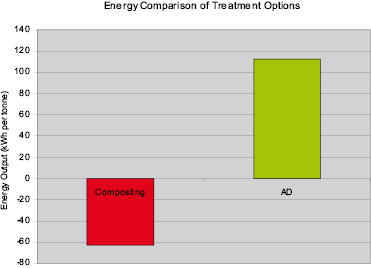
Given our current dependence on fossil fuels and the need to create more renewable energy locally, the evidence is now insurmountable for the rationale of using our organic wastes as a source of renewable energy. To do this efficiently we need to use AD and coincidentally we are fully complying with Landfill Diversion targets.
Likely innovations in AD
The innovation in AD is targeted at improving the quantity of (methane) gas that is given off from any given tonne of waste, and B9 are directly involved in a research project which shows significant potential for improvement.
Conclusion
Most organic wastes are in fact ‘wet’, highly volatile, and degrade easily (as illustrated under in the yellow zone) i.e. are naturally suitable for the AD process. This contrasts with incineration where much energy is needed to ‘burn’ off the water content to get the wastes dry enough to burn them - and that’s not efficient (compared to AD) but it works! To achieve energy efficiency Thermal treatment should only be used on wastes that are not ‘wet’ (as illustrated under in the orange zone)
Historically waste management policy has ignored the ‘energy balance’ of waste treatment options. The rising cost of fossil fuels coupled with concern over energy security means it is no longer tenable to limit waste management options to compliance issues alone. The energy issue associated with waste management must be properly accounted for. When this is done the net energy available from AD is the key decision maker in choosing this technology in preference to ‘energy using technologies for the treatment of organic waste.
Organic Fraction of Waste Streams
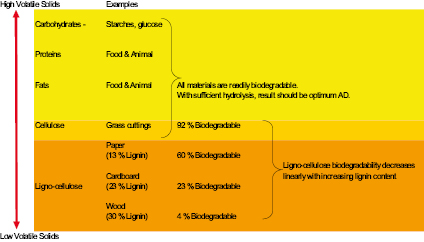
Carbon Trust

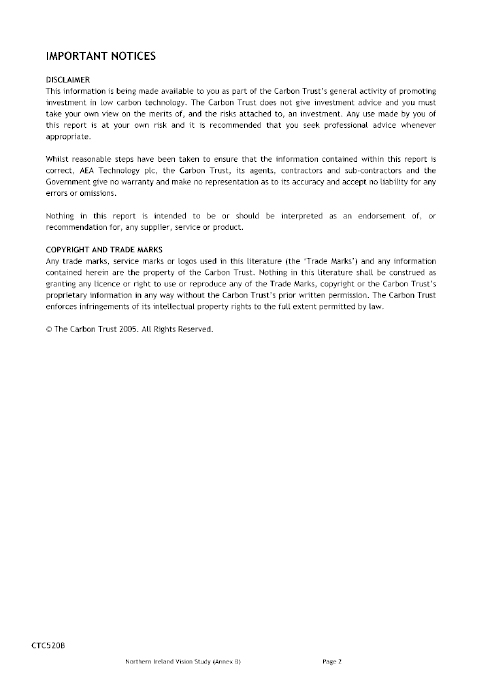
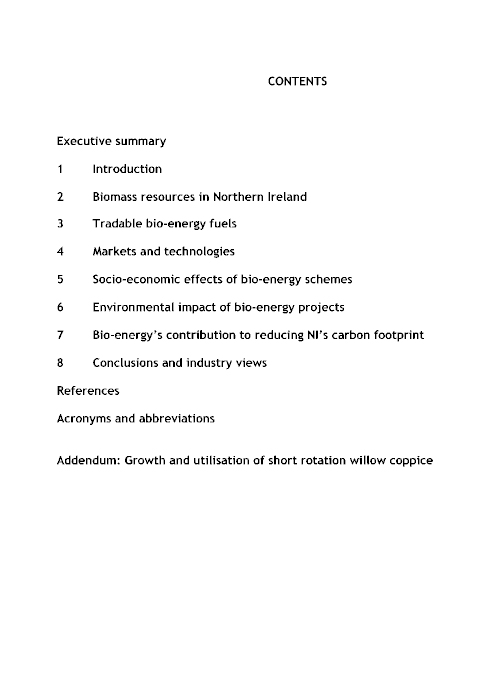
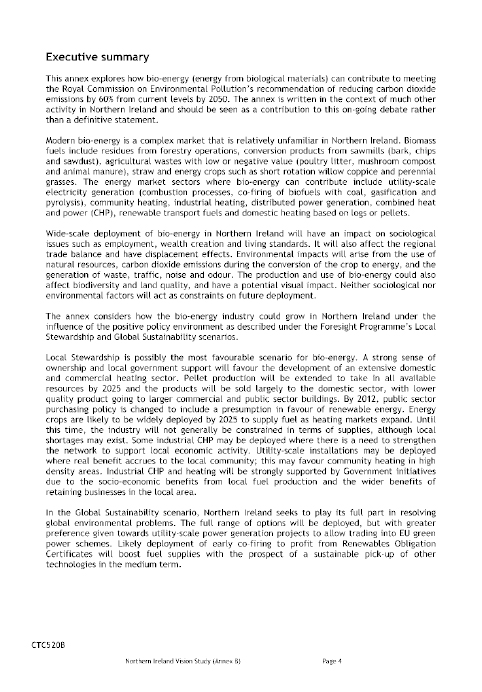
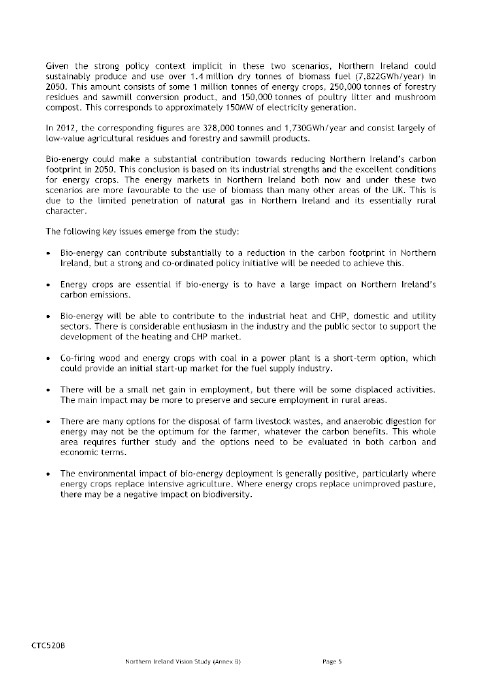
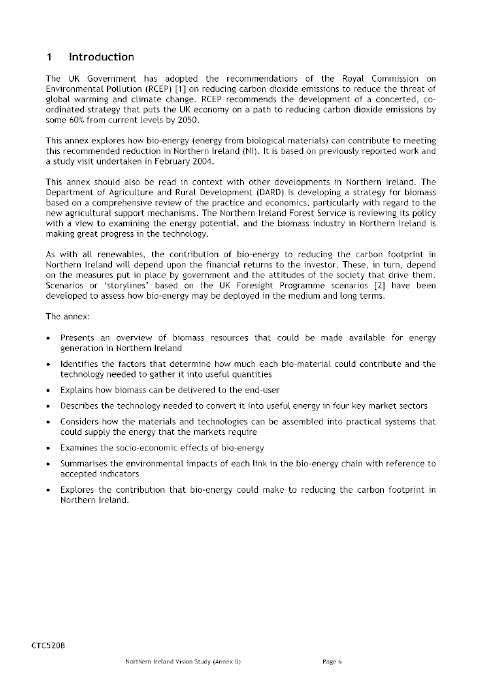
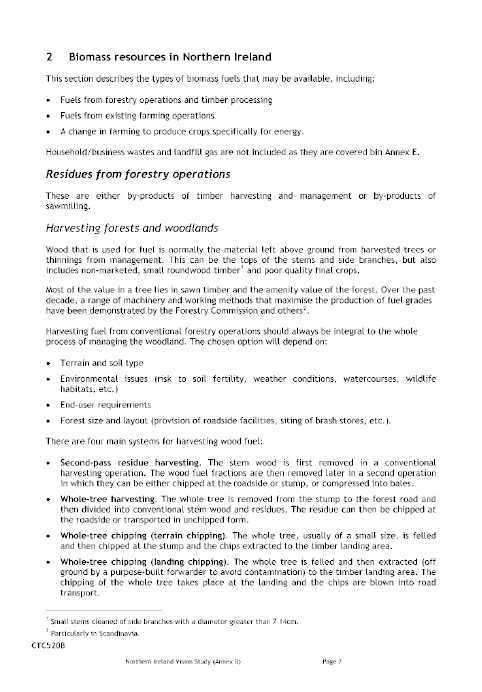
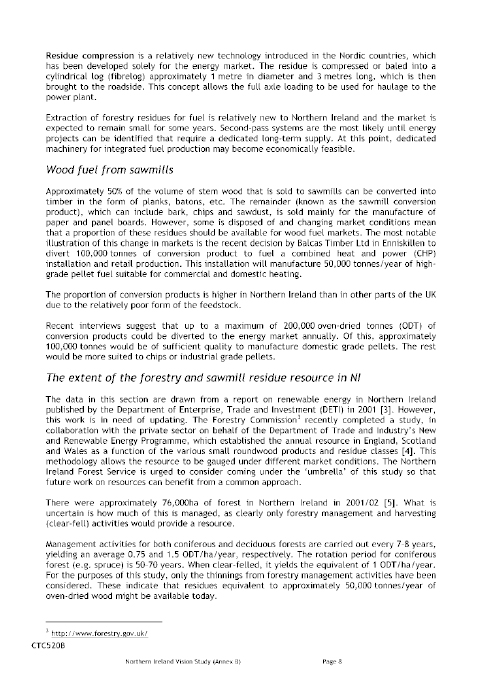
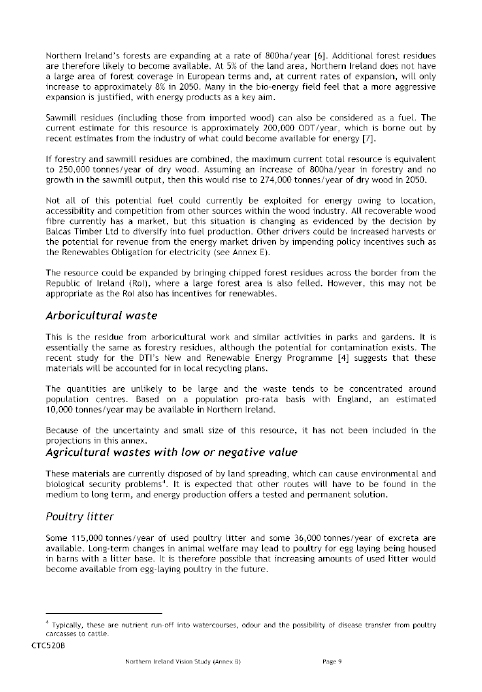
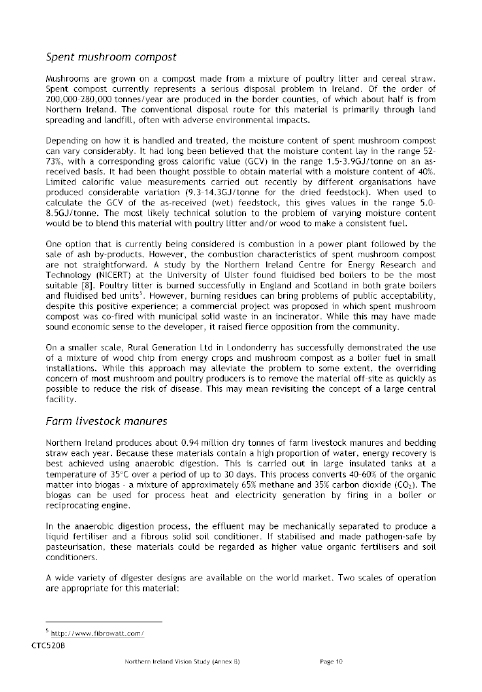
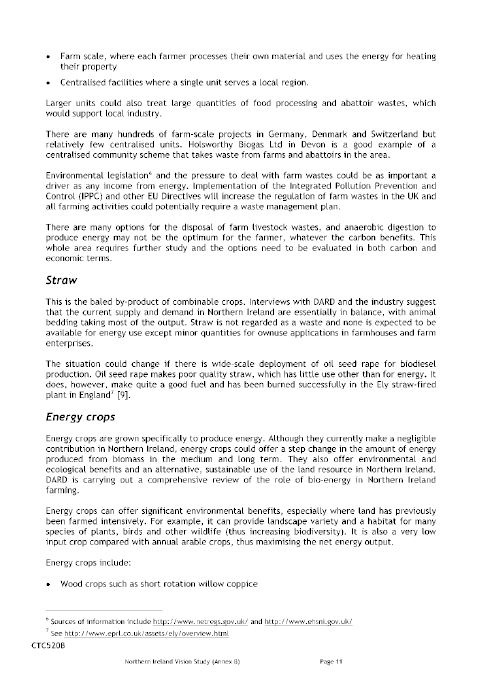
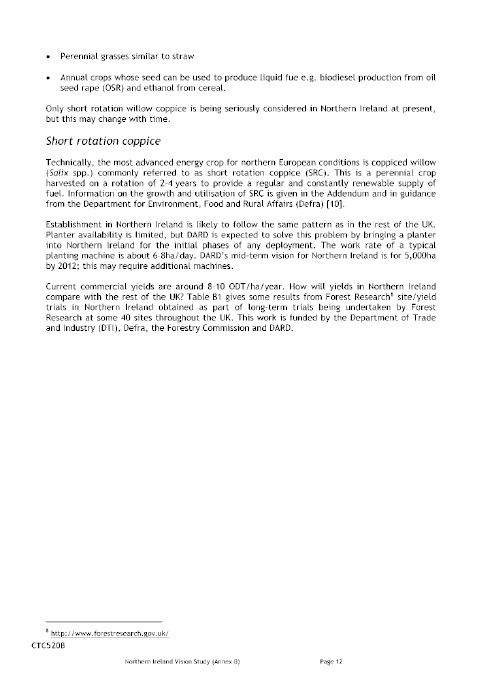


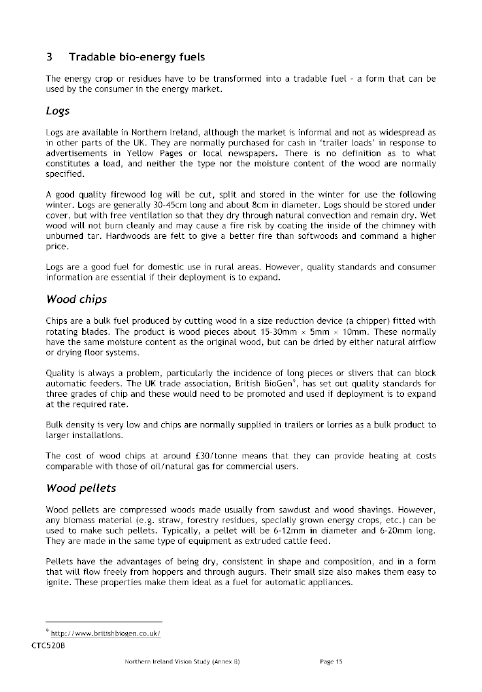


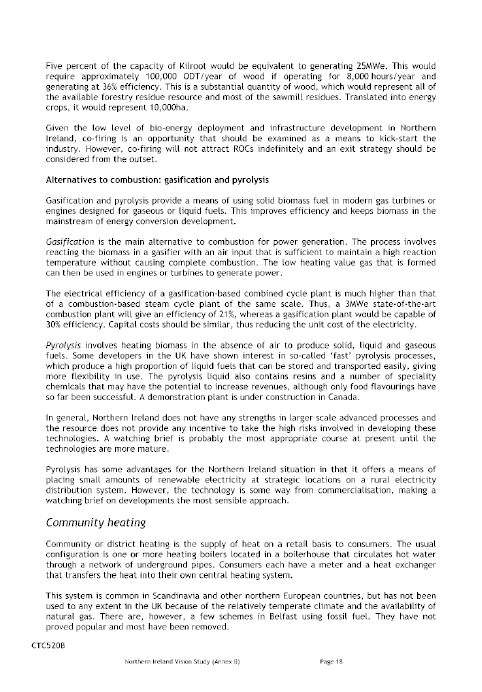
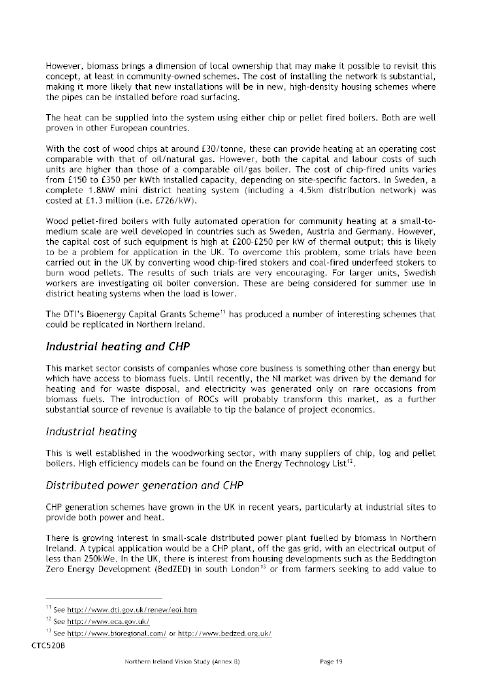


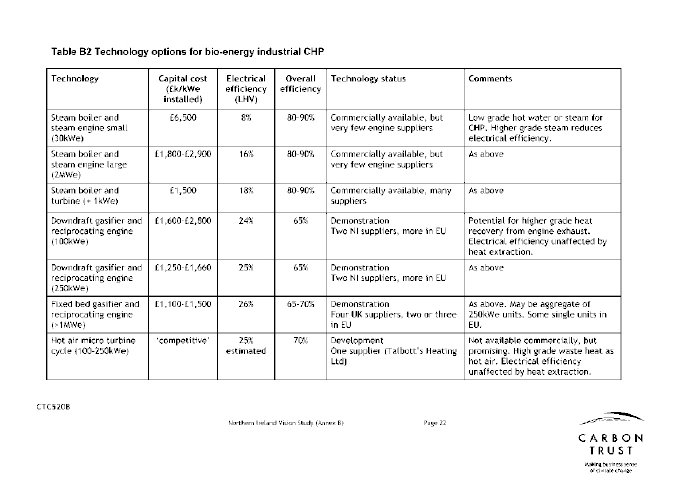
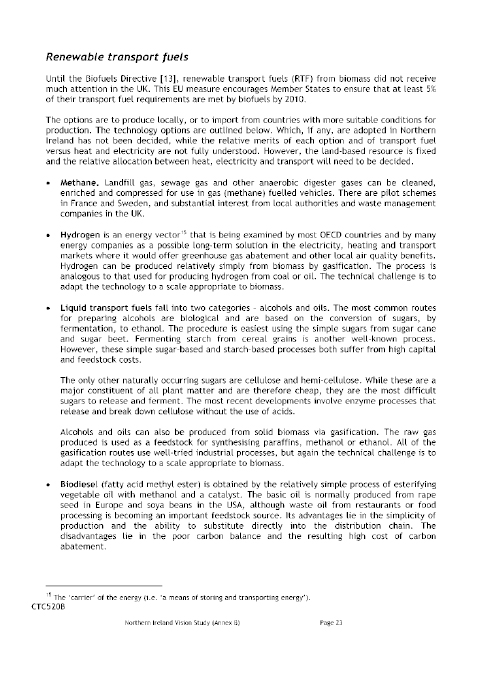

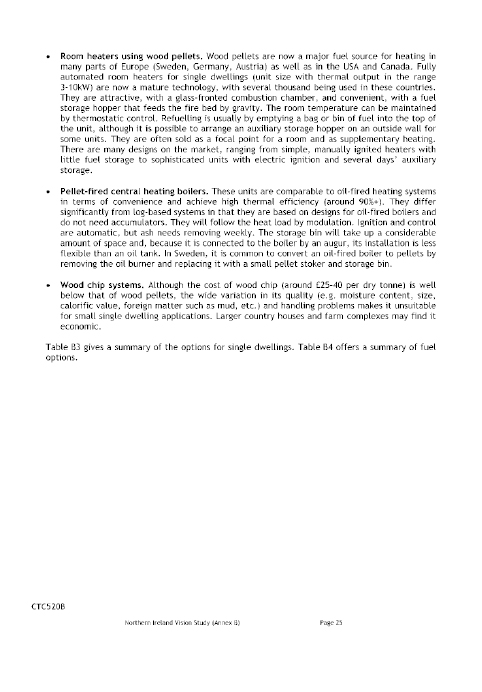
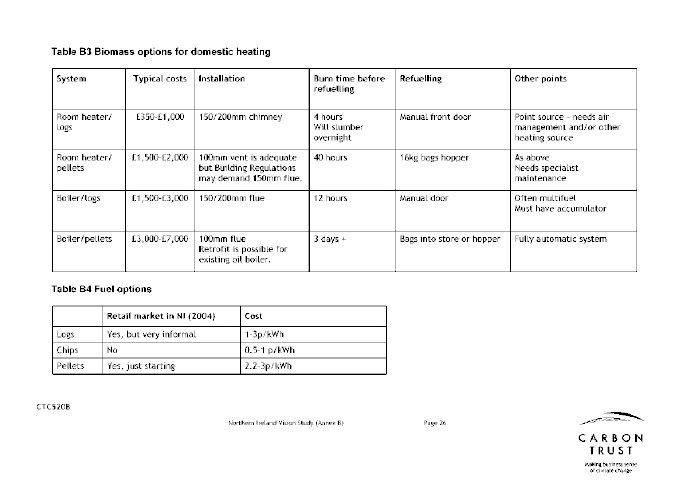



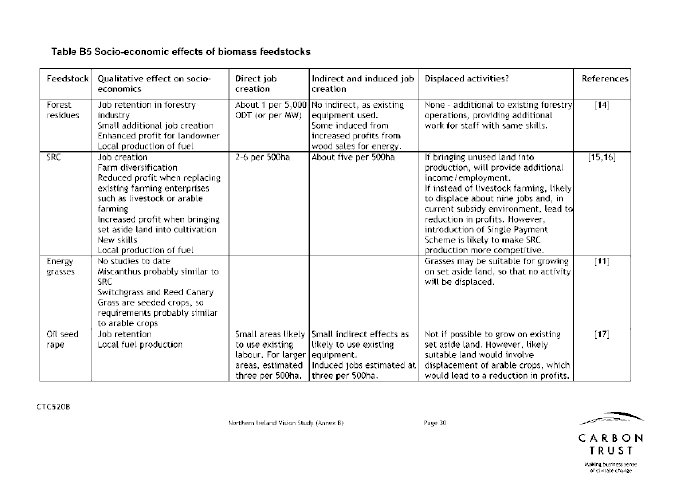
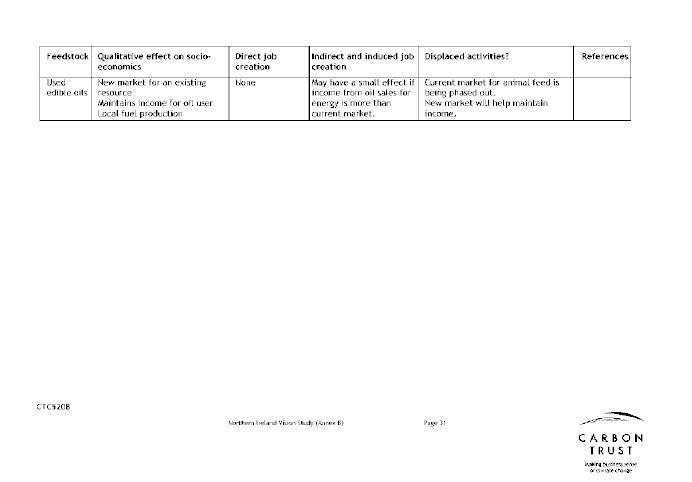
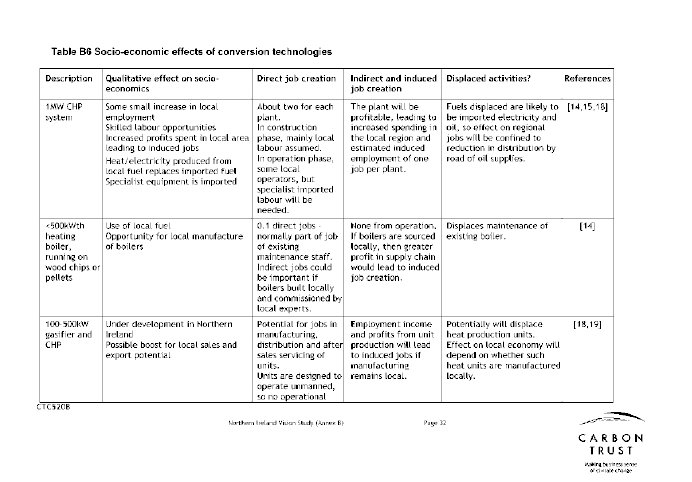



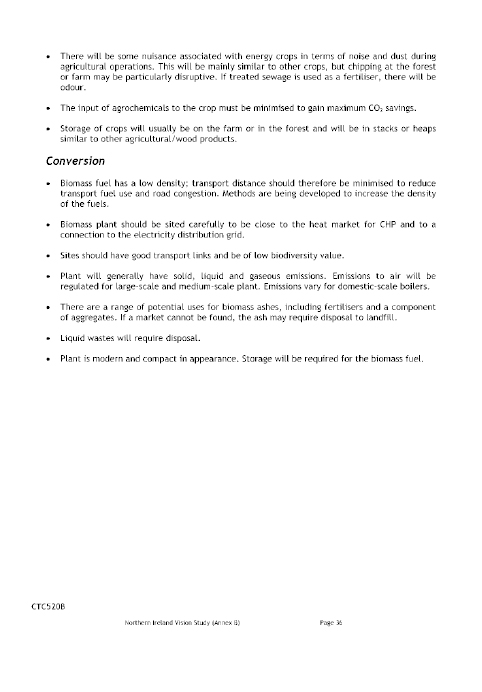
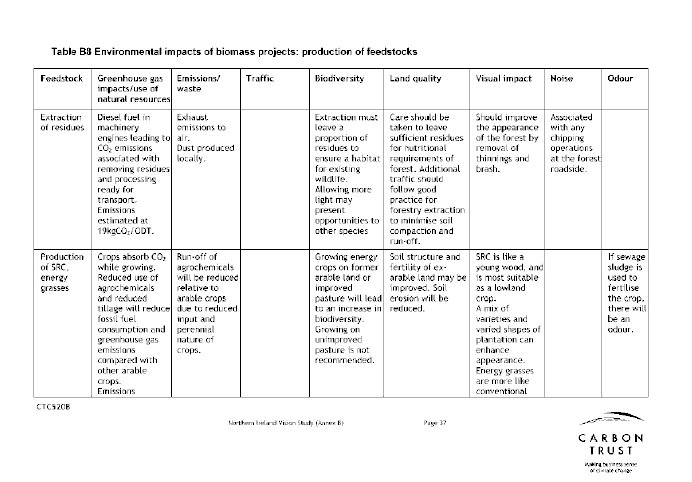

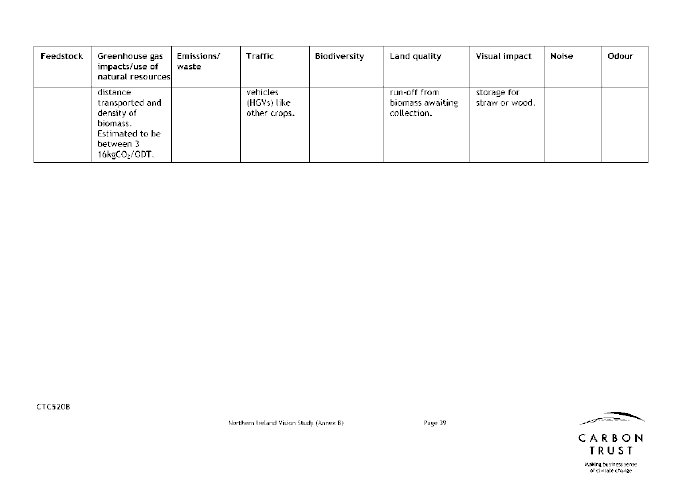
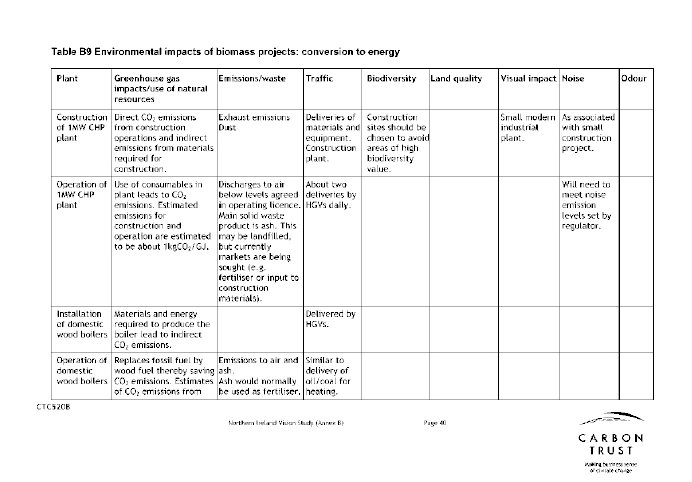

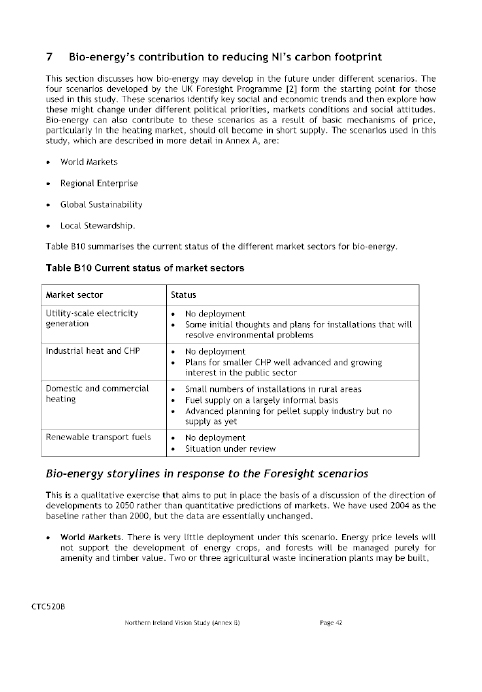
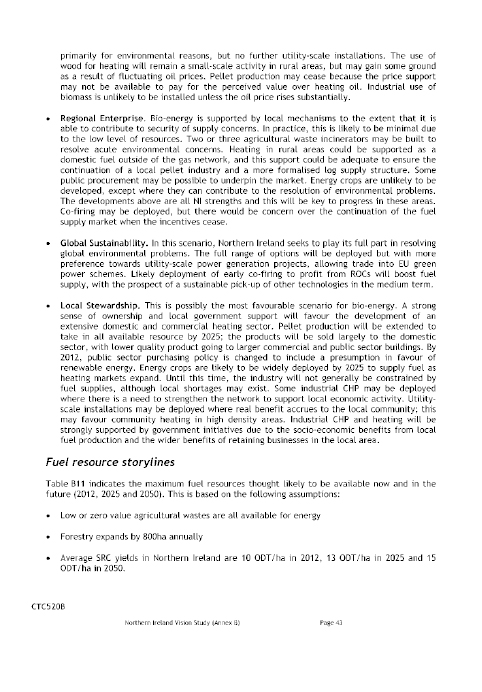

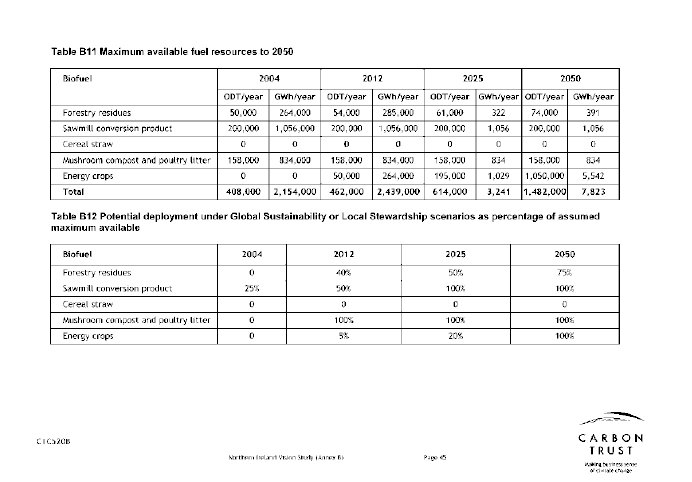
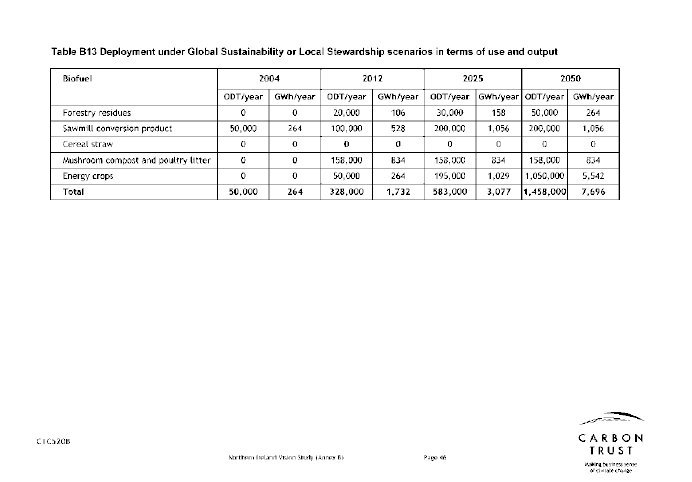
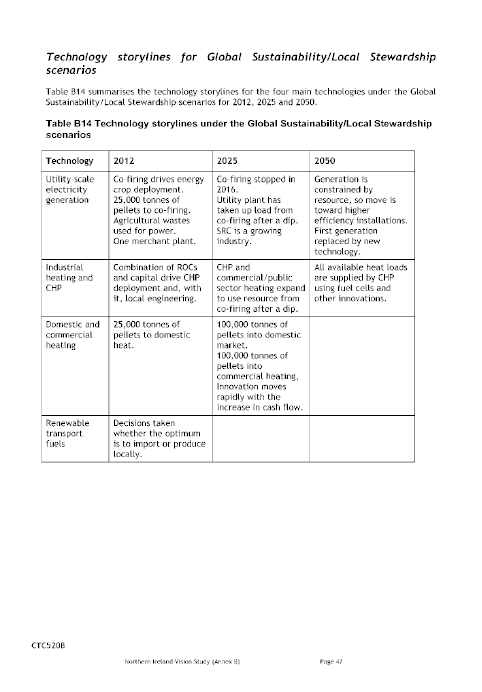
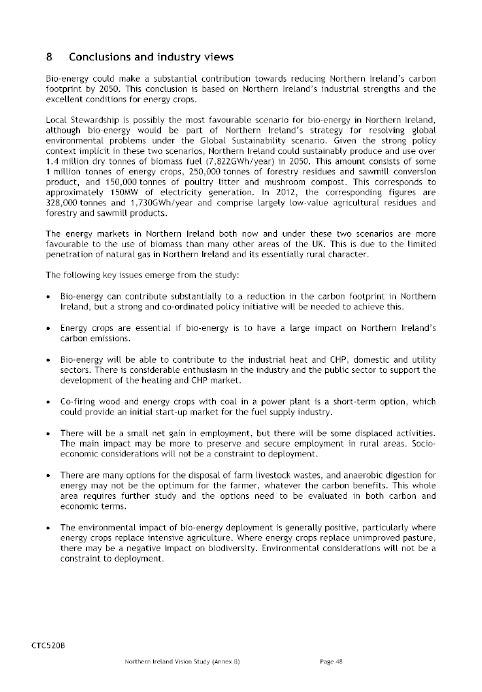
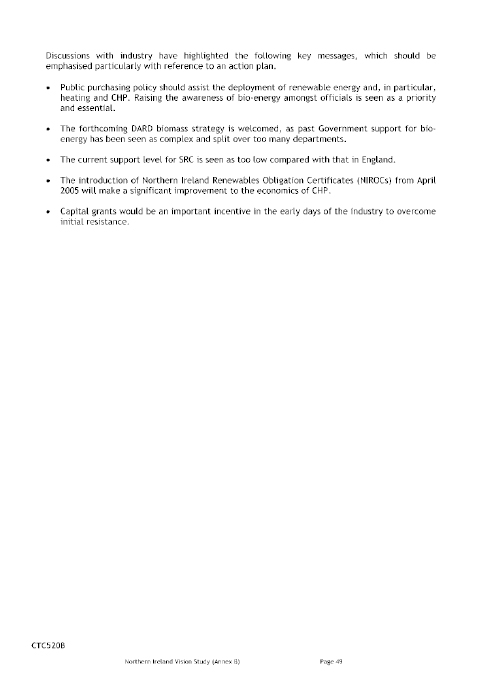
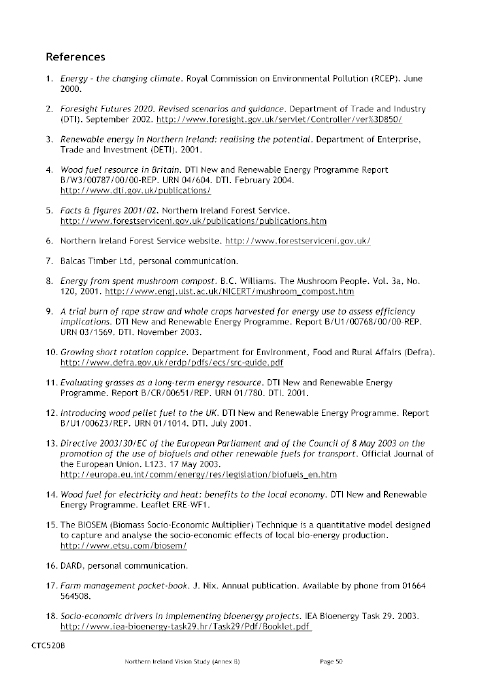





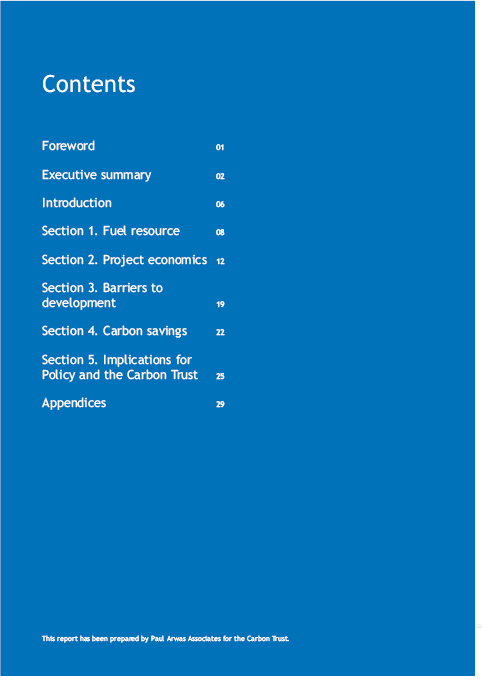


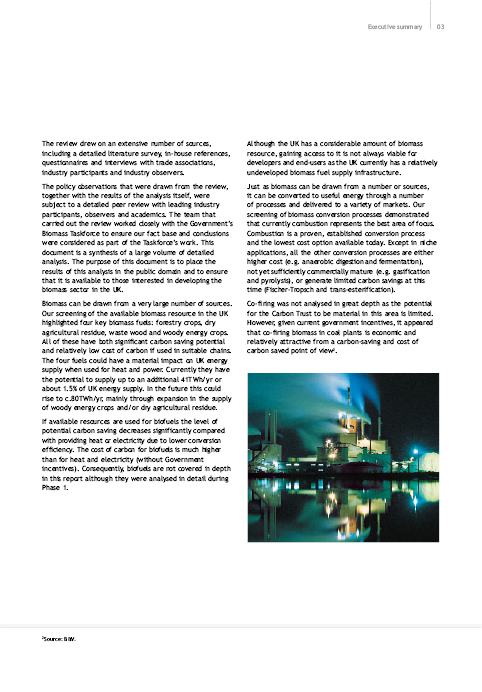
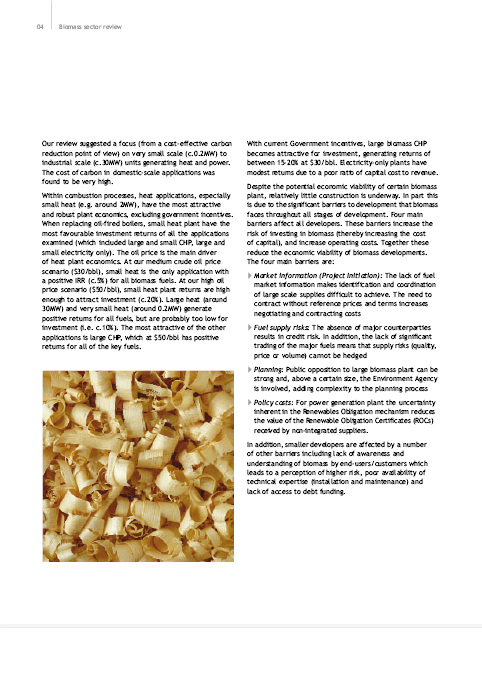
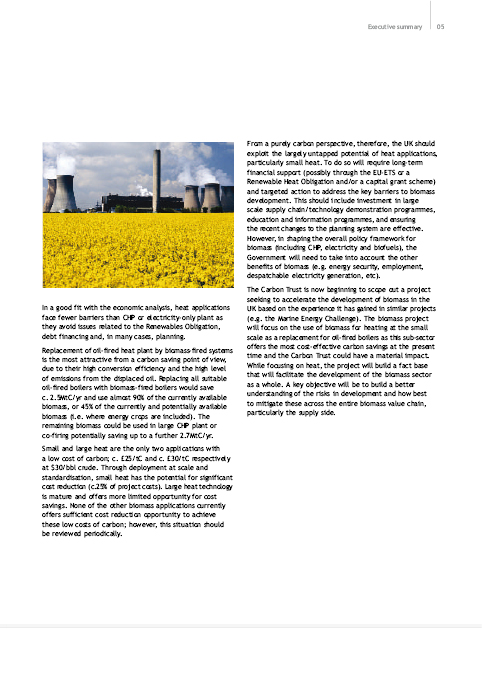
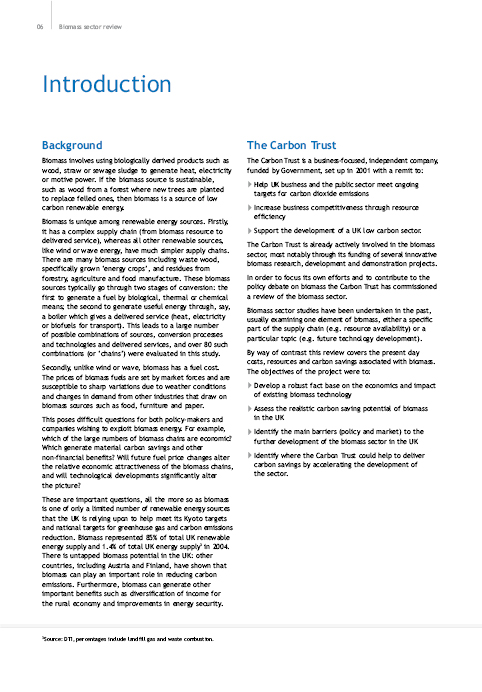


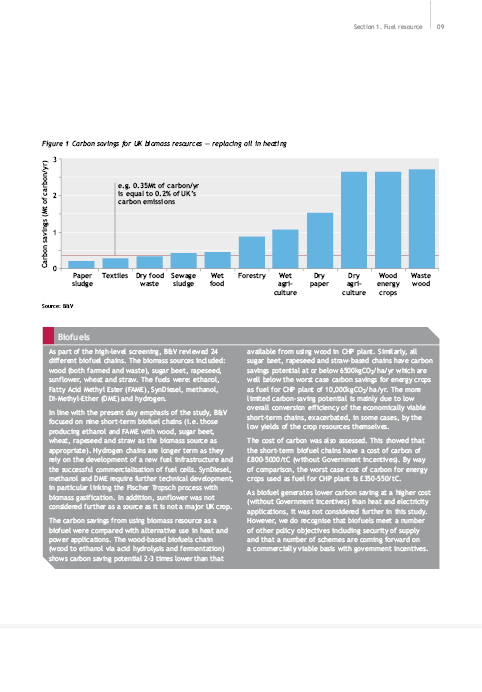
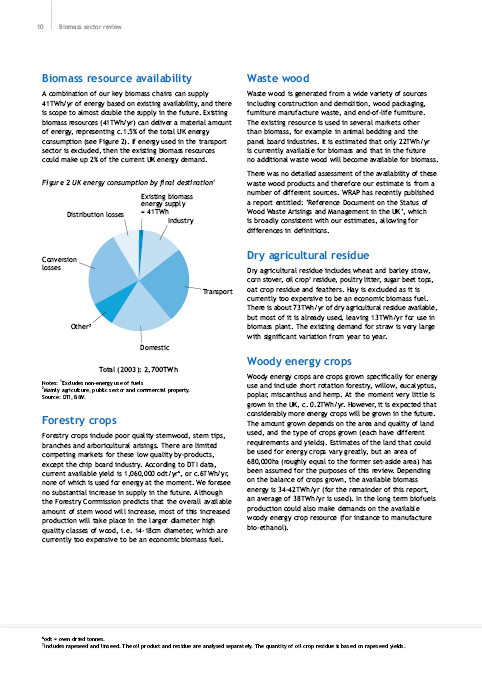
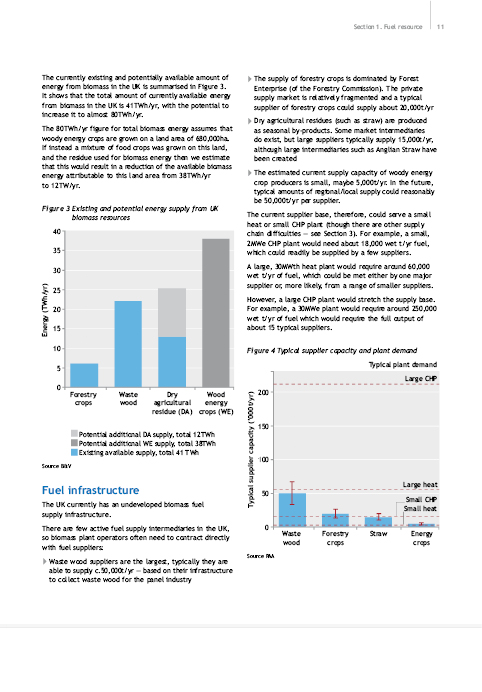

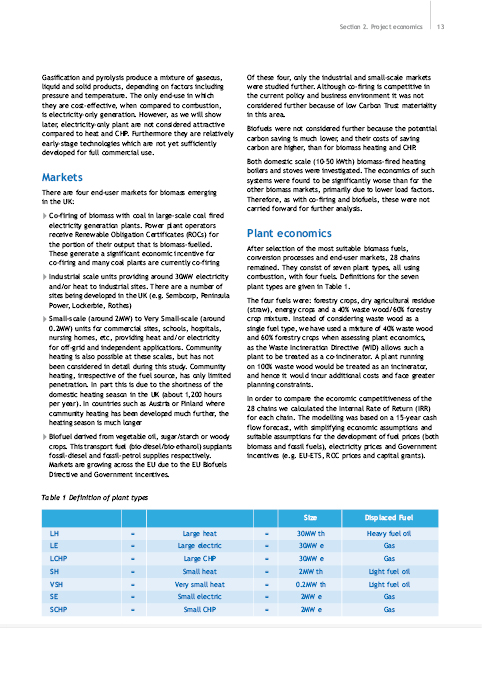
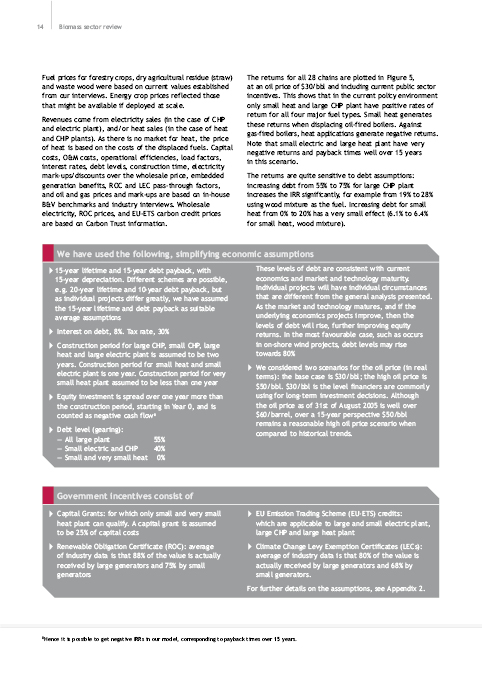
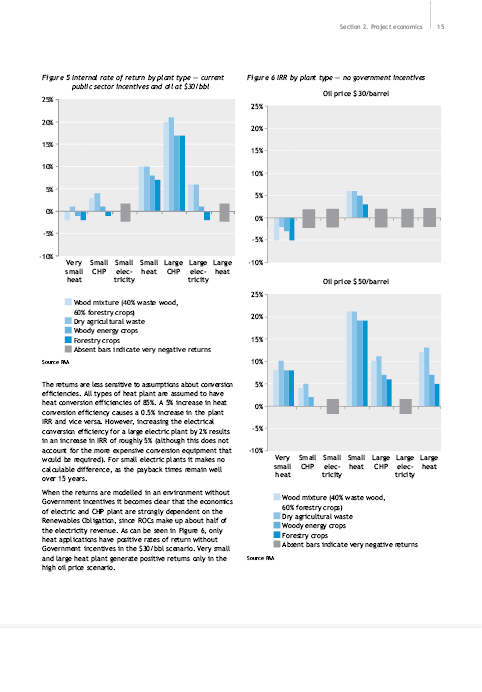
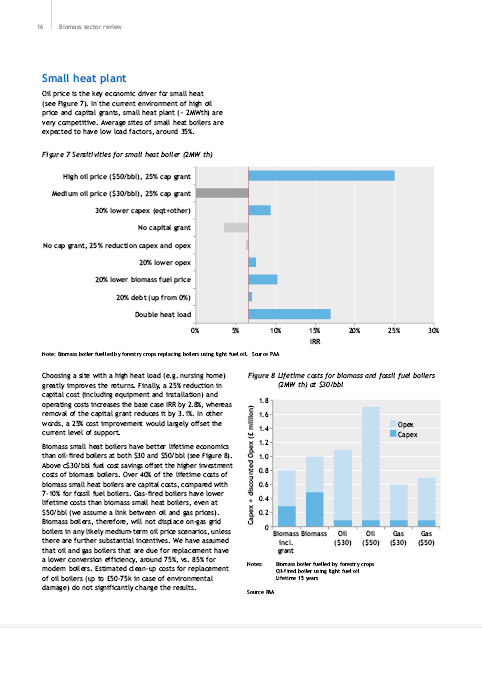

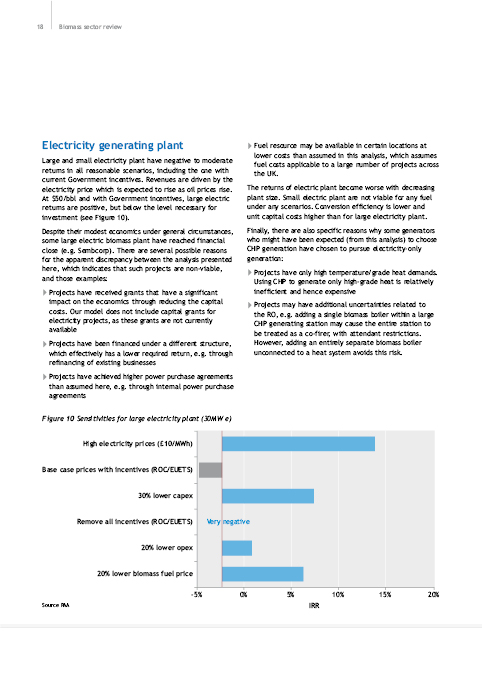

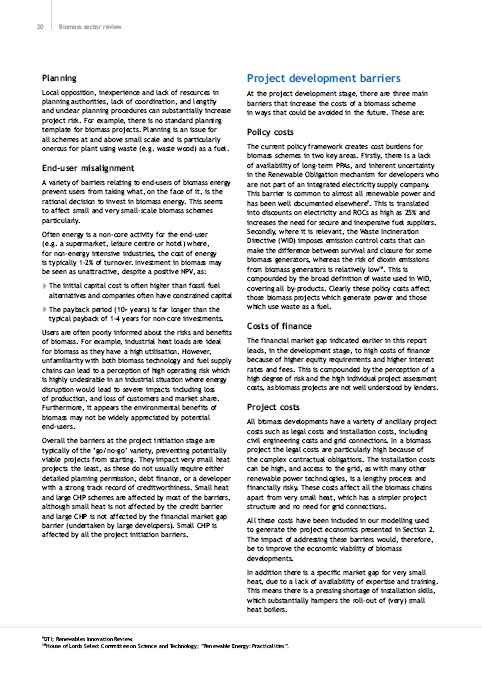
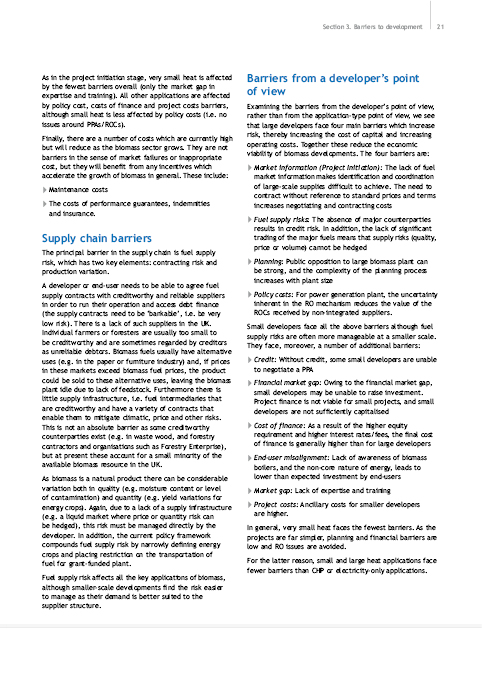
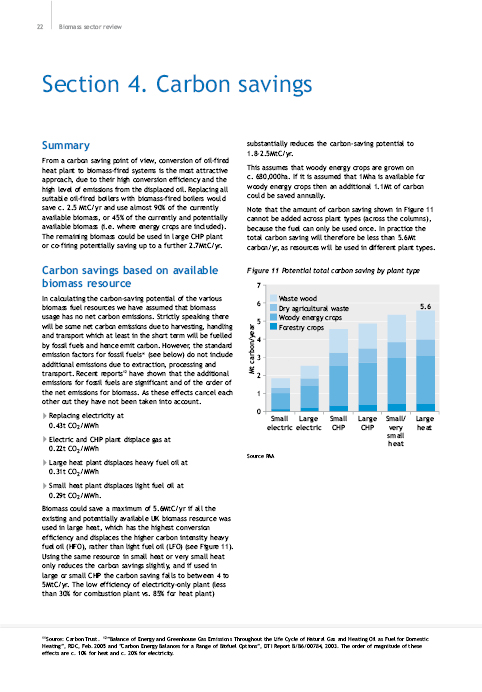
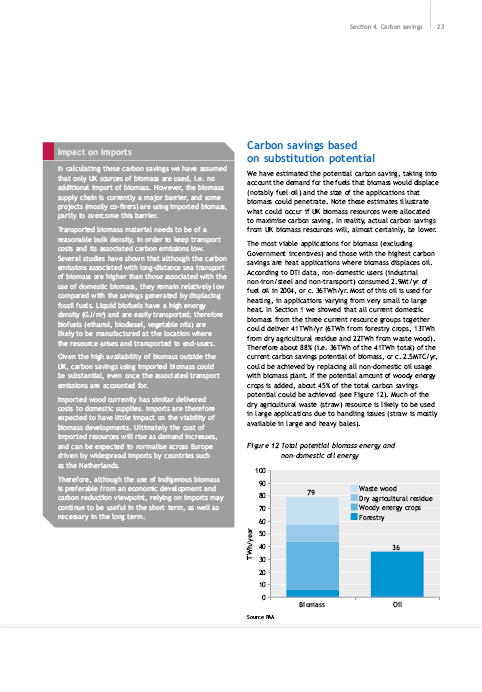

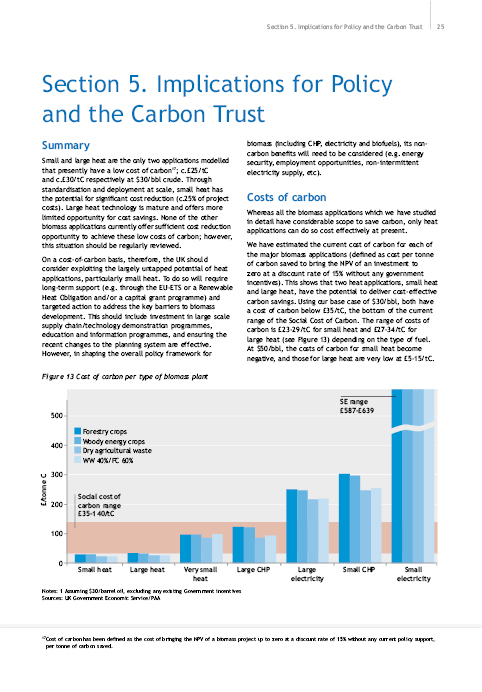
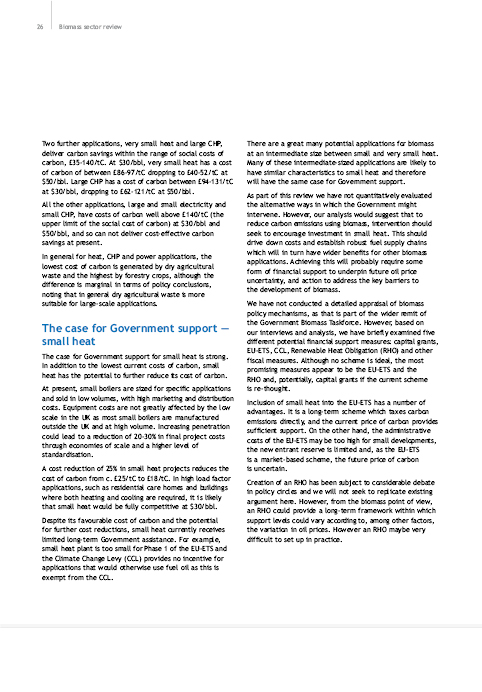
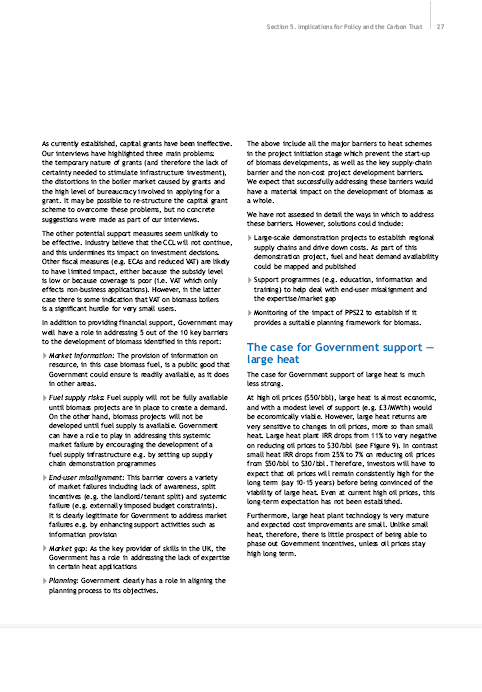
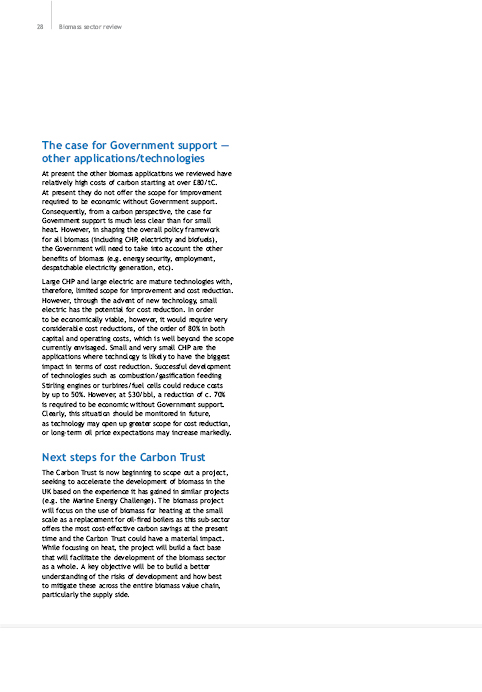

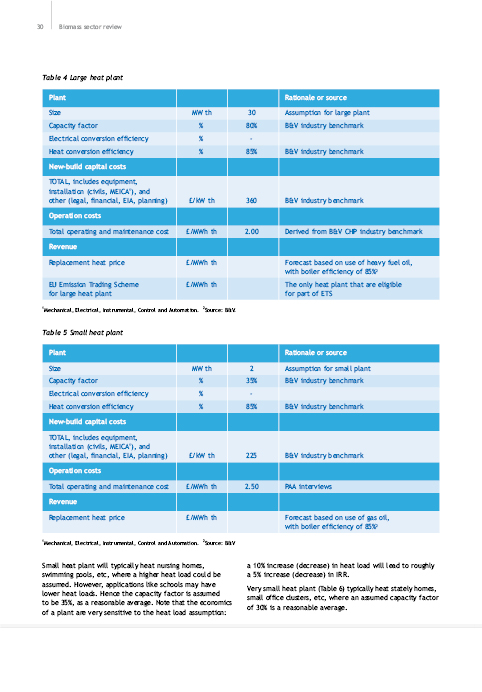


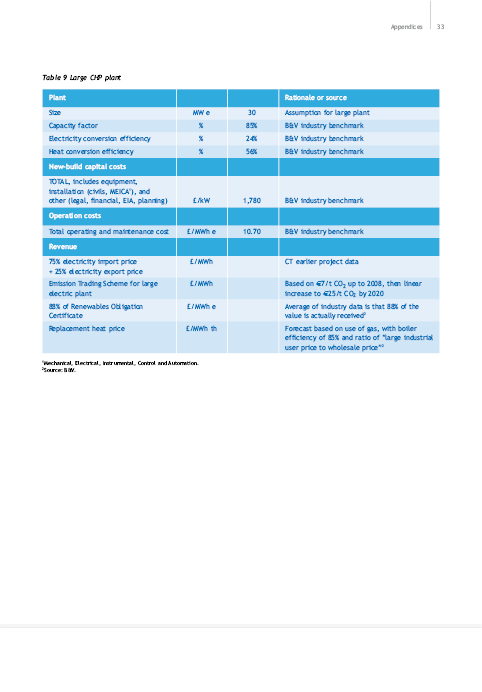


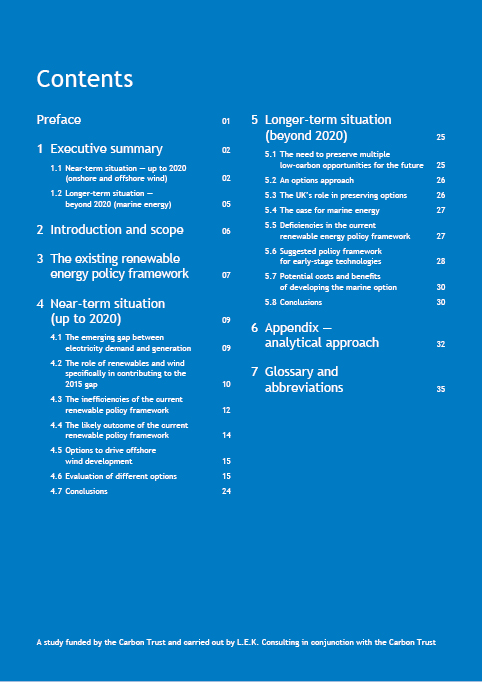
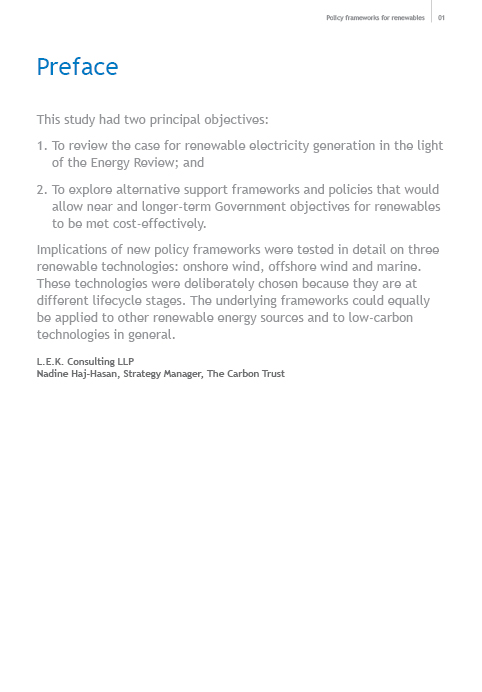


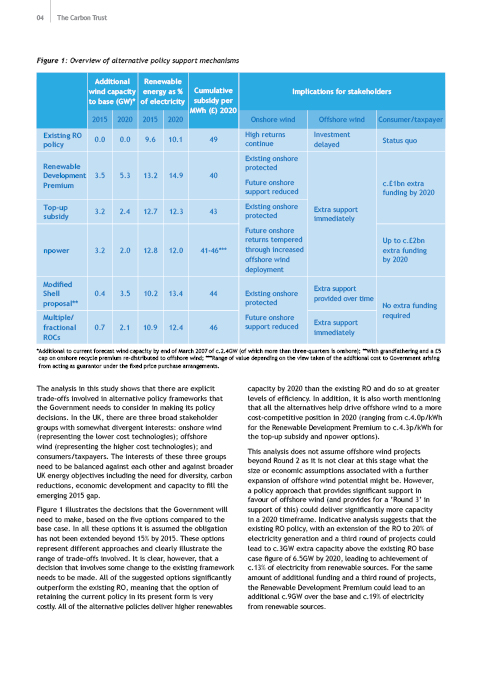

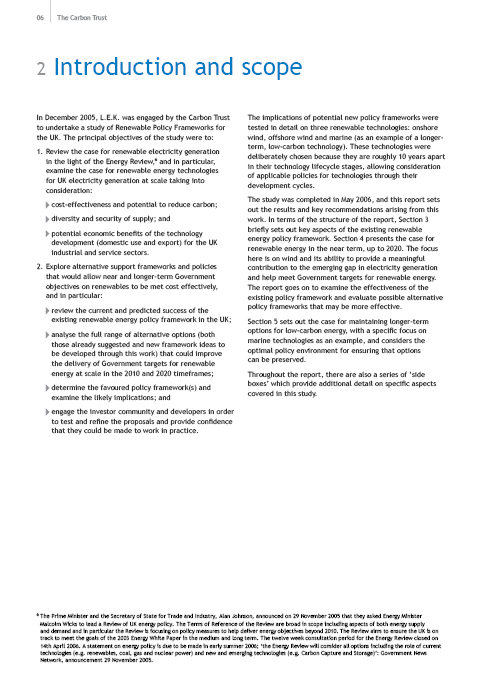
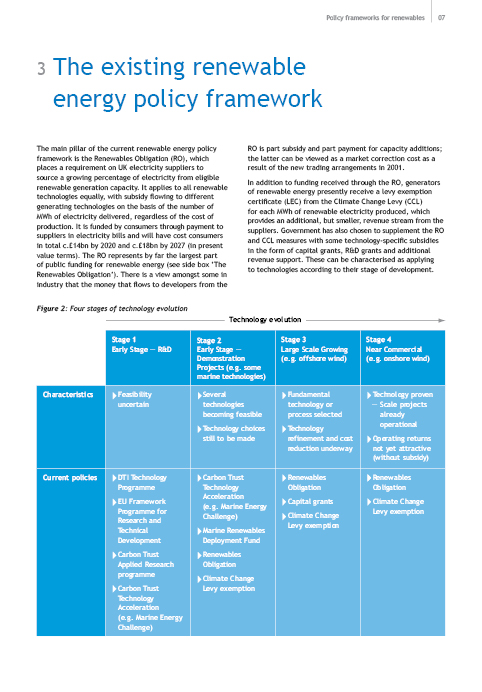
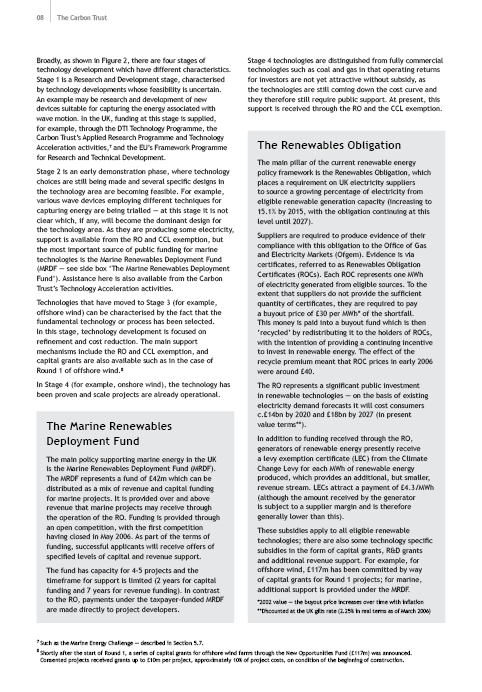
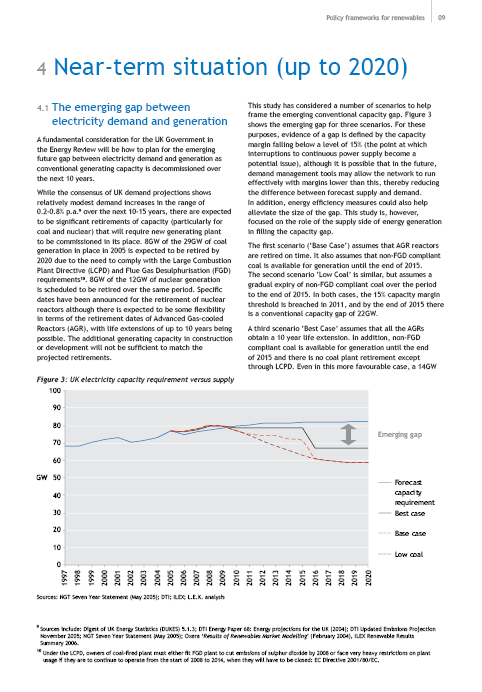
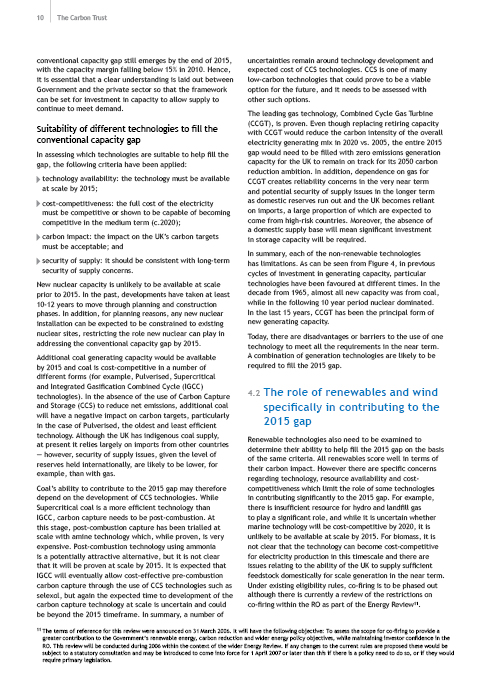

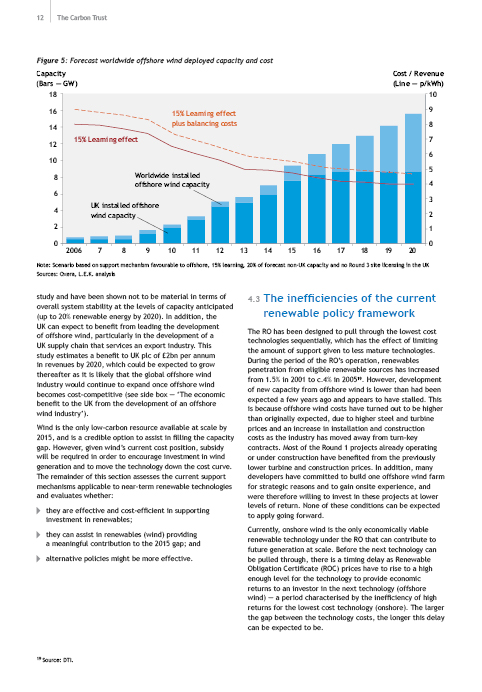
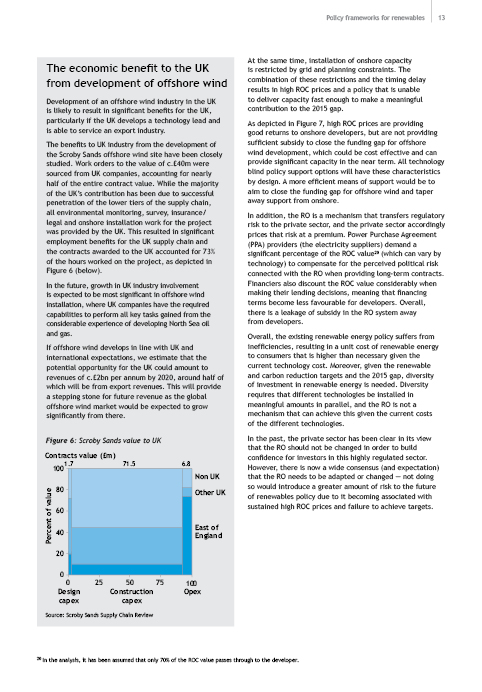


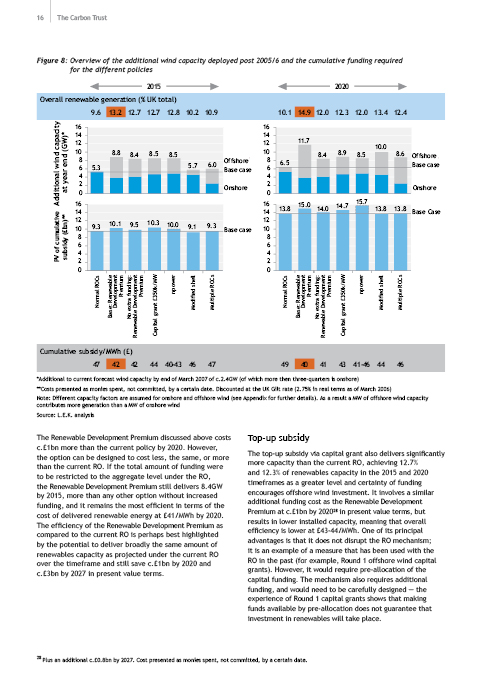
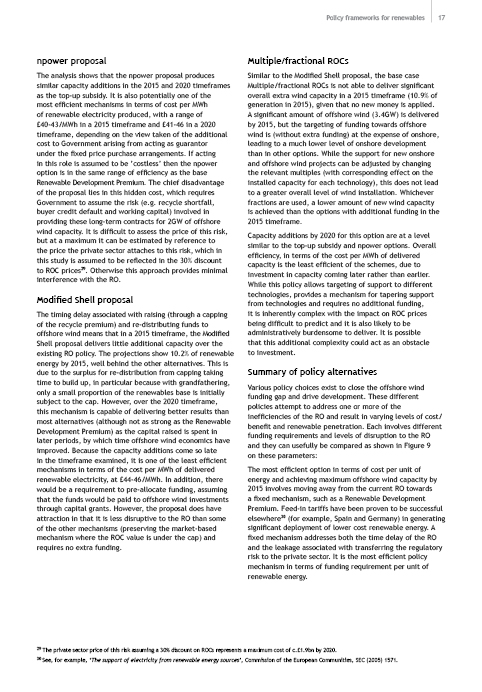
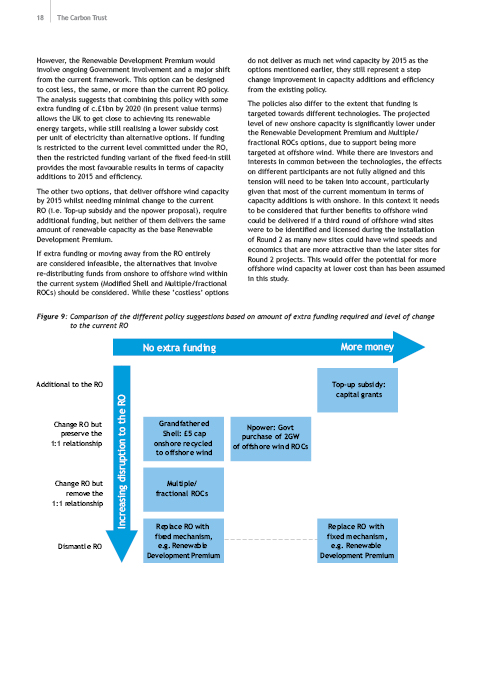
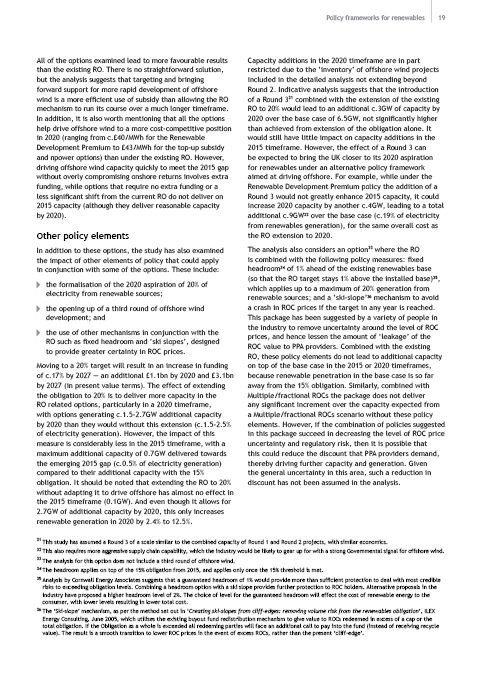
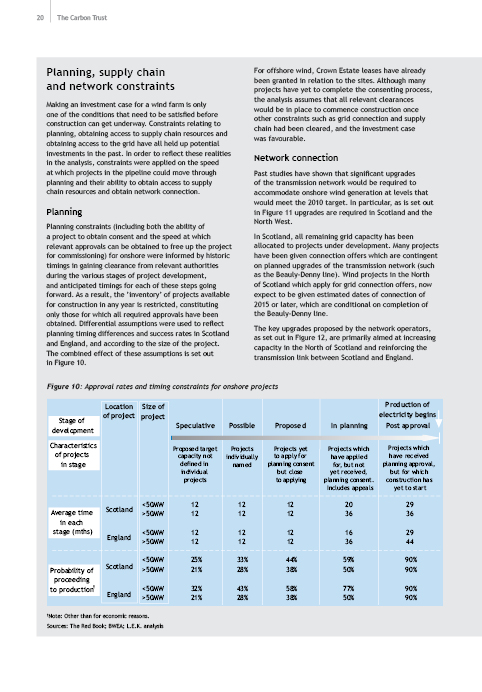
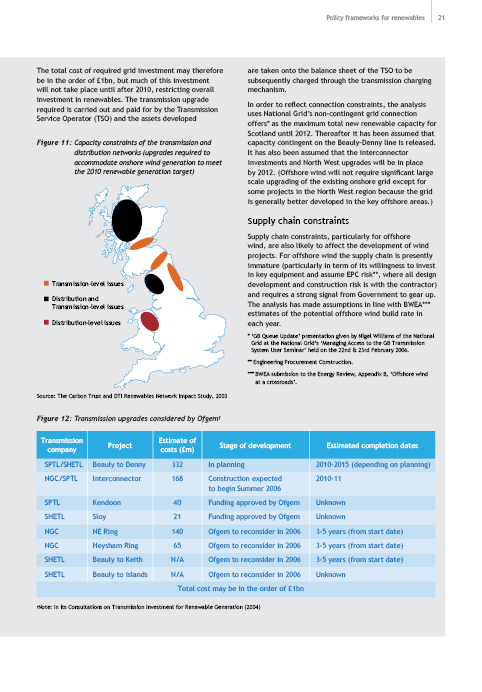
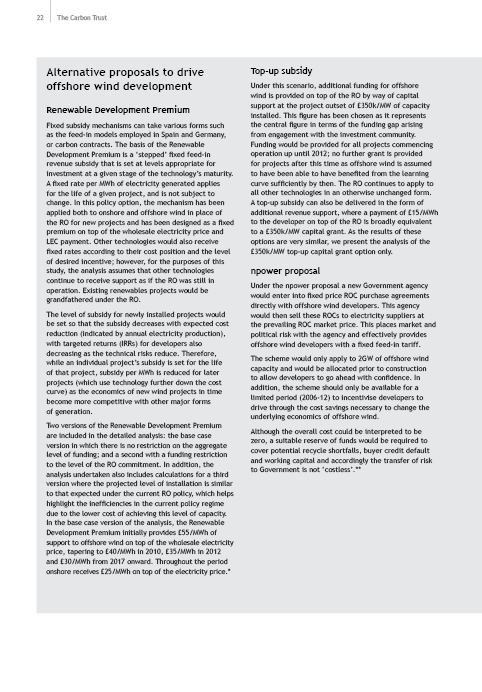

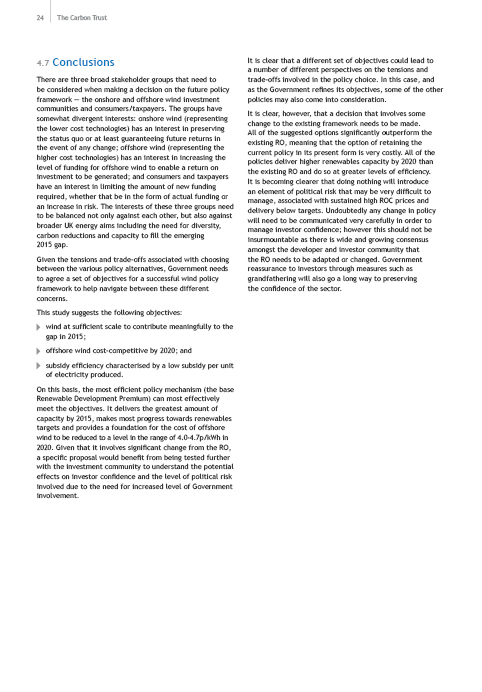

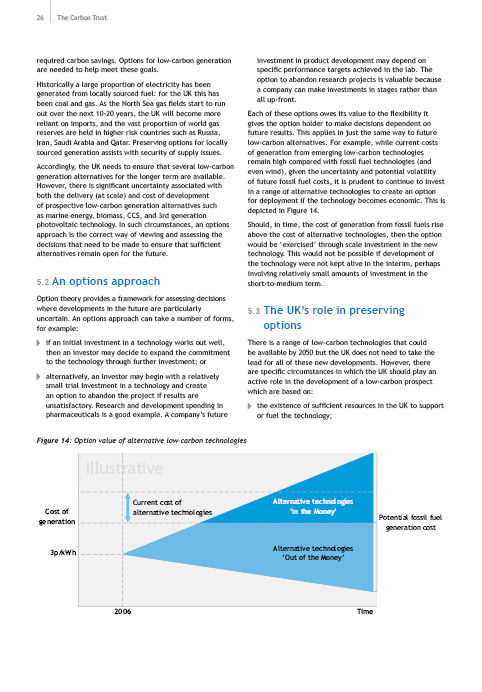

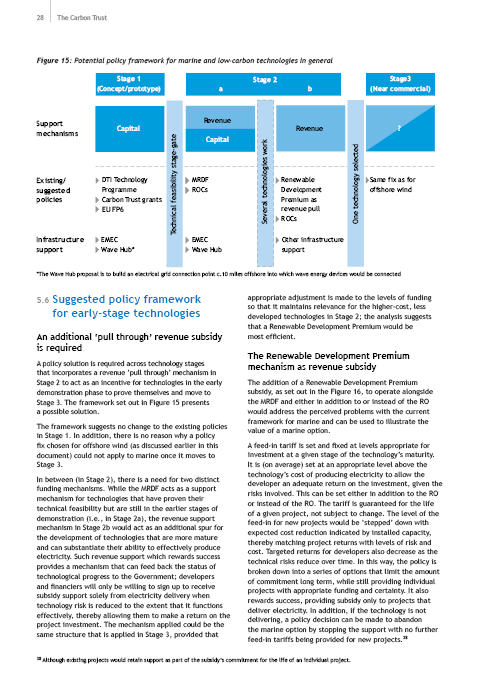
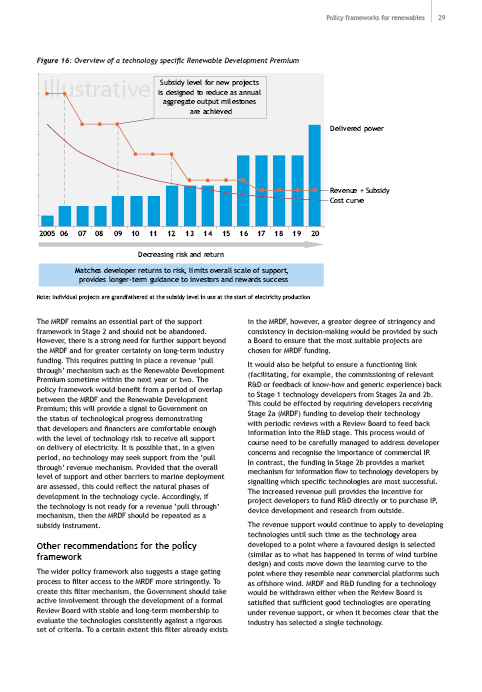
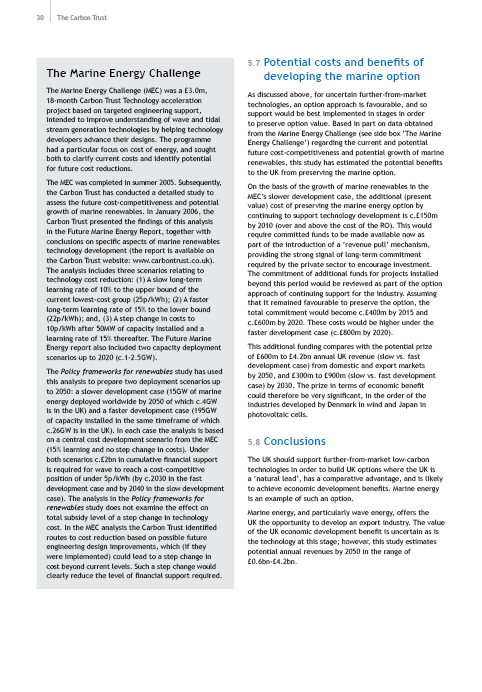
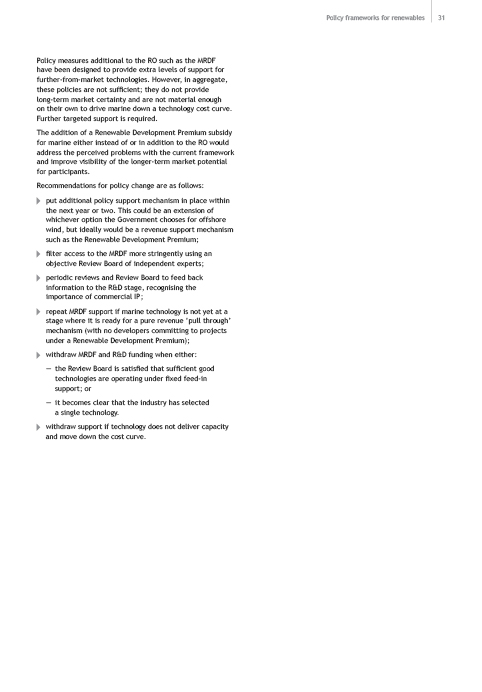


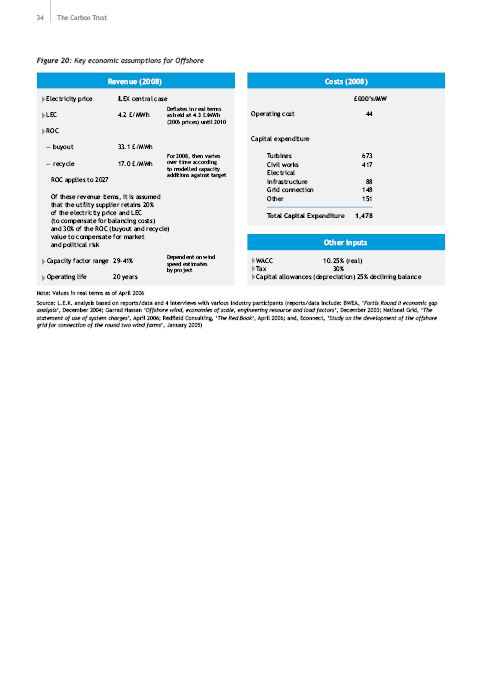

Committee of Culture, Arts and Leisure
Dr Wm McCrea MP MLP
Committee for Agriculture and Rural Development
Room 284
Parliament Buildings
Stormont
Belfast
BT4 3XX
Dear
Thank you for your letter of 8 January 2008, forwarded to me by Barry McElduff MLA, inviting a response to the Agriculture and Rural Development (ARD) Committee’s inquiry into Renewable Energy/ Alternative Land Use.
The ARD Committee may wish to be aware that low head hydro-electric facilities on rivers may, if inappropriately designed, impact upon fish migrations.
This issue was identified in the Culture, Arts and Leisure Committee Inquiry into Inland Fisheries in October 2001. The submissions received with regard to this matter at that time may be of interest to the ARD Committee. My Department has prepared a handbook ‘Protecting Fish: Guidelines for Water Abstractors’ and continues to use Sections 58 and 59 of the 1966 Fisheries Act to monitor water abstractors. DCAL also works closely with the Environment and Heritage Service to enforce abstraction and impoundment regulations.
Department of
Agriculture and Rural Development
Foreword
I am delighted to endorse the publication of the DARD Renewable Energy Action Plan. The Plan seeks to ensure that the schemes and services provided by DARD will enable farmers, landowners and the wider rural community to capitalise on the opportunities presented by renewable energy within the broader strategic context of energy policy, tackling climate change, waste management and sustainable development.
This Action Plan provides a sound platform to take forward an exciting new agenda. It expands on the principles set out in DARD’s Strategic Plan 2006-2011 published last year and will help guide the work of the Department in this significant and challenging area.
Its development has involved a lengthy and broadly based consultative process which reflects DARD’s desire to work with stakeholders to address current issues and future challenges in the most effective way. The key objective in this process has been to create opportunities for the land-based and rural sector which will realise the potential of renewable energy in a balanced and sustainable way.
I hope that this Action Plan can be taken forward and implemented by a local Minister on the basis of an inclusive approach to sustainable development and the linking of policies across Government. Its success will depend on leadership, active engagement and sustained, integrated effort across the public sector and the broad sweep of stakeholder interests.
This initial Action Plan represents a major initiative and a commitment to future development in an area that is evolving rapidly in terms of technology and the underlying policy framework. Some of its proposed measures are subject to EU approval of the new Northern Ireland Rural Development Programme and final decisions on the content of the EU Competitiveness Structural Funds Programme. It is, therefore, a work in progress that will need to be reviewed and updated to take account of all of these issues and to reflect the priorities and aspirations of an incoming Executive.
With that in mind, an early review date of April 2008 has been fixed. However, by launching this initial Action Plan now, I am seeking to inject and maintain momentum in this important new area of opportunity.
David Cairns, MP
Minister for Agriculture and Rural Development
Contents
Introduction x
Context x
Changes in Agriculture x
Climate Change x
EU Policy Context x
United Kingdom Policy Context x
Northern Ireland Policy Context x
Dard Work to Date on Renewable Energy x
Driving The Renewables Market in Northern Ireland x
The Scope of the Dard Renewable Energy Action Plan x
Actions to Support the Exploitation of Opportunities for Alternative Land Uses
and Sustainable Management of Agri- Food Waste Linked to Renewable Energy x
Actions to Underpin Knowledge and Increase Awareness of Renewable Energy Technologies x
Conclusion x
Appendix: Responses to Recommendations and General Comments x
Appendix: Responses to Recommendations and General Comments x
Copies of this document can be made available, on request, in alternative formats e.g. in large print, Braille, disc, audiocassette (for those with vision difficulties), and other languages. For copies please contact:
Fiona Browne on (028) 9052 4725,
via e-mail - fiona.browne@dardni.gov.uk ; or
by using the Department’s Textphone (028) 9052 4420
Introduction
1. The 2002 report, ‘Vision for the Future of the Agri-food Industry’, recommended that the Department of Agriculture and Rural Development (DARD), along with the Department of Enterprise, Trade and Investment (DETI), and the Department of the Environment (DOE), should take a ‘strategic approach to the development of sustainable energy systems at rural community level’. The Government’s response to the report, the Vision Action Plan, gave a commitment to review DARD’s policy in this area.
2. Therefore, an interdepartmental steering group was brought together to oversee the creation of a needs-based policy for the use of agriculture and forestry resources to assist the competitive and sustainable development of land-based renewable energy sources. To inform the development of a policy for renewable energy, a study was undertaken to investigate the potential for, and economic sustainability of, small scale embedded heat and power and heat-only systems in the rural economy. The potential of cropping for biofuels for transportation was also addressed. The study was completed in June 2004 and based on its findings, the steering group developed a set of recommendations for DARD to take forward. These were issued for public consultation in October 2005.
3. This initial Action Plan represents DARD’s response to those recommendations, including the feedback received from the public consultation. The development of renewable energy is, of course, a broadly based agenda that impinges on several important issues, such as climate change, diversity of energy supply, waste management and sustainable development. In drawing up this Action Plan, DARD recognises that DETI has lead responsibility for energy issues in Northern Ireland. More broadly, the Office of the First Minister and Deputy First Minister (OFMDFM) has lead responsibility for the implementation of the Northern Ireland Sustainable Development Strategy and the DOE for addressing climate change and waste management issues.
4. From DARD’s perspective, the DARD Strategic Plan 2006-2011, published in March 2006, provides the overarching framework that will guide the development of DARD’s evolving work programme in relation to the agri-food industry, animal health and welfare, the environment and broader rural development for the coming five years. Consequently, the Action Plan must sit within this overall framework and accord with the direction and principles stated in the Strategic Plan.
5. In developing a Renewable Energy Action Plan, DARD’s objective has been to shape a coherent support framework that will enable the land-based and rural sector to realise the potential of renewable energy and contribute to the delivery of targets for renewable energy production at a regional, national and EU level in a balanced and sustainable way.
6. DARD also wishes to promote efficient energy utilisation within primary agriculture which will reduce energy input costs as well as help meet carbon reduction targets and have a relevance right across the industry.
7. This Action Plan promotes “the opportunities afforded by the sustainable development of renewable energy in the agri-food and forestry sectors and wider rural economy” by exploiting existing technologies and by expanding the knowledge base within Northern Ireland through appropriately targeted research and development and technology transfer activities.
8. However, with the rapid evolution of the broader policy framework at EU, national and regional level, plus the evolution of technologies and the market, it is recognised that this Action Plan must be reviewed at an early stage in order to maintain its relevance. Therefore, a review date of April 2008 has been set for this purpose.
Context
Changes in Agriculture
9. Farming communities are facing continuing change, with fewer farms remaining economically sustainable in the absence of an additional external source of income and a continuing downward pressure on agriculture’s level of employment. Meeting the challenges that this creates requires diversification out of traditional agricultural activities and the growth of a stronger, more broadly based rural economy.
10. The agricultural industry is currently in the process of adapting to a fundamental change in the system of EU support, which has radically altered the economics of agricultural production and the viability of specific agricultural enterprises. The full implications of this in terms of land use, particularly in the more marginal areas, are not yet clear. However, these changes are beginning to impact in a period when the possibilities for alternative land use are gaining greater prominence, not least in terms of energy production.
11. A move into energy crops could provide a new income stream for agriculture and help broaden its economic base. Agriculture in Northern Ireland today is dominated by grass-based enterprises, but this dominance has not always been so marked. For example, at the beginning of the Twentieth century, the cropped area was six times larger than it is at present.
12. This specialisation in grass-based enterprises was driven by economic forces. If viable markets emerge for energy crops and profit margins compare favourably with those of existing agricultural enterprises, then a move to a more diverse mix of land-based enterprises will emerge. In the early stages of such a change at least, farmers currently involved in the production of conventional arable crops are more likely to make this transition as they will have both the suitable land and husbandry skills needed to grow energy crops.
13. However, renewable energy technologies will also create opportunities for livestock farmers. With an increasing emphasis on sustainable waste management and minimising the environmental footprint of agriculture, the use of technologies such as anaerobic digestion may enable livestock farmers to convert what are now largely regarded as costly waste streams into a possible source of revenue (or, at a minimum, to reduce the cost of sustainable waste management).
Climate Change
14. Climate change, brought about by increasing atmospheric concentrations of carbon dioxide and other heat-trapping greenhouse gases, has been described as “the most severe problem that we are facing today”[1]. The burning of fossil fuels is the primary cause of increased atmospheric carbon dioxide concentrations - thought to be responsible for up to 80% of annual global carbon dioxide emissions.
15. International recognition of the global impact of increasing carbon dioxide emissions has come in the form of the Kyoto Protocol. At the United Nations Framework Convention on Climate Change in December 1997, a significant number of industrial countries committed to cut combined emissions to 5% below 1990 levels by 2008-2012. EU countries committed to an 8% reduction in emissions.
16. In responding to this challenge, the UK Government has made a commitment to reduce greenhouse gas emissions by 12.5% by 2008-2012 and to move towards a target of a 20% reduction of carbon dioxide by 2010.
17. It has been suggested that climate change in Northern Ireland could see average temperatures rising by between 2°C and 4°C by 2080, with summers being 50% drier and winters 25% wetter. Other possible effects include a lengthening of the growing season, a reduction in the number of snow days and a greater likelihood of extreme weather events, e.g. floods and drought.
18. The potential impact on the rural economy may include changes in crops and cropping patterns, increased pressures from pests and diseases and more weather-related damage.
19. Alternative, carbon reducing or neutral energy technologies will be key to lowering greenhouse gas emissions. Allied to the need to cut emissions of greenhouse gases is the need to ensure a sustainable energy supply in the future. Renewable energy resources will help form part of a portfolio of technologies that will provide the means of responding to these challenges. A number of these technologies offer the Northern Ireland agri-food industry the potential to play its part in this process.
EU Policy Context
20. A number of policy initiatives at EU level are proactively driving the renewable energy agenda:
- The EU Renewables Directive aims to encourage the promotion of electricity from renewable sources so that the overall EU target of 12% of energy from renewables (22% of electricity consumption) is met by 2010.
- The EU recently launched its Biomass Action Plan to increase the development of biomass energy from wood, waste and agricultural crops.
- The establishment of the European Union Emissions Trading Scheme (ETS) has also created a market mechanism by which carbon dioxide emissions can be traded, thereby providing a strong economic instrument to support the production of renewable energy, including that from biomass.
- EU Directive 2003/30/EC (the ‘Biofuels Directive’) set minimum indicative percentages (2% by the end of 2005, rising to 5.75% by the end of 2010) of petrol and diesel for transport to be replaced by biofuels in all Member States.
21. More recently, the EU Commission, in its ‘energy for Europe’ package, has made proposals to reduce greenhouse gas emissions at least 20% below 1990 figures by 2020. To help meet the new targets, the Commission has proposed that 20% of the EU’s energy should come from renewable sources, and biofuels should account for at least 10% of all transport fuel.
22. A number of other EU policy initiatives are also indirectly driving the renewables agenda. For example, the reform of the Common Agricultural Policy (CAP) has decoupled payments of subsidies to livestock and crops in favour of the Single Farm Payment Scheme. This allows farmers greater flexibility in terms of the crops they choose to grow, including energy crops. This may help facilitate realisation of the Biomass Action Plan goals. However, a central principle in the move to decoupled support was that future production decisions on the part of farmers would be driven by market forces alone. Therefore, the commercial viability of energy crops at farm level will be a key factor in the evolution of this sector. The reformed CAP includes a special payment for energy crops and the possibility of growing energy crops on set-aside land.
23. Apart from the CAP, a number of environmental Directives will also have an indirect bearing on the development of renewable technologies within the agri-food sector, specifically with regard to the sustainable management of waste:
- The Integrated Pollution Prevention & Control Directive employs an integrated approach to control the environmental impacts of certain industrial activities. The requirements of the Directive are similar in many ways to the requirements on processes subject to integrated central control under the Industrial Pollution Control (NI) Order 1997. However, there are two important differences:
- The Directive applies an integrated approach to a wider range of issues; and
- It requires that a wider range of environmental issues are taken into account, such as noise, energy efficiency, etc.
- The Water Framework Directive establishes an integrated approach to the protection, improvement and sustainable use of rivers, lakes, estuaries, coastal waters and groundwater within Europe. It impacts on the management of water quality and water resources and affects conservation, fisheries, flood defence, planning and environmental monitoring. It requires a control of all impacts - physical, polluting or otherwise - on water resources.
- The Nitrates Directive aims to reduce and prevent the pollution of water caused by nitrates from agricultural sources. It is designed both to safeguard current and future drinking water resources and to prevent wider ecological damage in the form of eutrophication (over-enrichment of nutrients in water).
All of these Directives will drive a greater focus on the sustainable management of waste streams. Some renewable energy technologies have the potential to play a part in addressing this issue, thereby offering an integrated approach to waste management and renewable energy production.
United Kingdom Policy Context
24. On a UK level, several initiatives are in place to promote the development of biomass energy systems, including the Department of Trade and Industry (DTI) sponsored Bioenergy Capital Grants Scheme.
25. The UK Renewable Transport Fuel Obligation (RTFO), which Government proposes to introduce with effect from April 2008, is intended to help deliver the objectives of the EU Biofuels Directive. Under this Obligation, 5% of transport fuel sold in the UK will have to come from renewable sources by 2010. It is expected that biofuels will be mixed in a 5% biofuel/95% fossil fuel blend to meet this target. Clearly, this initiative will create a sustained demand for biofuels (biodiesel and bioethanol) from the transport fuel industry.
26. The UK Biomass Task Force Report made a series of recommendations for the development of the biomass sector in England and Wales. The UK Government published a response to the Task Force Report in April 2006 in which it outlined the actions already, and still to be, taken to meet the recommendations set out in the report. Although the Biomass Task Force was aimed at England and Wales, the Government response included an Annex outlining the action being taken to develop and support the biomass industry in Northern Ireland. Work is now in hand to develop a UK Biomass Action Plan.
Northern Ireland Policy Context
27. There is a number of existing Northern Ireland strategies and policies which have a direct bearing on the future development of the local renewable energy sector.
28. Published in May 2006, the Sustainable Development Strategy for Northern Ireland: First Steps Towards Sustainability outlines Government’s commitment to tackling the challenges of sustainable development, thereby securing a better future for the present generation and protecting the interests of generations to come. It commits Northern Ireland to becoming more resource efficient, both in its production and consumption, to reducing waste and to looking more critically and imaginatively at how it generates and uses energy. It emphasises the need to build sustainable communities founded on economic prosperity and attractive, healthy and high quality environments, with greater community engagement and civic leadership.
29. It addresses 6 priority areas for action:
- climate change and energy
- sustainable consumption and production
- natural resource protection and environmental enhancement
- sustainable communities
- governance for sustainable development
- communication & learning
30. It is well recognised that, as well as reducing greenhouse gas emissions, energy efficiency will help to improve the competitiveness of businesses. In Northern Ireland, the Carbon Trust estimates that businesses and public sector organisations could save around £100 million per annum through the deployment of existing energy efficient technologies and practices. Clearly, improvements in energy efficiency represent a key step in the process of meeting Northern Ireland’s energy needs in a sustainable manner, and this applies as much to the agri-food sector as to other parts of the economy.
31. This Renewable Energy Action Plan is firmly rooted in the principles of sustainable development, and DARD-specific actions relating to the encouragement of renewable energy production have been included in “A Positive Step – Northern Ireland - A Sustainable Development Implementation Plan”, published in November 2006.
32. The DARD Strategic Plan 2006-2011 sets out a vision of a thriving and sustainable rural community. In order to achieve this vision, DARD has acknowledged that sustainable development will be a key driver of change over the next five years.
33. Within the context of the DARD Strategic Plan, the support framework described in this Renewable Energy Action Plan will help enable the Department to address some of the issues and challenges specific to rural areas and the land-based economy.
34. The Regional Development Strategy ‘Shaping our Future’ provides a comprehensive policy framework for the development of Northern Ireland to 2025, and dedicates a chapter to caring for the environment. An objective of the Strategy is to contribute to reducing the impact of global warming, both locally and globally, and to emphasise the importance of cutting environmental costs generally, by reducing the consumption of natural resources and energy from non-renewable sources.
35. Targeted demand reduction and the development of renewable energy sources is at the centre of Northern Ireland’s energy policy. This is also recognised as a major factor in environmental policy in terms of mitigating climate change and carbon reduction. In line with the overall climate change agenda and the Northern Ireland Sustainable Development Strategy, the Strategic Energy Framework, published in June 2004, places a firm emphasis on renewable energy generation and reduced environmental impact. The Environment and Renewable Energy Fund, announced in February 2006, committed resources specifically to realise the aims of the Strategic Energy Framework.
36. The DOE’s Towards Resource Management: The Northern Ireland Waste Management Strategy 2006-2020 sets out a clear vision for the development of renewable energy from waste facilities as part of the development of an integrated network of waste treatment and disposal facilities in Northern Ireland. This involves using material resources in a way that reduces the quantities of waste produced and, where waste is generated, to manage it in a way that minimises its impact on the environment and public health and contributes positively to economic and social development.
37. The above description of the policy context at EU, national and regional level illustrates the broad and complex policy arena in which the renewable energy sector is evolving. In developing this Action Plan, DARD has sought to create a support framework that will help deliver against the targets and objectives already specified, rather than create an additional layer of unnecessary complexity or duplication. Consequently, its central focus is to help the land-based sector and broader rural economy capitalise on the opportunities that are emerging in this area.
Dard Work to Date on Renewable Energy
38. DARD (and more recently the Agri-Food and Biosciences Institute - AFBI) already has a significant research base in renewable energy technologies extending back over many years and this is likely to remain an important element of DARD’s new research and development strategy (to be finalised in 2007). Research and development work has been undertaken locally on short rotation coppice willow (SRC) since the mid-1970’s. This has focused on the following five main areas to ensure that commercial developments are founded on a reliable knowledge base:
- Willow nutrition – studies have investigated the effect of fertiliser applications and the use of the coppice as a bioremediation system;
- Genotype evaluation - new genotypes are evaluated prior to their commercial release;
- Disease control - research has identified husbandry techniques to reduce the incidence of rusts, including the configuration of varietal mixtures in reducing disease impact;
- Willow pest control - work has investigated the biology of willow beetle and black willow aphid and appropriate methods of control, including the use of varietal mixtures; and
- Utilisation – research includes the co-ordination of production and conversion of short rotation coppice willow in a managed supply chain.
39. Specialist advice in a number of areas, including short rotation coppice, biogas and industrial crops, is provided to the agricultural industry, local councils, community groups etc. by the College of Agriculture Food and Rural Enterprise (CAFRE) and AFBI.
40. In 2004, DARD’s Forest Service established the three year Challenge Fund for SRC to increase the amount of willow grown for energy use in Northern Ireland. Energy crops received a special grant within the Woodland Grant Scheme, under the Northern Ireland Rural Development Regulation Plan 2000-2006. The Challenge Fund operated as a competitive mechanism under which applicants were required to bid for the support they needed to establish SRC for an energy end use.
41. During the first two application phases, agreements between DARD and private landowners were put in place to convert nearly 400 ha of high quality agricultural land to SRC by 2007. Provisional indications show that approximately 410 hectares will be planted in 2007 as part of the third and final application phase.
42. As a result of the support provided by the SRC Challenge Fund (£1.5 million committed), it is expected that by 2012, land in agreements will have the potential to produce around 8,000 tonnes of willow biomass annually for the energy sector.
43. A recent review of the SRC Challenge Fund by DARD’s Forest Service concluded that the Fund:
- Has contributed positively to wood fuel production and marketing in Northern Ireland through the development of grower and marketing clusters, and has provided the ‘springboard’ from which the sector’s growth may continue;
- Provided assurance to ‘early adopters’ by presenting a structured business path;
- Has been extremely effective in contributing to forest expansion in Northern Ireland;
- Provided the opportunity to understand the practical mechanisms of a specialist operation and to evaluate costs critically; and
- Opened up opportunities to link this sector with complementary technologies such as bio-filtration and bioremediation.
44. DARD’s Forest Service has also been working with wood processors to create stability in the wood supply chain and promote long-term business planning. In response to this initiative, a major sawmill has invested in facilities to produce 2 megawatts (MW) of electrical energy and 10 MW of heat using wood chips and sawdust produced on site, as well as producing about 50,000 tonnes of wood pellets for combustion off site. Most of the pellets are currently being exported to power stations in England. However, the demand for wood pellets from the local domestic sector is expected to increase rapidly. The economic contribution from this wood-based energy operation is serving both to strengthen the financial performance of the sawmill operator and to underpin the demand for home-grown timber.
45. Forest Service is also working with wood processors to investigate ways of improving the recovery of low value wood residues from forest harvesting sites for an energy end use.
46. DARD’s Rural Connect Branch has the remit to ‘connect’ farming families to DARD services and public funding programmes and services. Rural Connect Advisers have provided advice and guidance to individuals considering diversifying into and/or investing in renewable energy crops and technologies.
47. Advisers have also worked with groups taking forward different types of renewable energy projects. Several farmers’ groups across Northern Ireland have been researching options around waste management and energy generation. Some of these have had funding approved through various programmes under DARD’s Rural Development Programme 2000-2006.
48. DARD’s Rural Development Division manages the overall delivery and implementation of the Rural Development Programme 2000-2006. The main elements of this programme comprise capacity building, local regeneration projects and programmes, sectoral and area-based development programmes and microbusiness development. Renewable energy produced locally offers the potential to increase business competitiveness and stimulate diversification in rural communities. Renewable energy projects can be embraced within each of the elements of the Rural Development Programme and, currently, Rural Development Division is actively involved in a number of renewable energy projects.
49. Since 2003, DARD has committed a total of some £4 million in grant assistance to a range of renewable energy projects and technologies (including SRC) across Northern Ireland.
50. Under the Rural Development Programme, several projects have been awarded funding to erect wind turbines to provide wind energy for rural businesses. These schemes will enhance the viability of rural businesses and promote the concept of a sustainable renewable energy source. The most notable of these is a project being delivered by the Western Regional Energy Agency & Network (WREAN), which has provided grant aid to 26 rural businesses, most of whom are farmers, for the installation of 20kW wind turbines. The objective of these turbines is to replace some of the NIE sourced power and to spill any excess electricity back into the grid. Several rural community groups have been awarded funding to install various renewable energy technologies, including wind turbines, biomass boilers and water turbines. Funding has also been awarded for the installation of renewable energy technologies in rural schools.
51. CAFRE is in the process of installing a range of renewable energy technologies which will assist it to meet its energy targets and also provide demonstration projects for the benefit of farmers, landowners and rural communities. These renewable energy technologies will be developed, installed and demonstrated in partnership with a range of public and private sector organisations.
Driving the Renewables Market in Northern Ireland
52. Government has introduced (or will be introducing) a number of measures to incentivise the development and deployment of renewable sources of energy in Northern Ireland. These initiatives will help create sustainable markets in renewable energy supply that can link to a local supply base, thereby providing significant commercial opportunities for the Northern Ireland land-based sector.
Environment and Renewable Energy Fund (EREF)
53. The DETI led £59 million Environment and Renewable Energy Fund (EREF), launched in February 2006, seeks to enhance and accelerate the deployment of renewable energy technologies in Northern Ireland, thereby contributing to a reduction in the level of environmentally harmful emissions and helping to establish Northern Ireland as an exemplar region in renewable energy development.
54. The Fund supports action in four programmes: Research and Demonstration; Building Market Capacity through the Provision of Infrastructure and Supply Chain Development; Accelerated Deployment; and Underpinning Knowledge and Raising Awareness. Initiatives within these areas are focused on both the supply and demand sides and are targeted at all sectors, including agriculture and the public sector.
55. In July 2006, the Household Programme was launched to provide £8 million of support for the installation of renewable energy technologies, such as solar heat and power, biomass, geothermal and wind, in the domestic sector.
56. The Fund has added a very significant stimulus to the development of the renewable energy market in Northern Ireland and provides major opportunities for the agri-food industry to contribute to its sustainable development.
Energy Management in the Public Sector
57. The public sector estate in Northern Ireland currently comprises some 3,500 buildings. On the basis that the public sector should lead by example, a range of “greening” Government policies are currently being implemented in the management of this estate.
58. Northern Ireland Government Departments, with Ministers’ agreement, have been working to meet national targets set out in the Sustainable Development Framework for the Government Estate. As a consequence, the Northern Ireland Sustainable Development Strategy includes a target for the Government Estate to be carbon neutral by 2015. This target can be met only by the widespread adoption of renewable energy technologies.
59. The Department of Finance and Personnel (DFP), which has a central role within Government to promote sustainability in the procurement, operation and maintenance of buildings, has adopted the targets set under the Climate Change Programme published in 2000 to give effect to obligations arising from the 1997 Kyoto Summit, and the further objectives in the 2003 Government White Paper “Our Energy Future – towards a low carbon economy”. The latter outlines far-reaching changes in energy use, leading towards a national reduction in the level of carbon dioxide emissions of about 60% against current levels by about 2050, with further targets specifically for Government bodies.
60. In pursuit of these objectives, DFP monitors and reports on energy usage by all Northern Ireland public sector bodies. It also administers the Central Energy Efficiency Fund (CEEF), supporting specific projects to improve energy performance and the utilisation of renewable energy technologies (such as wind turbines, solar panels and biomass boilers) throughout the public sector. Since 1993, the Fund has invested over £35 million in schemes of this nature. The Fund has also supported significant investments in the installation of combined heat and power (CHP) plants, which are now operational in over 20 District Council leisure centres, in seven hospitals and in Northern Ireland’s two universities.
61. In 2006/07 and 2007/08, an injection of additional resources from the EREF has enabled the CEEF to support an increased number of energy efficiency and renewable energy projects across the public sector. This includes support for 14 separate renewable energy projects. It will also support the conversion of heating plants on the Stormont Estate to use biomass rather than fossil fuels – planning for this is now at an advanced stage.
Northern Ireland Building Regulations
62. DFP is also responsible for the Northern Ireland Building Regulations, and has recently completed an amendment to Part F: Conservation of Fuel and Power, which came into effect in November 2006. This amendment requires adherence to higher thermal standards in building design, the effect of which will be to reduce carbon emissions by up to 40% in the buildings to which the new Regulations will apply. Although the amendment does not include a specific requirement to include renewable energy systems in buildings, the achievement of the required reductions without deploying renewable energy technologies will be technically and financially challenging. If these technologies are not included, equivalent energy savings will have to be achieved through other energy efficiency measures. Therefore, whilst not mandatory, developers could consider the installation of renewable energy technologies to be the path of least cost/resistance.
63. Looking ahead, DFP is in the process of amending the Building Regulations (Northern Ireland) Order 1979 to provide enabling powers so that future regulations may be made regarding sustainable development, the protection of the environment and the deployment of microgeneration technologies. DFP will be assessing the scope for including a mandatory requirement for all new buildings to incorporate microgeneration facilities from April 2008.
Northern Ireland Renewables Obligation (NIRO)
64. In April 2005, DETI introduced the Northern Ireland Renewables Obligation (NIRO) as the main mechanism for incentivising renewable energy deployment in Northern Ireland. The NIRO places a legal requirement on electricity suppliers to provide evidence that a specified and annually increasing proportion of their electricity supplied to final customers has been generated from renewable sources, or to pay a buy-out fee that is proportionate to any shortfall. A 60% increase in the number of applications to the Planning Service for projects linked to the NIRO in its first year of operation is indicative of its success. By March 2006, 3% of Northern Ireland’s electricity consumption was derived from indigenous, renewable energy sources. Wind is currently the predominant renewable source under the NIRO and will continue to be so until alternative renewable energy technologies become more cost competitive. Nevertheless, non-wind sources of renewable energy for electricity generation are emerging. For example, the major biomass CHP plant opened by Balcas in Enniskillen in November 2005 produces both electricity and heat as well as a biomass energy product and, as such, is a world class sustainable energy example. The EREF has a particular focus on supporting the development of non-wind renewable energy sources, such as energy from waste, and will support the further development of this market.
Renewable Transport Fuel Obligation
65. The Renewable Transport Fuel Obligation (RTFO) is being developed on a UK-wide basis by the Department for Transport (DfT) in Whitehall in liaison with the Devolved Administrations. The RTFO is proposed as the key mechanism in support of the UK target for biofuels to account for 5% of all road fuels by 2010. The Government has made it clear that it is committed to increasing the level of the RTFO beyond 5% after 2010/2011, but only if certain conditions are met, including stringent sustainability criteria.
66. DETI, as the Northern Ireland Department with responsibility for overall energy policy, acts as the lead contact with DfT in the development of the RTFO, with other relevant Northern Ireland Departments inputting as appropriate.
67. The RTFO will certainly create a significant market for biofuels across the UK as a whole. The particular implications of this for the land-based sector in Northern Ireland are not yet clear.
Planning Policy and Renewable Energy
68. Planning Service is responsible for the formulation of the land use planning policies in Northern Ireland which regulate and facilitate new energy development. It is currently in the process of bringing forward a revised planning policy for renewable energy projects. This will be set out in Planning Policy Statement 18, which is to be published in 2007.
Renewable Energy Installer Academy
69. Action Renewables, founded in 2003, is a joint initiative between DETI and Viridian Plc dedicated to increasing the awareness and uptake of renewable energy throughout Northern Ireland. Key among its activities is the development, in partnership with Sustainable Energy Ireland (SEI) in the Republic of Ireland, of a state-of-the-art training infrastructure for designers, specifiers and installers of renewable technologies - the Renewable Energy Installer Academy (REIA).
70. The Academy is an initiative grant-aided under the Renewable Energy/Energy Efficiency Measure of the Interreg IIIA Programme (administered jointly by DETI and the Department of Communications, Marine and Natural Resources (DCMNR) in ROI). In 2004, the lack of trained installers, specifiers and designers of renewable energy technologies was identified as one of the key market barriers to the widespread adoption of renewable energy systems on the island of Ireland. The establishment of the REIA as a regionally accessible infrastructure for training, certification and accreditation of priority renewable energy system specifiers and installers to harmonised standards is serving to remove that barrier.
71. In keeping with the targets and objectives for the Academy, training laboratories have been completed in the North West Institute in Londonderry and Dundalk Institute of Technology (DKIT) for solar water heating, Lisburn and DKIT for heat pumps and East Down Institute (Downpatrick) and DKIT for biomass.
72. Substantial investment has been made in the establishment of the Academy, the development of training materials, training the trainers and testing and revising training courses. The project has attained the key objectives of giving renewable energy installers in the border region access to dedicated training opportunities in this field and increasing the number of professional installers and engineers who can undertake the design, installation and maintenance of renewable technologies.
73. During 2006/7 and 2007/8, up to 4,000 private households will receive grant aid from the Household Programme of the EREF to deploy these technologies and the Installer Academy will be the main source of accredited professionals to install these systems in Northern Ireland.
The Scope of The Dard Renewable Energy Action Plan
74. Within the context of the strategic and policy background outlined above and DARD’s existing work in support of renewable energy opportunities, the Department used the 35 recommendations of the Interdepartmental Steering Group as the initial point of reference for the creation of this DARD Renewable Energy Action Plan.
75. The Department consulted publicly on these recommendations and received comments from a range of interested individuals and organisations. The recommendations of the Steering Group and a summary of consultees’ views are detailed in Appendix 1, together with DARD’s response. The 2004 study on the potential for, and economic sustainability of, small scale embedded heat and power and heat-only systems in the rural economy (referred to in Paragraph 2), along with the Steering Group recommendations and individual responses to the consultation, are available on the consultation archive section of the DARD website at www.dardni.gov.uk.
76. In the period since the recommendations were first made to DARD by the Steering Group, a number has been taken forward by other Departments/bodies. There is also a number of recommendations which the Department believes would be more appropriately addressed by other bodies and organisations.
77. In drawing up this Action Plan, DARD has sought to ensure that the support and services provided by the Department will enable farmers, landowners and rural communities to capitalise on the opportunities presented by renewable energy within the broader strategic context of energy policy, tackling climate change, waste management and sustainable development. Given the linkages with and between these strategic drivers, which cross a number of Government Departments, it is essential that DARD works closely with other Government Departments in Northern Ireland in furtherance of renewable energy opportunities for the land-based sector and wider rural economy. This is a key priority.
78. Given this complex set of relationships, DARD will explore options to create a specific policy unit to drive forward and co-ordinate the renewables agenda and to ensure that this is fully integrated with the policies and initiatives being taken forward by other Government Departments in Northern Ireland and, as appropriate, in GB and the ROI.
79. It is also important that there is close stakeholder involvement to ensure an orderly and sustainable development of the sector. Therefore, DARD will seek to introduce appropriate structures to engage stakeholders in this process.
80. Under an overall theme of “promoting the opportunities afforded by the sustainable development of renewable energy in the agri-food and forestry sectors and wider rural economy” the Action Plan has two broad objectives:
(i) To support the exploitation of opportunities for alternative land uses and sustainable management of agri-food waste linked to renewable energy; and
(ii) To underpin knowledge and increase awareness of renewable energy technologies.
Actions to Support the Exploitation of Opportunities for Alternative Land Uses and Sustainable Management of Agri-Food Waste Linked to Renewable Energy
1. Exploiting Opportunities in Profitable Energy Crop Production
Energy crops are renewable materials which can substitute for fossil fuels. Such crops are generally classed as ‘carbon-neutral’ because the carbon dioxide released during the generation of energy is balanced by that absorbed by plants during their growth.
Farmers will move to energy crop production only if the financial rewards and associated risks make it more attractive than existing agricultural enterprises. Thereafter, the on-going development of the energy crop sector will depend heavily on the actions of key actors within the industry itself and their ability to recognise and seize opportunities, including those arising from wider Government efforts to develop the renewable energy markets in Northern Ireland, as outlined above. However, pump-priming support will hasten this process and is available through a number of Departmental schemes.
(i) Support for energy crops
Short Rotation Coppice (SRC)
SRC is a specialised form of forestry plantation and involves growing willow at close spacing and harvesting at regular intervals (normally every second or third year). A number of approaches to willow harvesting and chipping exist. The end product - willow chips at a moisture content of circa 20% - is used primarily as fuel to generate heat in biomass boilers.
In 2004, DARD’s Forest Service introduced a three year Challenge Fund for SRC energy crops to encourage the establishment of short rotation willow coppice for renewable energy generation. The Challenge Fund operated under the umbrella of the Northern Ireland Rural Development Regulation Plan 2000-2006 and has now closed to new applicants. To date, approximately 400 hectares have been planted or approved for planting under the Scheme and a further 410 hectares have been approved for the 2007 planting year. The average rate of assistance provided for plantings under the Scheme to date is approximately £1,920 per ha. Therefore, the SRC Challenge Fund represents a considerable investment by DARD in the establishment of this new sector.
At present, the economics of SRC for heat production, without a planting grant, suggest that it could represent a viable alternative enterprise for growers when the price of domestic heating oil is in excess of 35 pence per litre. The attractiveness of SRC as a crop is, however, significantly improved if it can also be used for bioremediation purposes and where the latter activity can either generate an additional income stream (through gate fees) or reduce costs elsewhere on the holding.
The biggest long term constraint on the production of SRC in Northern Ireland is the availability of a local end user (the bulky, low value nature of chipped willow mean that it is necessary to keep transport distances and costs to a minimum). Other constraints have also been identified - proximity to drying equipment, the availability of suitable land in terms of soil type, topography and road access to planting sites.
The three year SRC Challenge Fund has now closed to further applications and has been subject to an initial internal review. Drawing on the findings of this process, DARD is seeking to develop a successor programme of support for the continued development of SRC under the auspices of the new Northern Ireland Rural Development Programme 2007-2013. DARD Forest Service will make an announcement concerning such a measure later in 2007.
Support for other energy crops
Under the EU Aid for Energy Crops Scheme, aid of €45 per hectare is payable for all crops used for the production of energy products, with the exception of crops grown on set-aside land. Crops eligible for support under the Scheme include short rotation coppice willow, hemp, sugar beet, oilseed rape and other cereals grown for energy production. Uptake under the Scheme in Northern Ireland has been limited - approximately 600 ha in 2006 (primarily SRC). Nevertheless, the Scheme, although modest in terms of its rate of payment, does represent an additional incentive and income stream for those growers contemplating renewable energy crops.
The Scheme is currently under review by the EU Commission. However, it is believed that this is unlikely to produce significant changes (apart from perhaps a degree of simplification in terms of its operation).
Biofuels
Agriculture in Northern Ireland is predominantly grass-based, with only a small percentage (circa 3% in 2006) devoted to cereal and oilseed crops. These enterprises are found on just over 3,000 farms, with specialist cereal growing confined to less than 750 farm businesses. In the absence of a very significant change in land-use patterns, the quantities of cereals and oilseeds grown in Northern Ireland could not support significant biodiesel/bioethanol production and certainly not processing plants of the scale currently being contemplated in other parts of the UK. To put this in context, there are reports of several bioethanol plants being planned in GB which will depend on wheat as their primary source of raw material. Their combined annual intake of wheat will be in excess of 1 million tonnes. Total wheat production in Northern Ireland in 2006 was only 66,000 tonnes. Total production of all cereals in Northern Ireland in 2006 was just over 190,000 tonnes.
The UK biofuels sector is currently driven primarily by Government fiscal policy. The proposed RTFO should add significant impetus to this growing sector. It will drive demand for biofuels from the petrochemical industry, though this may well be centred on large scale production facilities and arable regions of the United Kingdom. Given this context and the level of arable production in Northern Ireland, there appears to be limited scope for a large scale biofuels sector to develop locally, and the current economic viability of small-scale biodiesel plants using oilseed rape as a feedstock is, at best, marginal. At the time of writing, limited direct support is available for projects in this sector. However, technological advances and second generation biofuels may provide scope in the future for Northern Ireland to be more significantly involved, though commercial viability will be a key driver. The final detailed design of the RTFO will also be an important factor influencing this sector’s development and hence, the opportunities for biofuel production in Northern Ireland must be kept under review.
An important point worth noting is the fact that increasing EU and global demand for cereals and oilseeds from biofuel producers is leading to rising prices for these crops. Therefore, the Northern Ireland arable sector will benefit from this effect even if it is not directly engaged in supplying the biofuels sector. In other words, because of wider demand and supply effects, allied to open EU trade in cereals and global trade in oilseeds, Northern Ireland arable producers will capture many if not all of the benefits of the emerging biofuels sector without incurring the costs or risks of developing a local processing capacity.
(ii) Supporting uptake of renewable energy production via the Financial Assistance for Young Farmers Scheme
Young farmers will play a key role in the future development of rural areas. DARD’s Financial Assistance for Young Farmers Scheme provides assistance to facilitate the establishment of young farmers (under 40 years old) who possess adequate skills and competence and are setting up as head of holding for the first time.
Assistance under this Scheme, in the form of an interest rate subsidy, is available for an agricultural purpose on the holding for which the loan is obtained. The Scheme aims to promote additional farm investment which will generate new activities or add value to existing activities in farming in Northern Ireland. Therefore, it offers the potential to support suitable renewable energy projects that meet the conditions of the Scheme.
Applicants are required to submit a business development plan, including a specific project proposal, and a personal development plan indicating how competence requirements under the Scheme will be met (if unable to be demonstrated at the outset) when seeking the loan.
The Scheme will close for applications on Thursday 5 June 2008 or when all available funds (£4.5 million) have been committed, whichever is sooner.
2. Supply Chain Development
A key requirement for the orderly evolution of a biomass-based renewable energy sector is the development of sustainable supply chains. Under the Sectoral element of the 2000-2006 Programme for Building Sustainable Prosperity (PBSP), DARD has awarded significant funding (£0.5million) for investment in the infrastructure associated with the processing of SRC. This will provide grant assistance (up to 44% of total project costs) for the provision of storage and drying facilities and for harvesting equipment. The scheme will close for applications on 30th March 2007.
Under the proposed new Northern Ireland Rural Development Programme (NIRDP) 2007-2013, marketing support will be available which will help individuals and groups to capitalise on the market opportunities that are opening up in the renewables sector. The NIRDP Measure 1.2 has an objective of supporting actions aimed at improving the application of technology in the forestry sector, encouraging greater integration and collaboration between producers, processors and others in the wood supply and renewable energy chains and improving the marketing capability of businesses.
Under Measure 1.2, the Agricultural and Forestry Processing and Marketing Grant Scheme will provide support towards capital expenditure and new equipment to encourage innovation and investment in wood and other renewable energy markets.
In addition, the Agricultural and Forestry Marketing Development Grant Scheme will support the development of new outlets for existing agricultural, forestry and renewable energy products.
Under Measure 1.4 of the NIRDP, the Supply Chain Development measure will assist new collaborative initiatives to create more effective and sustainable supply chains.
Taken together, this suite of measures will provide the necessary support and incentives for the development of stable and sustainable supply chains, enabling entrepreneurial individuals and groups to grasp the opportunities that are emerging for the market-led development of the renewable energy sector based on indigenous biomass production.
3. Forestry Products and By-Products
“NI Forestry: A Strategy for Sustainability and Growth”, published in March 2006, proposes an approach to the future development of the Northern Ireland forestry sector which seeks to strike a balance between the provision of timber, which accounts for up to 1,000 rural jobs, the protection of the environment and forest-based recreation. The Strategy aims to double the current 6% forest area in Northern Ireland, largely through the transfer of land from agriculture to forestry and the sustainable management of existing forests.
In addition to growing more trees, there is scope to promote the harvesting of forestry residues as a renewable energy source. Forest residues are those parts of trees left on the forest floor after harvesting and not recovered for commercial purposes. Currently the potentially exploitable resource of forest residues in Northern Ireland is estimated to be 8,000 dry tonnes per year.
Sawmill co-products (estimated at 100,000 tonnes of woodchip per year) also have the potential to be used as a cost-effective wood fuel for energy generation.
Exploitation of both resources will depend on commercial viability. Therefore the Forest Service and forest industry stakeholders are investigating the use of forest harvesting residues for renewable energy purposes, thereby improving the economic performance of timber production and realising wider benefits.
4. Using Agri-food Waste for Energy
In Northern Ireland, approximately 9.7 million tonnes of manure are produced from housed livestock each year (88% cattle, 7% pigs and 5% poultry). These manures can be a valuable nutrient resource for crop production. However, they can also represent a significant waste disposal problem as their land application cannot easily be matched to crop nutrient requirements.
The implementation of the EU Nitrates Directive, the Water Framework Directive, the Integrated Pollution Prevention and Control Directive and the Waste Management Regulations (NI) 2005 will impose restrictions on the farming industry and the way it deals with its waste streams. The Action Programme required under the Nitrates Directive includes a closed period when the land spreading of animal slurry will not be permitted, together with a limit on the amount of organic manure that can be spread on the land. These restrictions will result in the need for additional slurry storage capacity on many farms and a greater focus on soil nutrient loading. This will create difficult issues to address for intensive livestock holdings in particular. However, sustainable alternative uses for manure could provide farmers with a viable outlet for animal wastes that does not rely on land spreading.
The report of the Expert Group on Alternative Uses for Manures (EGAUM) published in March 2006 described the potential of anaerobic digestion (AD) as a technical solution to the sustainable disposal of farm organic wastes, as well as providing a possible disposal option for food chain and municipal organic wastes.
Anaerobic digestion of organic wastes involves the bacteriological breakdown of organic matter to produce biogas and digested effluent. The biogas can be utilised by combustion in a combined heat and power unit, thereby creating a renewable energy resource from a waste stream. The technology is well tried and tested. The inclusion of a proportion of agri-food by-products other than animal slurry in the intake stream to the digester unit will enhance gas quality, production and economic viability. Crops can also be used as a feedstock, with several European plants currently contracting farmers to grow crops such as maize as a feedstock for AD (though the viability of this particular practice depends crucially on the high returns that are available from the resulting energy sales).
Dry organic waste, especially poultry litter, can be burnt directly to generate heat and/or power, again representing an opportunity to address a waste disposal problem in a sustainable way and creating a renewable energy resource.
The economic viability of AD systems is influenced by a range of factors, including scale, the cost of existing waste treatment processes, the cost of the conventional energy source being replaced and transportation costs of the waste intake. However, economic analysis indicates that centralised anaerobic digestion (CAD) schemes for combined heat and power production can be feasible, providing a market for the surplus heat is realised, gate fees for treating approved organic waste are available and the electricity generated gives rise to Renewable Obligation Certificates (ROCs). A critical element of such schemes is the availability of a means for the use or sustainable disposal of the digestate emerging from the AD plant.
Given the potential of waste combustion and AD technologies both to address significant waste disposal issues for the agri-food sector and contribute to broader renewable energy targets for Northern Ireland, DARD is proposing to establish an Energy from Agri-food Waste Challenge Fund, co-financed under the EU Competitiveness Structural Funds Programme 2007-2013, to encourage the livestock and food processing sectors to develop a range of sustainable technologies which will utilise agricultural manures and food processing wastes to produce renewable energy.
The proposed fund will support a range of full scale technologies and approaches to managing manures and waste from the agri-food industry, with the purpose of:
- Reducing the nitrate and phosphate inputs to soils and waterways;
- Exploring and demonstrating cost-effective and sustainable methods of dealing with agri-food wastes;
- Promoting alternative energy sources to the rural communities; and
- Broadening the energy supply base in Northern Ireland.
At the time of writing, this proposal remains to be assessed as part of the wider range of proposals under the draft EU Competitiveness Structural Funds Programme 2007-2013, which is currently the subject of a public consultation exercise. It will also be subject to the usual Government expenditure approvals process. Therefore, a commitment to proceed with this proposal cannot yet be given.
5. Promoting Opportunities to Deploy Renewable Energy Technologies within the Rural Economy.
In addition to the opportunities afforded to landowners, renewable energy also offers opportunities for rural communities in terms of diversification, business competitiveness, employment and wealth creation. Under the existing PBSP, various renewable energy projects have been supported involving farmers, rural businesses, rural community groups and rural schools.
The proposed NIRDP 2007-2013 recognises that there is a need for an integrated approach to assist rural communities to develop plans to regenerate villages and their surrounding areas. With the development of these strategies and action plans, opportunities exist to develop initiatives to invest in renewable energy technologies and to play a role in the achievement of national targets for energy generation from renewable sources.
As the Programme is designed to address needs identified by the rural population through a bottom-up approach, it is not possible to predict a definitive list of possible activities that may be supported. However, financial assistance may be provided to support small-scale infrastructure projects which could include renewable energy activities.
6. Energy Efficiency
Although energy efficiency is a separate issue from renewable energy production, it is an area of investment that can yield significant dividends and should be the first consideration for any farm or business contemplating its energy profile. DARD will be represented on the DETI-led cross-departmental group addressing the need for a coherent approach to the delivery of energy efficiency across all sectors.
CAFRE, in partnership with the Carbon Trust, will lead a programme to improve efficient energy use on farms. As part of this initiative, the Carbon Trust initially will undertake energy audits on a number of farm businesses across Northern Ireland to establish benchmark energy data for different types of farming enterprises. Following the analysis of these data, CAFRE will increase energy efficiency awareness through the development and delivery of training programmes.
Actions to Underpin Knowledge and Increase Awareness of Renewable Energy Technologies
DARD considers that in order to enable farmers, rural communities and rural businesses to exploit fully the opportunities presented by renewable energy technologies, there is a need to promote understanding and to provide advice and information on the range of technologies available. DARD will, therefore, take forward a technology transfer programme to address this need. This will also be underpinned by a targeted research and development programme to explore new and emerging opportunities.
1. Pro-active Investment in Renewable Technology in the DARD Estate
DARD is committed to showing leadership in the use of renewable energy technologies and energy efficiency measures on its own estate. Work has already begun to install a range of different technologies at CAFRE and at AFBI
CAFRE
During 2006 and 2007, the following demonstration technologies, financed from the Environment and Renewable Energy Fund, are being installed on the CAFRE campuses:
- Wind turbines
- Biomass heating systems
- Air source and ground source heat pumps;
- Photovoltaic/solar power; and
- Development and demonstration of a range of energy crops.
All future renovations and new buildings within the CAFRE Estate will evaluate the potential of renewable energy technologies to be incorporated at the design phase of the project.
AFBI
Work has commenced on developing a new, purpose built Renewable Energy Centre (REC) at AFBI’s Hillsborough site. The Centre, which is also financed by the Environment and Renewable Energy Fund, will incorporate a visitor centre and an energy laboratory equipped to enable appropriate data to be collected from all aspects of the work on renewable energy. The Centre is expected to open in 2008.
Biomass boilers will be installed to supply energy to the new infrastructure buildings and to meet other on-site demands. It is likely that two or three boilers of different designs will be used for experimental work on a range of biomass materials. Storage and drying facilities for willow chip, and other materials required to fuel the system will be constructed on site. A farm-scale anaerobic digestor and combined heat and power unit will also be installed, along with solar panels to meet the hot water requirement of the dairy parlour washing system.
The overall energy scheme at AFBI’s Hillsborough site will be installed and managed as a small district heating system. With so many diverse sources of energy and a wide range of buildings requiring heat at different times and in different quantities, a major developmental aspect of the project will be related to the management of the system as a whole to achieve a reliable system providing the greatest benefits in terms of energy efficiency, carbon saving and cost saving.
2. Investment in Research and Development
The longer term renewable energy research agenda funded by DARD will be set in the context of its forthcoming Research and Development Strategy and will seek to address knowledge gaps and opportunities to support the continued development of renewable energy options appropriate to the land-based sector in Northern Ireland.
The Renewable Energy Centre at AFBI’s Hillsborough site is being established as a centre of scientific excellence to provide a sound research base and knowledge resource for the ongoing development of the renewables sector in Northern Ireland. It will continue and expand DARD’s previous research efforts into renewable energy technologies and in this context, the Centre will initially take forward research on:
- The effects of different harvesting, storage and drying methods on the quality, economics and performance of SRC willow; and
- The identification of optimal management regimes for anaerobic digestion systems based on farm wastes.
3. Education and Knowledge Transfer
Based on AFBI work and other research findings, CAFRE will take forward a technology transfer programme on renewable energy programmes that will seek to increase awareness and knowledge of renewable energy issues among the farming and broader rural communities and enhance their capacity to exploit current and future opportunities.
CAFRE will deliver tailored education, training and technology transfer programmes to those entering and within the industry in the areas of energy efficiency and renewable energy deployment. This will be assisted by the adoption and demonstration of best practice within the CAFRE Estate, combined with dissemination of information through courses at the College and other local training events.
CAFRE will develop industry benchmarks on energy use for the various agricultural sectors in partnership with the Carbon Trust and assist farm businesses to improve their energy efficiency/utilisation.
Conclusion
The renewables energy sector is in its infancy in Northern Ireland. Although many of the basic technologies currently available have been in existence for some time and have been deployed elsewhere, they continue to improve and evolve. In some cases, their economic viability is marginal and in all cases, is critically dependent on the level of fossil fuel prices. Nevertheless, in the expectation of rising fossil fuel costs, improvements in technology and reductions in technology costs, it is appropriate for Northern Ireland to position itself so that it can capitalise on the potential opportunities in renewable energy production. It is important to establish awareness within the industry that in the medium term fossil fuel will become less available and more expensive.
The land-based sector is uniquely placed to grasp this opportunity. However, a key factor in the successful development of this new sector will be the balanced and orderly expansion of both the supply of, and demand for, sustainable renewable energy solutions. Government has a significant role to play in this respect, particularly in the early stages of this evolution. Through this Action Plan and its on-going commitment to engage with other Government Departments, DARD will seek to play its part in the development of a sustainable and profitable land-based renewable energy sector in Northern Ireland.
[1] 2006 UK Climate Change Programme
Department of Education
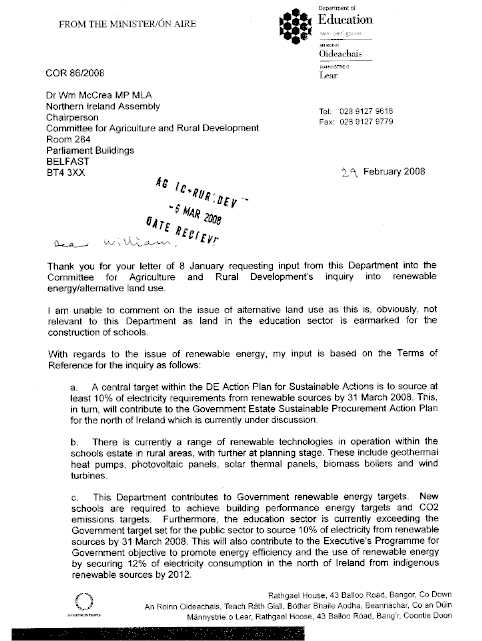
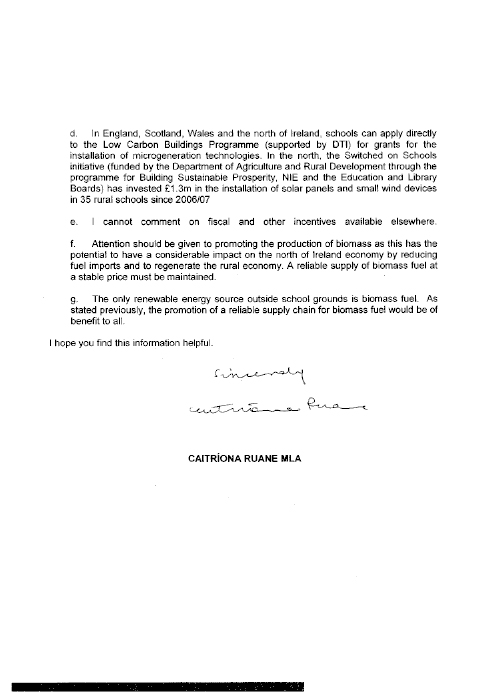
Department for Employment and Learning
Annex A
Dard Committee Inquiry into Renewable Energy/Alternative Land Use
Evidence from Department for Employment and Learning
Contents
Summary of the Department’s aim, strategic objectives and key areas of activity
Summary of key business areas
The context of the Department’s work
The relevance of the Department’s work to the issue of renewable energy/alternative land use
Department for Employment and Learning
1 Departmental Aim
- To promote learning and skills, to prepare people for work and to support the economy.
- Strategic Objectives
- To promote economic, social and personal development through high quality learning , research and skills training: and
- To help people into employment and promote good employment practices
2 Department’s key areas of activity
- Enhancing the provision of learning and skills, including entrepreneurship, enterprise, management and leadership.
- Increasing the level of research and development, creativity and innovation in the Northern Ireland Economy.
- Helping individuals to acquire jobs, including self employment, and improving the linkages between employment programmes and skills development; and
- the development and maintenance of the framework of employment rights and responsibilities.
3 Key Business Areas in DEL
Corporate Services: Minister’s Private Office/ Office of the Permanent Secretary/Central Management, Press Office, personnel, staff welfare, staff training, departmental records, statistics / research and evaluation.
Strategy and Employment Relations: Strategy and Equality covering compliance with S75 statutory duties, Co-ordination Unit and in particular the Department’s linkages with interdepartmental strategies; Employment and Industrial Relations, Including responsibility for relevant legislation and sponsorship of the Labour Relations Agency; the NI Certification Office; the administration of the Office of Industrial and Fair Employment Tribunals; the Industrial Court; and the Redundancy Payments Service; Migrant Workers Unit (facilitating the interdepartmental strategy)
Higher Education: Development of policy for the planning, funding and administration of higher education. Also, policy for student loans and awards, education maintenance allowances and for the payment of postgraduate awards.
Further Education: Development of policy for the planning, funding and administration of further education, including the reconfiguration of the Further Education Sector in line with the FE Means Business Review. Also responsible jointly with the Department of Education for the policy and curriculum for the 14-19 age group.
Skills and Industry : Responsibility for the NI Skills Strategy that sets out a vision for skills in Northern Ireland in 2015 and focuses on raising the skills levels of the workforce, enhancing the quality of those entering the workforce, and addressing the employability of those not in employment. This includes Careers and Information, Advice and Guidance policy and delivery and the policy and administration of Training for Success (Professional and Technical Provision replaced Jobskills from September 2007), Bridge to Employment and Management Leadership programmes and also for sector development and the associated Sector Skills Councils.
Preparation for Work: Responsibility for the administration and delivery of the New Deal programmes; Steps to Work initiatives; the Disablement Advisory Service; Pathways to Work targeted at Incapacity Benefit recipients; Progress2Work (NI) to assist with overcoming major barriers to employment resulting from problems associated with homelessness and substance misuse, an offending background, and other community based employability initiatives such as LEMIS (Local Employment Intermediary Service) designed specifically to engage with unemployed and economically inactive people in Northern Ireland’s most disadvantaged areas, and help them equip themselves for work.
Employment Service (part of Preparation for Work Division): the delivery of the public employment service through frontline teams in the network of 35 Jobs & Benefit Offices and JobCentres . A pivotal function of the Service is its local engagement with employers and the availability of “online” vacancy filling services to assist business and jobseekers alike.
4 Context of DEL’s work
DEL’s Contribution to the Programme for Government is summarized as follows:
PRIORITY: Growing A Dynamic, Innovative Economy
Actions: Increase by 300 the number of PhD research students at local universities by 2010
Introduce a new programme to increase the commercialisation of university and college research by 2010.
Goals: Increasing the employment rate from 70% to 75% by 2020
Ensuring by 2015 that 80% of the working age population is qualified to at least GCSE level or equivalent.
Increasing the number of adult learners achieving a qualification in literacy, numeracy and ICT skills by 90,000 by 2015.
Increasing by 25% the numbers of students, especially those from disadvantaged communities, at graduate and postgraduate level studying Science, Technology, Engineering and Mathematics (STEM subjects) by 2015.
PRIORITY: Promote Tolerance, Inclusion And Health And Well-Being
Actions: Introduce in 2008 a new Employment and Support Allowance to enable those unemployed due to ill-health or disability to return to work.
Put in place by 2010 a careers advice service to meet the needs of people with disabilities.
In carrying out its business DEL will contribute to the following Public Service Agreements (PSAs):
- Productivity Growth - Improve Northern Ireland’s manufacturing and private services productivity
- Skills for Prosperity - Ensure our people have the right skills to deliver economic prosperity now and in the future and increase skills and career choices in STEM subjects
- Increasing Employment - Increase employment levels and reduce economic inactivity by addressing the barriers to employment and providing effective careers advice at all levels
- Children and Family - To ensure that children are cared for, live in safety, are protected from abuse, receive the support they need to achieve their full potential, become more independent and grow into well adjusted adults, taking their place in the community
- Helping our Children and Young People to Achieve Through Education - Encourage all our children to realise their potential by improving access to formal and non formal education and provision tailored to the needs of disadvantaged children and young people.
- Housing, Urban Regeneration and Community Development - Promote decent, energy efficient, affordable housing and regenerate disadvantaged areas and towns and city centres, and support community development to create environments which enhance quality of life and contribute to well-being
- Investing in The Health and Education Estates Take forward a programme of investment to provide a modern fit-for-purpose health and education estate in line with best practice and ensuring value for money
5 Relevance of DEL’s work to the issue of the eradication of renewable energy/alternative land use
DEL has indicated its commitment to the principles underpinning the Sustainable Development Strategy and the associated targets, including those relating to renewable energy. DEL’s core business of skills and employment has greatest relevance to the actions and targets for Sustainable Communities. Also, DEL’s ability to exert influence over its delivery partners is limited to that of encouraging good practice in matters such as Sustainable Development. Further and Higher Education Institutions are autonomous bodies responsible for the conduct of their own affairs.
As part of the Government estate, DEL does not procure energy in its own right. This is centrally procured by the Department of Finance and Personnel (DFP), however, any decisions that would have cost implications for other Departments would be subject to their agreement. As part of this process, DEL has committed to a Framework Tender by Engineering Services and Energy Unit of DFP. It is understood that currently 25% of total consumption is “Green” energy.
5 Delivery partners
As indicated previously, Further and Higher Education Institutions are autonomous bodies responsible for the conduct of their own affairs. However, DEL is aware of a number of initiatives and activities within FE and HE that are relevant to the issue of renewable energy. The following information on these may be of interest to the Committee in the context of its enquiry.
Higher Education
The Department encourages the Higher Education institutions to adopt best practice policy and guidance in relation to Sustainable Development, including renewable energy. This includes promoting sustainable development as a key criteria in capital funding rounds and encouraging the institutions to avail of alternative funding sources, such as the annual Energy Efficiency call by the Department of Finance and Personnel.
By way of example Stranmillis University College recently incorporated a biomass boiler into the new build Orchard Project, which was funded by the Department. The inclusion of the biomass boiler as an alternative heating source, supported by innovative design features incorporating the principles of sustainable development, ensured that the project was awarded a ‘Very High’ rating in the Building Research Establishment Environmental Assessment Model (BREEAM). BREEAM is the world’s most widely used environmental assessment method for buildings and is used to assesses buildings against a set criteria and provides an overall score which will fall within a band providing either a pass, good, very good or excellent rating.
Queens University Belfast incorporated into the design of its new library complex a process to recover waste energy from the computer suite to use to heat the remainder of the building.
Research
Publicly funded university research in the UK is funded under a system of dual support. The four devolved funding bodies[1] provide grant to maintain the infrastructure necessary to conduct research, including staff salaries, premises, equipment, central computing and library costs, as well as funding for the training of postgraduate researchers and for the university to conduct its own directed — or ‘blue skies’ — research. This infrastructural funding is known as Quality-related Research (QR) funding, and is paid as part of the annual block grant. It is up to the recipient university, as an autonomous institution, to distribute this funding according to its own priorities – there is no requirement to distribute funds along the same lines as the allocation process.
The second leg of the system consists in the public sphere of the Research Councils[2]. Researchers submit proposals to these bodies for specific research projects, which are subjected to a peer review process. In addition to these funds, researchers bid competitively for contracts advertised by charities, industry, government and the EU.
The Northern Ireland Universities are frequently commissioned to undertake projects on behalf of a variety of partners unrelated to the Department for Employment and Learning (DEL) or its work, renewable energy would be one example.
In addition to mainstream QR funding DEL funds a variety of “special” research initiatives such as the Support Programme for University Research (SPUR) and the Science Research Investment Fund (SRIF).
Within these DEL has funded the two Universities to carry out a variety of research projects, some of which have links into the renewable energy agenda - e.g. - Coastal Science & Engineering at QUB and Built Environment & Sustainable Energy Engineering at UU.
Further Education
FE colleges have embraced environmental studies within their curriculum and increasingly are incorporating renewable energy schemes into Public Private Partenrship (PPP) procurement for their estates. Recent innovations have included the installation of a biomass boiler in the Omagh Campus of South West College (see below). Initial performance figures are very promising and the college is now proposing to upgrade the system; also a number of colleges with capital projects at the design stage are investigating and benchmarking South West College’s renewable energy system in Omagh. The Omagh facility is also used to demonstrate the benefits of using renewable and low carbon emission energy, both to their students and the wider business community. The proposed new PPP Belfast Metropolitan College in the Titanic Quarter project is also seeking to use innovative and imaginative geo-thermal energy sources to reduce the ‘carbon footprint’ of the facility.
Although a developing subject area, Further Education (FE) colleges offer training on the installation of energy saving devices and equipment for domestic use. The FE sector recognises that the rural community should be encouraged to consider the potential for renewable energy including alternative land use. However, colleges detect a lack of confidence on the part of the rural community to invest in this area. FE colleges are happy to explore with farming and rural communities the training and education required to promote renewable energy and alternative land use.
The leading college in the development of renewable energy is South West College, which comprises of a merger of the former Omagh, Fermanagh and East Tyrone colleges.
South West College
South West College recognises that the renewable energy industry must be an integral element of other interdependent industries such as construction, engineering and electronics. The college is actively involved in the support, design, delivery and management of innovative and sustainable activities within the rural sector.
The College, through its Omagh Campus, has implemented a number of environmental projects, with industry support, in renewable energy applications, diversified land use and environmental management. These include:
- development of a renewables farm (40 hectare);
- installation of wood biomass heating and renewable energy demonstration technology at the College campus, providing 30% of the college’s current heating requirement. This will shortly be increased to 70% of the colleges heating requirement with the installation of a new bio-mass boiler;
- research into use of short rotation coppice willow supply chain management and energy from farm waste applications;
- energy and waste management applications from a 35 hectare farm;
- the Renewable Energy Installer Academy; and
- curriculum development to reflect renewable energy technology.
Camphill Community
In addition, South West College is a leading partner in the Renewables Project at Camphill Community, Omagh, which was set up by the Omagh Environmental & Energy Consortium.
This facility is a land based demonstration resource where renewable energy technologies and sustainable farming practices can be seen in action. Key renewable energy technologies which have been developed and installed on the site include:
- 20 kW wind turbine for electricity generation;
- ground Source Heat Pump;
- biomass (woodchip) fuelled district heating system;
- solar water heating; and
- 2kW photovoltaic array for electricity generation.
Renewable Energy Installer Academy
The Renewable Energy Installer Academy (REIA), a pilot project funded
under the INTERREG programme as a joint initiative of ”Action Renewables” in NI and “Sustainable Energy Ireland” in ROI, was developed in response to the recognition that the lack of trained installers and specifiers is one of the critical barriers to the development of a sustainable renewable energy market.
A number of FE colleges have assisted REIA in developing training courses for the installation and servicing of solar water, heat pumps, biomass, wind, photovoltaic and hydro equipment. The colleges involved are North West Regional College, South Eastern Regional College and South West College.
Department for Employment and Learning
February 2008
[1] The Department for Employment and Learning (DEL), the Higher Education Funding Council for England (HEFCE), the Higher Education Funding Council for Wales (HEFCW) and the Scottish Funding Council (SFC).
[2] The Arts and Humanities Research Council (AHRC), the Biotechnology and Biological Sciences Research Council (BBSRC), the Engineering and Physical Sciences Research Council (EPSRC), the Economic and Social Research Council (ESRC), the Medical Research Council (MRC), the Natural Environment Research Council (NERC) and the Science and Technology Facilities Council (STFC). The Research Councils are part of the Department for Innovation, Universities and Skills (DIUS).
Department of Enterprise,
Trade and Investment

From the Office of the Minister
Netherleigh
Massey Avenue
Belfast
BT4 2JP
Tel: 028 90 529452
Fax: 028 90 529545
E Mail:private.office@detini.gov.uk
Our Ref: DETI COR 022/2008
Dr William McCrea MP MLA
Chairperson ARD Committee
Room 284
Parliament Buildings
Belfast
BT4 3XX
08 February 2008
Dear William,
ARD Committee Inquiry into Renewable Energy /Alternative Land Use
Your letter of 8th January 2008, which came into my Private Office at the end of January via the ETI Committee, invited me to submit evidence on the above issue.
My Department has overall responsibility for energy policy, including renewable energy, in Northern Ireland. In carrying out this role, DETI officials actively work with other Departments, including DARD, on a range of policy and operational issues to promote and develop renewable energy.
Northern Ireland currently has a renewable energy target of 12% of total electricity consumption to be met from indigenous renewable energy resources by 2012 ; of that 12%, 15% to be met from non-wind sources. Indigenous renewables, primarily in the form of large scale wind, currently account for just under 4% of electricity consumption. On the basis of existing installed capacity and projects which have received planning approval and are at different stages of development, it is expected that the 2012 target will be met.
The Northern Ireland Renewable Obligation (NIRO) is the main support mechanism for promoting renewable energy generation and it has been successful in encouraging renewable projects to date, particularly wind farms.
It is important, however, to encourage the growth of non-wind renewables to broaden the range of technologies commercially deployed in Northern Ireland to increase the use of renewables in energy for heat and transport, as well as electricity, and to assist towards meeting current and future renewable energy targets.
In this context, bioenergy can be expected to make an important contribution and, as I replied to Tom Elliott in a recent AQ, my Department established a Bioenergy Inter Departmental group ( IDG ) last year, to co-ordinate a more integrated and strategic approach to the development of bioenergy in Northern Ireland. The IDG comprises representatives from DARD, DOE, Invest NI, DRD and DFP. This co-ordinated approach will enable Northern Ireland to optimise the potential benefits across energy, agriculture, enterprise, transport and environmental sectors and contribute to renewable targets and greenhouse gas emissions targets.
On behalf of the IDG, DETI has appointed AEA Energy &Environment to assess the potential for the sustainable development of bioenergy in Northern Ireland - the Terms of Reference for this work are attached. The results of this study are intended to inform the development by the Bioenergy IDG in 2008-09 of a Cross Departmental Strategy for the sector. The outcome of the ARD Committee inquiry will also be considered by the IDG.
I am copying this response to Mark Durkan as Chair of the ETI Committee.

Nigel Dodds OBE MP MLA
DETI - Assessment of the potential for Bioenergy development in Northern Ireland
Terms of Reference
Background
1. The Department of Enterprise Trade and Investment (DETI) is responsible for the development and maintenance of an appropriate legislative and policy framework for energy in Northern Ireland and published “Energy – a Strategic Framework“ in June 2004. The vision is for a competitive, sustainable, reliable energy market at the minimum cost necessary. Four key policy goals were identified to support this vision as follows
- Reducing energy costs
- Building competitive markets
- Enhancing sustainability in energy and
- Reliable energy supplies.
2. The agenda for developing renewable energy solutions and securing real reductions in energy consumption to enhance sustainability is driven by environmental policy, aimed at reducing harmful emissions. However, pursuing sustainability in energy also offers opportunities to enhance security of energy supply by introducing alternative generation sources, which are not subject to the price volatility of imported fossil fuels. Furthermore, development of indigenous sources offers opportunities for diversification and alternative sources of income within the agricultural and rural communities.
3. To date the renewables emphasis has been on replacing fossil fuel-generated electricity with renewable sources and this is being met primarily from wind which is currently the most readily available and commercially exploitable resource. However, the increasing international focus on addressing climate change and, in particular, the new EU 2020 targets for renewable energy DETI is therefore seeking to promote the sustainable development of all forms of renewable energy sources and, specifically, now wishes to assess the potential of the bioenergy sector in Northern Ireland.
Bioenergy
4. Bioenergy is a form of energy that includes biomass - plant and animal matter and organic waste; biofuels – biodiesel from oil crops or waste oil and bioethanol from wheat or sugar crops, and biogas from anaerobic digestion. It is renewable, sustainable and considered “carbon neutral” as greenhouse gases emitted in its use are balanced by the absorption of such gases during the growth of the organic source material.
5. Energy can be divided into three separate market sectors i.e. electricity, heat and transport – each representing about one third of UK energy consumption. Bioenergy technologies can be used as a fuel source in each of the three sectors to contribute to energy security and diversity, a reduction in greenhouse gases, long term replacement of fossil fuels and opportunities for increased diversification and employment in the agricultural sector.
Cross Departmental approach
6. The range of sources and potential uses of bioenergy as well as the sectors’ potential economic implications give it a significance beyond DETI’s energy remit. Chaired by DETI, the Bioenergy Inter Departmental Group was established to co-ordinate, across Departments/Agencies/NDPBs, a more integrated and strategic approach to the development of the Bioenergy sector in Northern Ireland. Membership includes Department of Agricultural and Rural Development, Invest NI, Department of Regional Development, Department of the Environment and Department of Finance and Personnel. This approach will enable NI to optimise potential benefits of bioenergy across energy, agriculture, enterprise, transport and environment sectors and also contribute to the relevant EU and UK legislations and targets on renewable energy.
7. An internal scoping exercise across Departments, undertaken by the IDG, into current roles and actions in relation to the sector has identified the need for further work to assess the potential for future sustainable growth and development of the bioenergy sector in Northern Ireland. A resume of the key issues arising from that study is attached at Annex A.
Aim
8. DETI, on behalf of IDG, wishes to appoint a consultant to;
a. undertake an independent assessment to identify and quantify the current scale, future sustainable growth potential and optimum size and scale of the bioenergy sector in Northern Ireland and
b. make recommendations to inform the development of an action orientated cross departmental Bioenergy Strategy. While the focus will be on identifying actions to be undertaken within the first 3-5 years, attention should also be given to longer term ( 5-10 years) planning.
Contract Requirements
9. The assignment will address the following key objectives:
- An assessment of the current and future financial/economic viability of the NI bioenergy sector and the scale of such a sector including its separate constituents (eg biomass, biofuels, biogas) and in terms of employment, sales, etc.
- An assessment of the existing and potential market for NI produced bioenergy products and byproducts in NI, RoI and GB (with a sectoral analysis across the energy markets of electricity, heat and transport in private and public sectors).
- An analysis of supply chain implications including the existing and potential availability of all raw materials, capability and technology infrastructure, processing capacity, as well as distribution to storage issues.
- An assessment of current R&D activity and innovation within the NI sector, including that undertaken by Universities/Research Institutions, and the scope for future developmental activity.
- An assessment of the potential for development of the sector to make a contribution to the proposed EC Energy targets for 2020 - 20% of all energy from renewable sources and 20% Green House Gas savings.
- An examination of Bioenergy Strategies/policies in place in rest of UK, ROI to benchmark/identify best practice, case studies and opportunities for read across to NI.
- A review and assessment of existing government measures to promote bioenergy development and identification and consideration of additional, if any, measures, including potential costs based on benchmark data, needed to enhance that development.
10. Full details of the methodology for carrying out the project, a timetable outlining the key activities and timescales involved in the project with the names and responsibilities of the staff involved in each key activity. Tenderers should also demonstrate their capability to complete the exercise within the stated deadlines and identify contingency plans should any proposed member of the team for reasons of illness or otherwise be unable to complete this project.
11. The submission must include the relevant experience and qualifications of the nominated staff together with specific examples of their experience in similar projects within the last three years. The proposed team must include nominated staff having energy experience relevant to the requirements of this project. Rather than providing exhaustive lists of previous experience, tenderers are asked to give their reasons why they believe the experience of the nominated staff to be relevant to this particular project. Concise CV’s must also be included.
Project Management and Timetable
12. The Project will be managed by a DETI –led Project Steering Group and the consultant will be asked to liaise closely with the Steering Group and submit regular reports ( frequency of written reports and meetings to be agreed ) to enable the review of progress. It is anticipated that full payment will be made upon satisfactory completion of the evaluation.
13. It is anticipated that the appointed consultant will be available to commence work w/c 17 December 2007 and provide a draft report, including recommendations, by 22 February 2008, with a final report available by 7 March 2008. Draft and final reports to be available electronically and in hard copy (25 hard copies of final report required).
Additional Information
14. A Bibliography has been provided below to enable consultants to familiarise themselves with the issues and existing research/strategies. The successful tenderer will also receive a copy of the internal IDG scoping study and a list of IDG/Departmental and sectoral contacts. The consultants will be responsible for delivering all other aspects of the assignment.
Equality Considerations
15. DETI is committed to achieving a successful economy in Northern Ireland which will provide equal opportunities for all. To this end, Section 75 of the Northern Ireland Act 1998 sets out a number of obligations relating to the nine ‘Section 75’ categories as follows:-
- Religious belief;
- Political opinion;
- Racial group;
- Gender;
- Marital status;
- Age;
- Persons with disability
- Persons with dependents; and
- Sexual orientation.
DETI as a recognised public authority has an obligation under Section 75 as detailed in its Equality Scheme which can be accessed on the Department’s website at www.detini.gov.uk/Equality scheme .
16. The assessment must therefore consider equality aspects relating to the nine ‘Section 75’ categories by considering available data, identifying any adverse impacts that may be present and proposing alternative measures/policies which might better achieve the promotion of equality of opportunity.
17. The assessment must also consider the accessibility of the Strategy for all in line with the Disability Discrimination Act 1995.
Bibliography
- EU Renewable Energy Road Map www.europa.eu
- Renewable Transport Fuel Obligation Department for Transport www.dft.gov.uk
- UK Biomass Action Plan Department for Environment, Food and Rural Affairs www.defra.gov.uk
- Biomass Action Plan for Scotland Scottish Executive www.Scotland.gov.uk
- Welsh Renewable Road Map Welsh Assembly Government www.Wales.gov.uk
- Energy A Strategic Framework DETI June 2004 www.detini.gov.uk
- Renewable Energy Action Plan DARD January 2007 www.dardni.gov.uk
- NI Sustainable Development Strategy OFMDFM November 2006 www.ofmdfmni.gov.uk
- Bioenergy Action Plan for Ireland ROI February 2007 www.dcenr.gov.ie
- Northern Vision Study including prospects for bioenergy in NI to 2050. Carbon Trust
www.carbontrust.co.uk
Bioenergy IDG Scoping Exercise
Annex A
In order to develop a more integrated approach, a scoping exercise was undertaken in the summer of 2007 to obtain a more comprehensive picture across Departments of their current role and actions in relation to the bioenergy sector as well as possible opportunities/barriers to further development.
Responses were sought and received from the IDG members -DETI, Invest NI, DFP, DARD, DOE and DRD and also from other departments as follows - DSD in respect of the Housing Executive; from DHSSPS, DEL and DE in respect of their specialised Estates ie Trusts, Health Boards, Hospitals and FE colleges and Schools.
The main results of the scoping exercise can be briefly summarised as follows.
Key Drivers for current involvement with the sector
- Departments noted a range of EU Directives and National Strategies as the main drivers – Kyoto Protocol, EU Energy and Environmental Strategies , Landfill and Nitrates Directives, Renewable Transport Fuel Obligation , Renewables Obligation, UK Biomass Action Plan, Waste Management Strategies, NI Sustainable Development Strategy and Planning and Environmental Regulations
- More specifically at Departmental level – DETI’s Strategic Energy Framework, DARD’s Renewable Energy Action Plan , PPS12 and 18, Carbon Neutral Government Estate and Fuel Poverty issues.
With which part of the sector are departments involved?
- All responses noted involvement with the biomass sector - for those with responsibility for property/specialised estates (DFP, DHSSPS, DE and DEL), this related to the installation of biomass boilers for heating.
- DETI, DARD, Invest NI and DOE noted involvement with biomass (including animal and plant waste), biofuels and biogas in relation to both policy and operational (grant/support/planning) aspects.
Support programmes
- By far the largest and broadest range of financial support for the sector is available from DARD/Agri Food and Biosciences Institute (AFBI ) both in terms of financial support for individual projects and research for the benefit of the sector as a whole.
- Invest NI has supported the biomass and biofuels sectors with technical assistance and some limited financial support. Bioenergy projects would be eligible for Invest NI’s mainstream support where they meet standard eligibility criteria.
- DETI’s Environmental and Renewable Energy Fund (EREF) and DFP’s Central Energy Efficiency Fund (CEEF), while not directly supporting the sector, have offered financial support to public and private sector to use bioenergy technology, mainly biomass for heating.
- Through the NIRO, electricity generated from biomass is eligible for Renewables Obligation Certificates ( ROCs) which have a value and can be traded.
- On a UK basis, biofuels producers are entitled to a fuel tax reduction and from April 2008, the introduction of the Renewable Transport Fuel Obligation on UK transport fuel suppliers is aimed at encouraging the production of biofuels to meet increasing demand and the requirements of the EC Biofuels Directive.
Opportunities
- The sector represents a renewable, carbon neutral addition to NI’s energy needs across electricity, heat and transport sectors.
- It can make a contribution to reduction in CO2 levels to address Government targets but should not be seen as the sole solution to CO2 emissions.
- It can contribute to employment and diversification opportunities for the rural economy.
- It can contribute to other Government policies in particular a number of policies/actions drawn together within the NI Sustainable Development Strategy eg Waste Management Strategy, Carbon Neutral Government Estate.
Barriers/Issues
- Economics/costs – small operations/ peripherality leading to marginal businesses; absence of oil refineries in Ireland; high capital costs; lack of financial incentives for biomass heating unlike renewable electricity; costs of biomass boilers not taken over whole life; potentially higher running and maintenance costs;
- Technology issues – lack of understanding /knowledge of the technology; quality/reliability issues ( biomass and biofuels) ; vehicle manufacturers’ guarantees ( biofuels )
- Supply issues – lack of knowledge of the size and scale of the sector; supply chain problems; reliability and continuity of supplies ( feedstocks and finished product ) both for producers and customers for biomass and biofuels ; too many small operations with limited marketing and services; need for greater reliability/improved and consistent standards;.
- Sustainability issues – possible negative impact on biodiversity/environment; land use concerns ie availability and suitability; overall sustainability of energy crops; energy v food concerns.
- Planning/regulatory issues – time taken to gain planning approval; potential difficulties in meeting regulatory regimes.
Department of Environment

Mr William Long
Assistant Clerk
Room 247
Parliament Buildings
Stormont Estate
BELFAST
BT4 3XX
Tel: (0)28 9052 1240
Fax: (0)28 9052 1795
Email: william.long@niassembly.gov.uk
Paul Carlisle
Clerk
Committee for Agriculture and Rural Development
Room 284
Parliament Buildings
Stormont
22 January 2008
Dear Paul
Inquiry into Renewable Energy/Alternative Land Use
The Committee for the Environment considered your correspondence dated 8 January 2008 and the attached letter to Arlene Foster, Minister of the Environment has been passed to her as requested.
The Committee also advises that it has no comments to make on the above Inquiry at this moment but that it may wish to input at a later date.
The Committee for the Environment has asked to be kept informed of the progress of the inquiry into renewable energy within the farming and rural community.
Yours sincerely
William Long
Assistant Clerk to the Committee for the Environment
Department of Finance and Personnel
Written Evidence to the Committee for Agriculture and Rural Development on Renewable Energy/Alternative Land Use
1. The recent and current policy framework for the development of renewable energy in Northern Ireland, focussing on but not limited to those policies developed and implemented by the Department of Agriculture and Rural Development.
1.1 The Department of Finance and Personnel (DFP) through its public sector procurement and property management remit is taking forward a number of policy initiatives that will have positive implications for renewable technologies within Northern Ireland. In turn it is likely these measures may open opportunities for the agricultural industry within Northern Ireland through alternative land use for biomass materials.
1.2 The Central Energy Efficiency Fund (CEEF), which is administered by Properties Division within DFP, was set up in 1993 to provide financial support for measures to improve the energy efficiency of buildings occupied by Northern Ireland public bodies which could not be funded from existing budgets. In 1996, its scope was extended to include support for projects to reduce the emission of carbon dioxide, the main greenhouse gas.
1.3 The Fund provides support for projects in all areas of the NI public sector, including District Council properties, E&L Boards, Health and Social Services facilities and related NDPBs as well as Government offices. However, resources are limited, with £2million available for projects in 2008/09 and applications to fund exceeding £10million. Proposals are therefore ranked in merit order based on benefits/costs ratio and payback basis with funding awarded to the most effective schemes.
1.4 Recent years have seen an increase in the number of proposals for renewable energy technologies across the public sector. For example in 2004/05, the Central Fund awarded £114,000 to renewable energy projects; however this had grown to more than £1.1 million in 2007/08.
1.5 In November 2006, an amendment to the Building Regulations (NI) 2000 came into operation. This included an amendment to Part F (Conservation of fuel and power) that has improved standards by approximately 40%, with a corresponding reduction in carbon dioxide emissions. The methodology introduced by the amendment allows designers to meet the new standards in a manner best suited to the specific circumstances of each building, which may include the use of low or zero carbon technologies. Although the Minister, Peter Robinson recently decided not to require renewable technologies in all new buildings the targets set by the building regulations are deliberately onerous and encourage the use of such technologies. The supporting documents to the regulations provide solutions that encourage and facilitate the integration of microgeneration in buildings.
1.6 The Central Procurement Directorate (CPD) in DFP is currently working with the Centres of Procurement Expertise (CoPE), through the Sustainable Construction Group (SCG), to develop practical guidance on sustainable construction design which incorporates low carbon and low energy design. The use of Renewable Energy Technologies (RET) will be an important systems strategy in implementing low carbon sustainable design. CoPEs will advise their clients on the feasibility and benefits of implementing RET on specific public sector construction projects.
2. The range of renewable technologies currently in operation or planned in rural communities, taking into account, as appropriate, similar projects elsewhere.
2.1 DFP, through Properties Division is primarily responsible for promoting energy efficiency within the public sector. Regarding renewable technologies, the Central Energy Efficiency Fund (CEEF) has funded a number of projects including wind turbines, hydro electric schemes and biomass systems throughout Northern Ireland. In relation to the DARD estate, the CEEF has provided financial assistance to 9 energy efficiency projects since 2001 at a total value of £231,226.
2.2 DFP’s Central Procurement Directorate (CPD) has advised DARD on the use of renewable energy technologies within the DARD estate and is currently managing the procurement of a £2.35m Environment and Renewable Energy Centre (EREC) at AFBI Hillsborough. The EREC will incorporate an anaerobic digester and biomass boilers. Some of the biomass fuel will be obtained from chipped willow and miscanthus grass grown within the AFBI estate and forest brash collected from the adjoining forest. One of the main objectives for the EREC, as a pathfinder project, is to provide practical demonstration of the potential applications of RET in farm and rural businesses and rural communities. Solar thermal and photo voltaic RETs will be installed in other AFBI buildings at Hillsborough and will reduce the sites overall carbon footprint.
2.3 In addition CPD and Properties Division have provided guidance and project management support on a number of renewable technology projects financed through the Environment and Renewable Energy Fund (EREF) directly to DARD, summarised below:
- Greenmount Wind Turbine – Properties Division installed a 5kw wind turbine.
- Loughry Biomass Boiler – Properties Division installed a 150kw biomass boiler.
- Loughry Wind Turbine – Properties Division currently on site to install a 15kw wind turbine.
- Greenmount multi fuel boiler – project currently with CPD.
- Enniskillen equine waste boiler – project currently with CPD.
3. The relative importance in terms of contributing to Governments renewable energy targets, of heat from renewable sources, electricity from renewable sources and fuel from renewable sources, and how relevant each could be to the NI economy.
In relation to the Government Estate the Department has set the following targets:
- To make the Government Estate carbon neutral by 2015;
- To source at lease 10% of its electricity requirements from renewable sources by 31 March 2008;
- To reduce absolute carbon emissions from fuel and electricity used in buildings by 12.5% by 2010/11 relative to 1999/2000;
- To increase the energy efficiency of the buildings (measured in kilowatt-hours of fuel and electricity used per square metre of floor area) by 15% by 2010/11 relative to 1999/2000;
- To reduce water consumption by 3% by the end of 2011/12 relative to 2008/09.
4. The range of support available to renewable initiatives at local, national and European levels.
4.1 DFP has a permissive power to promote energy efficiency across the public sector. One of the major ways this is done is through the Central Energy Efficiency Fund (CEEF). This is a scheme which supports energy efficiency schemes submitted to it from across the public sector by means of financial support in the form of a grant. This fund is however limited and applications are heavily over-subscribed year-on-year. For example 188 applications have been made to the 2008 fund at a total value in excess of £10million for a total available fund of £2million.
4.2 Bids are invited each autumn for implementation the following financial year and must meet certain eligibility criteria including minimum capital cost and payback. All other forms of funding must have been explored before a Central Fund bid can be accepted. All projects are considered by an Energy Working Group made up of Departmental representatives and independent advisers. There is no quota system for Departments or other bodies and allocations are awarded on a competitive basis with projects demonstrating the most effective benefit cost ratio offered funding up to the limit of funds available.
5. To compare the range of fiscal and other incentives offered elsewhere to support the development of a renewable energy industry and the infrastructure to support it.
DFP has no evidence to provide to this term of reference.
6. The potential role of farm and rural businesses and rural communities in the delivery of a renewables programme which contributes to the sustainability of those business and the wider community.
DFP has no evidence to provide to this term of reference.
7. The ways by which the Department of Agriculture and Rural Development could implement and resource a renewable energy programme in a manner which contributes to the sustainability of the agricultural/rural sector and contributes to Northern Ireland’s renewable energy targets.
7.1 Government within Northern Ireland has a duty to serve as an exemplar to the wider community in sustainable development and renewable technologies. As a major occupier within the Government Estate, DARD has an opportunity to promote a renewable energy programme within its own managed estate and contribute to the achievement of a carbon neutral estate; however this will require a financial commitment by DARD.
7.2 In 2006/07, DFP secured funding from the Environment and Renewable Energy Fund to install a biomass heating system on the Stormont Estate and photovoltaic panels and other renewable technologies within the Government Office Estate. As there were limited possibilities of installing these technologies in the office estate the proposal was extended to include the Veterinary Services buildings on Stoney Road and other buildings across the DARD estate. As DARD was unable to commit the revenue to fund the cost of capital for the grant the project was subsequently downscaled to a much smaller biomass system and the installation of renewables in DFP managed buildings only.
Farm Woodlands
Inquiry into Renewable Energy & Alternative Land Uses
1. Introduction
1.1. Our company, Farm Woodlands Ltd, is primarily involved in the establishment and management of private woodlands for farmers and landowners. Since our inception in 1992, we have been based in Co. Tyrone and have extended our client base from initially operating in Tyrone, Fermanagh & Armagh to now operating throughout all counties of Northern Ireland.
1.2. We operate as an intermediary between the Forest Service and landowners in the operation of the Woodland Grant Scheme (WGS) & Farm Woodland Premium Scheme (FWPS) providing practical expertise in the development of private woodlands. The WGS provides a fixed rate grant for the initial establishment of new woodland. The FWPS is an annual payment to landowners (for a maximum of 15 years) to compensate for the loss of income from the land planted under the WGS.
1.3. Our company plants on average 200 Ha of new woodland per year, in Northern Ireland on agricultural land, thereby helping the Forest Service to achieve its current stated target of 450 Ha new woodland per year.
1.4. Given the extent of our experience, we welcome this opportunity to comment on the development of renewable energy within the rural economy and alternative land uses. Obviously we have particular interest in the potential of the forestry sector to meet the stated objectives of this inquiry and have some suggestions as to how the industry might be further developed to achieve this.
2. Wood Energy & Farm Forestry
2.1. It is our belief that wood from forestry, more than any other renewable energy source, will play a major role in our climate change strategy and contribute significantly to the creation of sustainable employment.
2.2. Farm forestry private woodland, is a growth industry in every sense of the word. With the implementation of the Single Farm Payment, the dependency of the farming community on the subsidy system is quickly being replaced with an eagerness to embrace the new opportunities being presented, particularly in relation to timber products and the wood energy market. However, the willingness of landowners to adapt must be matched by a meaningful national development plan that is committed to this rural-based industry and the new wood energy market that is rapidly emerging.
3. Private Forestry Sector Funding
3.1. Our Devolved Administration must lead the way by adopting the best practices in forestry that have been successful in Scotland and in the Republic of Ireland. We have an all-island electricity market in place; the natural extension is an all-island renewable energy policy, whereby the forestry sector is centre stage.
3.2. The success of the private sector’s contribution in this respect, is directly related to the grant structures which are necessary to maintain security of wood supply. A simple comparison of the woodland grant rates in these three regions is shown below. It highlights the gap in funding that exists in the private forestry sector, particularly between both regions of this island.
Woodland Grants - Comparison
Region |
Establishment Grants |
Annual Payments |
|---|---|---|
Northern Ireland |
Broadleaves: £1,850 / Ha Conifers: £1,250 / Ha 1st Instalment 70% 2nd Instalment 30% after 5 years No future management |
£160 - £270 / Ha Paid for either 10 or 15 years Taxable income |
Scotland |
Broadleaves: £1,470 / Ha - £1,575 / Ha plus £770 / Ha - £805 / Ha maintenance Conifers: £840 / Ha - £980 / Ha Plus £560 / Ha - £665 / Ha maintenance Additional funding for fencing, weed control, pruning, thinning & felling |
£160 - £300 / Ha Paid for either 10 or 15 years Taxable income |
Republic of Ireland |
Broadleaves: £3,713 / Ha - £5,431 / Ha stg Conifers: £2,438 / Ha - £2,805 / Ha stg (€ to £ stg conversion 1.4) 1st Instalment 75% 2nd Instalment 25% after 4 years Additional funding for fencing, pruning, thinning & road construction |
Broadleaves: £362 / Ha - £410 / Ha stg Conifers: £172 / Ha - £362 / Ha stg (€ to £ stg conversion 1.4) Paid for 20 years Non - taxable income |
3.3. It is of no surprise therefore, that the Republic of Ireland with its forestry budget of £86 million stg, (announced in December ’07) leads the way in terms of a structured approach to this rural industry; one which is currently worth £1.2 billion stg annually to the Irish economy (Farming Life 15/12/07). Perhaps this is something the various North-South Intergovernmental bodies should seriously consider.
3.4. Currently, funding for the forestry sector in NI is compared with traditional agricultural income, which has remained relatively static in the region. Instead forestry, especially private forestry, needs to be recognised as a separate, rapidly growing industry with immense potential both economically and environmentally.
3.5. Our countryside needs cattle, sheep and people, but properly planned tree planting, is one of the most environmentally friendly uses to which we can put our land and which at the same time, directly increases the sequestration of carbon from the atmosphere.
3.6. The Forest Service in its various Annual Reports has stated that expansion of state-owned forestry is limited due to land prices. The logic should therefore be, to encourage expansion of privately owned woodlands where land purchase is not an issue.
3.7. In NI there are extensive areas in the lowland (LL), disadvantaged (DA) and severely disadvantaged (SDA) land categories that are suitable for private planting. These areas remain unplanted because the current rates of woodland grants, do not adequately compensate landowners for the long-term commitment they make, when planting trees on their land. To achieve this, grants need to be increased substantially. The much-hyped Forest Service review in 2007 only succeeded in fudging some figures. In reality, establishment grants (WGS) in NI have not changed at all in the last 10 years. Annual payments to landowners (FWPS) for income foregone on the planted land have only increased by £10 in the same time.
3.8. If annual payments cannot be tax-free, then landowners need to be reimbursed for the carbon sequestration of their plantation. Governments are talking about climate change strategies – woodland owners are currently doing it.
4. The Future
4.1. The rural community is pivotal in the development of all aspects of a renewable energy programme. Historically, farmer owned co-operatives and various producer groups have been a feature of the agricultural industry. That expertise can now be harnessed in the expanding wood energy market to establish supply chains for various building developments both in rural and urban locations. To this end, there needs to be a commitment from the development sector, perhaps backed by planning changes, making incorporation of renewable technologies into private and public building design compulsory.
4.2. In conjunction with this, there needs to be an updated inventory of woodland cover in NI. This inventory needs to determine the amount of state forestry, private forestry, semi-natural woodland and scrubland with potential for wood production. Once completed, timber production forecasts can be made, which are necessary to keep the indigenous energy market sustainable. The role then, of short rotation coppice (SRC) plantations such as Willow or Miscanthus can be, to quickly supplement the main wood energy market in times of potential shortfall. SRC plantations, by their nature are better suited to the drier, fertile farmland areas below 100m ASL. This results in much of NI farmland being unsuitable for its production. Therefore, while SRC does have some role in the wood energy market, it will predominantly be the private broadleaf and conifer plantations that will drive and sustain our wood energy market.
5. Additional Landuses
5.1. Although the expanding wood energy market is the main focus of our submission, being a rural-based company we are very much aware of other land uses that could potentially play an important role in the NI renewable energy programme. For example, there are vast areas of exposed, hilly farmland that could support clusters of small-scale windfarms. It is neither necessary nor desirable to locate windfarms in upland blanket bogland due to the sensitivity of that habitat. Instead, an appropriate programme could be formulated that would encourage landowners to diversify into windfarming.
5.2. Similarly, the use of anaerobic digesters for the treatment of various animal slurries, both on an individual farm and on an industrial scale, is a renewable technology which has not received enough consideration or promotion. There are various successful working examples of this technology in both the Republic of Ireland and on the mainland. Again as stated previously, our system of farmer co-operatives is ideally suited for such enterprises to be successful and to contribute enormously to the Governments target for electricity generation from such renewable sources. A more widespread use of anaerobic digesters throughout NI would be a more sustainable means for landowners to meet their obligations under the Nitrates Directive and help reduce the continuing pollution of our waterways.
6. Concluding Remarks
6.1. In conclusion, renewable energy, particularly the wood energy industry in NI is at a crossroads. Where it goes from here will largely be determined by the Assembly’s willingness to seize the new opportunities of contributing to the sustainability of the agricultural and rural community, for the benefit of the entire region and its economy. Failure to grasp the importance of these exciting times will force existing woodland owners to look south of the border to market their produce and the loss to the NI economy will undoubtedly be self inflicted.
Farm Woodlands Ltd is willing to explore the ideas and discuss the points expressed in this submission further, if invited to do so.
Mr Willie Mc Kenna BSc, MBiol, MSIF
Mr Cathal Woods BSc,
Dr Kathleen Mc Kenna BSc, PhD
30th January 2008
Green Energy Ltd
Version 1
22/02/2008
Background.
When asked by others what I do for a living, I still reply that I am a farmer. Not so much in the usual aspects of animal husbandry or cereal production, but in a new farming enterprise – energy crop production.
When faced with a general decline in agriculture and falling income levels, I decided to adapt a new approach to the one most important element a farmer has, his land.
With concerns over global warming and high fuel prices, I decided to enter the energy crop production field (excuse the pun !)
Since 2004 I have diversified from dairy and cereal production and have planted short rotation willow coppice and miscanthus grass as the main crops. These crops will supply fuel for heating and electricity production locally.
To help increase market awareness to renewable technologies and fuels, myself and a business partner, formed a new company called Green Energy Solutions Ltd. We aim to help bring together the growers of energy crops with the end users, i.e. industry, commercial, domestic, schools, churches etc. We also provide a range of equipment which can utilise locally produced fuel.
Introduction.
Miscanthus grass as an alternative land use and a fuel source.
1. What is miscanthus grass ?
2. What are the main benefits ?
3. How well suited is it to local climate ?
4. Can local farmers grow this crop ?
5. Economic benefits.
6. Report.
1. What is miscanthus grass ?
Miscanthus species are woody, perennial, rhizomatous grasses, originating from Asia which has the potential for very high rates of growth. Miscanthus may be familiar to many as a flowering garden ornamental, but it is the non-flowering forms that are of interest agriculturally.
Miscanthus is planted in spring and canes produced during the summer are harvested in winter. This growth pattern is repeated every year for the lifetime of the crop, which will be at least 15 years. Miscanthus differs from short rotation willow coppice in that it gives an annual harvest and thus an annual income to the farmer.
Miscanthus spreads naturally by means of underground storage organs (rhizomes). However, their spread is slow and there will not be any uncontrolled invasion of hedges or fields. These rhizomes can be split and the pieces re-planted to produce new plants. All propagation, maintenance and harvest operations can be done with conventional farm machinery. In the UK, long-term average harvestable yields from mature crops have exceeded 13 dry tonnes per hectare per year (t/ha/yr). These high yields suggest that the crop has the potential to make an important contribution to the UK’s commitments to energy generation from renewable sources.
2. Benefits of Miscanthus grass.
Being classed as CO2 neutral, this means the plant absorbs, during the growing cycle, most of the harmful emissions it produces when burnt as a fuel. In terms of energy value, it has a net calorific value, on a dry matter basis, of 17 MJ/kg, with a 2.7% ash content. The energy value of 20 tonnes of dry miscanthus would be equivalent to that of 12 tonnes of coal.
Two studies comparing miscanthus grass with cereals, indicated that miscanthus seemed to provide a habitat which encourages a greater diversity of species than winter sown cereal crops. In these studies three times as many earthworms and spiders were found in the miscanthus crop and five times more mammal species and four times more bird species than a crop of wheat.
3. How well suited is it to local climate ?
Most lowland agricultural sites should be suitable for miscanthus cropping, with the highest yields coming from deep, moisture retentive soils. Miscanthus has been reported growing, and producing high or reasonable yields on a wide range of soils – from sands to high organic matter soils. It is also tolerant of a wide range of pH, but the optimum is between pH 5.5 and 7.5. The potential cropping zones for miscanthus are quite widespread.
4. Can local farmers grow miscanthus ?
Although it is a new crop to Northern Ireland, no specialist knowledge or management skills are needed in the production of miscanthus. Basic cereal crop husbandry is used to prepare the site for planting, and general crop husbandry is used in the regular maintenance of the crop.
Conventional farm machinery can be used for all harvesting and maintenance requirements. As the crop has a life expectancy of at least 15-20 years, it only has to be planted once, unlike cereals which require a planting every year. Also miscanthus requires little or no artificial fertilizer, and virtually no chemical sprays. Both measures mean less labour input and lower economic input costs.
5. Economic benefits.
After the initial planting a miscanthus crop has virtually no other costs. With rising fuel prices worldwide, a good financial return can be made from this crop. As large industries are seeking to lower their carbon footprints, farmers have the option to secure long-term supply contracts (5 or 10 year). This can give stability to the energy crop farming sector, compared to most other farming enterprises. Also the farmer can control his market, by supplying directly to the end user and not working through a middle man.
6. Report.
To prove the suitability of miscanthus grass in Northern Ireland, I planted 1.0 hectares (2.5 acres) in May 2007. The crop has successfully established and looks set to provide a substantial yield. Already there has been a lot of interest in the local farming community with orders for this spring planting. Last year in the Republic of Ireland over 400 hectares ( 1000 acres) were planted. This states just how far Northern Ireland has fallen behind in the energy crop area.
Trials are currently undergoing at AFBI Hillsborough, by Dr Lyndsay Easson on miscanthus grass production. If this crop is to succeed, planting grants must be made available to farmers. There are many large industries and government departments expressing an interest in converting to renewable/biomass heating and power, but only if there is a secure fuel supply chain. On the other hand there are many farmers looking for an alternative land use, and are willing to grow energy crops, but only if there is a secure market for these crops.
It is a case of getting the crops in the ground as soon as possible, so that farmers can start to supply the local demand. We need to think ahead. If a crop is planted this spring 2008, it will not be fully established and yielding high tonnage of fuel until the year 2011.
Conclusion and invitation.
I am convinced that miscanthus offers a viable alternative to conventional farming practices. It is widely grown in mainland UK and the Republic of Ireland, where both governments are assisting growers with establishment grants, to help encourage the uptake of energy crop production.
The UK government identifies biomass-derived energy as one of the ways that it can achieve its obligations to the Kyoto Climate Change Protocol of reducing greenhouse gas emissions by 12.5%. It has a target to generate 10% of the nation’s electricity from renewables by 2010, and aims to reduce CO2 output by 20% relative to 1990 levels. These targets could mean the generation of 500 – 1000 MWe from biomass by the year 2010, an undertaking that would require as much as 125,000 hectares (310,000 acres) of energy cropping.
Pictures of miscanthus grass are available on our web site at www.greenenergyltd.com under products/energy crops.
Any interested persons or parties are invited to come and see the crop for themselves, and also see the benefits to local agriculture, economy and the environment.
John Martin
‘Clare House’
30 Ballynabraggett Road
Waringstown
Co. Armagh
BT66 7SH
T: 028 3888 1228
F: 028 3888 2445
E: john@greenenergyltd.com
The Housing Executive as
Home Energy Conservation Authority
Introduction
The Housing Executive as Home Energy Conservation Authority has an interest in renewable energy as a means of delivering energy efficiency within the domestic sector. Under the guidance to the Home Energy Conservation Act (1995) the Housing Executive was encouraged to consider the use of energy from renewable sources in meeting its energy efficiency targets. The Housing Executive has since carried out a number of pilot schemes and larger scale programmes involving renewable energy. The list of alternative energy sources installed in NIHE stock to date is;
- Solar water heating panels – 1,500 dwellings (programme ongoing to 31/3/08)
- Solar Photovoltaic panels (generate electricity) – 32 dwellings
- Solar Ventilation systems – 56 dwellings
- Micro-CHP systems (provide heat and electricity) – 10 dwellings
- Wood pellet boilers – 4 dwellings
- Ground Source Heat Pump – 1 dwelling
- 2.5Kw wind turbine – 1 dwelling
As Home Energy Conservation Authority for Northern Ireland, the Housing Executive feels that the farming community could contribute to the development of a renewable energy market involving;
- Biogas (slurry and other farm wastes)
- Biomass (wood chips and wood pellets)
- Wind
- Energy Crops
In particular the Housing Executive is convinced that there is a viable and sustainable role for farmers to produce energy crops in Northern Ireland. One successful model that a member of the Housing Executive’s staff has witnessed at first hand is that which is used in Austria. There, the use of biomass for the production of heat, hot water and electricity has;
- Provided an alternative income stream for the agricultural community
- Aided economic development in rural communities not only by assisting farmers but by providing a low cost alternative form of energy for local businesses and householders
- Aided economic development generally to the point where Austria is now a world leader in the development, manufacture and supply of biomass plant and equipment.
- Reduced Austria’s total reliance on imported oil and gas – this contributes to Austria’s security of supply for primary energy sources
- Environmental benefits which assist Austria in meeting its targets for the reduction of harmful emissions produced by other fossil fuels
- Alleviated fuel poverty by providing a lower cost alternative energy source
It is not being suggested that Northern Ireland is similar to Austria in terms of its geography or climate. However, it is the ideas and concepts which have been successfully developed in Austria that could equally apply in Northern Ireland. Although Northern Ireland, relative to Austria has little coverage in terms of forest acreage, by growing willow and other energy crops, the ideas developed in Austria could be implemented here for energy purposes.
Experience in Austria
The Austrians have created an entire industry around wood as a heating fuel within the last 20 years. Around 40% of Austria is covered in forestry. Biomass projects began in villages within mountain areas using wood chips to fuel central heating in the local school, civic buildings and houses – effectively mini district heating grids. The motivation was to do something for the environment and to provide an income stream for local farmers. The concept spread from village to village and the regional government then, observing the success of this concept, stepped in and provided subsidies to accelerate the development of further biomass installations. Austria is now a leader in the field of biomass and the production of the technology associated with it. It also has strategic benefits in that it reduces Austria’s dependence on oil and gas imports, as well as environmental and economic benefits. What has been achieved in Austria in a few short years in both biomass and solar thermal heating is very impressive.
Potential Application in Northern Ireland
In terms of replication in Northern Ireland, in the short term, the development of biomass as a realistic alternative to oil and gas may, like Austria, require Government subsidies to nurture the process, i.e. a strategic energy policy decision (by DETI) or an economic development decision to create an alternative market for the agricultural sector (DARD). Whilst the technology has been proven for some time, the local building industry did not embrace biomass in the past due to the relatively lower capital cost and convenience of oil and gas heating systems compared to higher capital costs associated with biomass boilers. Oil and gas heating systems were, in the past, relatively cheap to run for both businesses and households. Investors don’t tend to factor in the environmental and economic benefits but tend to assess schemes purely in financial terms. However, at todays much higher prices both for gas and oil, there is a growing interest in alternative fuels such as biomass and the capital costs associated with biomass boilers are now comparable to oil installations.
There are already a number of existing and potential major biomass projects within both parts of Ireland. Apart from Rural Generation’s biomass project in Brook Hall, Derry, and the Balcas project in Fermanagh, there is also a project involving 3 schools in Fermanagh. Similarly there are some existing and potential medium to large projects in the Republic of Ireland including one involving a hospital where an Energy Services Company will provide heating and hot water from a biomass plant. There is also an existing biomass project in Powys (Wales) where, in a small village, the school, community centre and 19 houses are heated from wood chips with an oil boiler as back up.
Another option for market development is local community groups who want to do something for the local environment and local economic development. Similar groups in Austria developed biomass schemes for local community or civic buildings. One successful project in Austria seemed to lead to the creation of many more in neighbouring villages. The Housing Executive for its part is carrying out field trials using single house boilers in small pilot schemes in Fermanagh and Ballymena with a view to establishing if they are a viable alternative to oil heating. This will test the performance of the systems over a complete heating season, the tenants’ reactions to them and issues around pricing and the supply chain. There are already plans for an extended field trial involving 30 Housing Executive dwellings. There are major opportunities for both existing Housing Association sheltered schemes and future newbuild schemes in social housing to provide biomass heating on either a district heating scale or using individual boilers. If the Austrian model was followed local farming co-operatives would not only supply the wood chips or pellets but would be responsible for operating and maintaining the District Heating boiler houses and for collecting revenue from users. Effectively farming co-operatives become Energy Services Companies (ESCOs). Alternatively, farmers could simply supply others who would operate the system.
Austrian Case Studies
Site 1 Wood Chip District Heating Plant. Like most Austrian projects it was a Design, Build, Own and Manage scheme by a Farmers’ Co-operative. Supplies heat and hot water to church, hall, pub, school, houses (most of village). When asked about bad debt the answer was that 98% of customers pay so it wasn’t a major problem. Ash is removed by farmer and used as fertilizer.
Site 2 Local community (village) wanted to do something for environment (cut down CO2 emissions). Local farmers set up a co-operative to supply wood chips and now they run a village District Heating Scheme. The idea came from community. The farmers main income comes from logging with the waste wood processed into wood chips for boilers.
Site 3 Forestry School. 1st Boiler lasted 20 years. The school wanted to do something for the environment and at the same time demonstrate to students how to use forest waste as an alternative energy source.
The ideas for the above came from the local community wanting to do something for environment whilst helping local farmers to supplement their income. Regional government supported this idea with subsidies. Local technology managers were appointed to help with filling in forms to apply for grants.
Potential problems and solutions
Whilst the Austrian experience has been one of considerable success in developing a thriving industry around both the manufacture of wood pellet boilers and the supply of fuel, there were initial problems. Other countries including, Northern Ireland, can learn from these and take on board the solutions recommended by the Austrians to ensure a smoother introduction of this technology. These problems and solutions are outlined below.
Community wide schemes
Problems
- lack of quality of planning, grid design and construction – (leaks)
- lack of expertise and know-how of operators
- lack of monitoring and quality control
- operators were farmers – not energy engineers and technicians.
Solutions
- development of technical standards
- training for planners and plant operators
- continuous monitoring and benchmarking of plants
Single family boilers (automatic feeding, ignition and ash removal. Over 90% efficient and very low emissions – use pellets rather than chips).
Problems
- lack of knowledge and initial resistance among installers (plumbers)
- quality problems with boilers and pellets
- pellet supply infrastructure
- boiler service infrastructure
Solutions
- installer training by boiler producers and biomass association
- sales always via installers
- boiler and pellet quality – standards set for both including storage and delivery
- infrastructures – existing transport companies and fuel dealers
General Problems & Solutions
- Dust among pellets affects performance of boilers. Dust emerges when pellets break up – pellets must not break up. Tracking system set up to identify which suppliers’ pellets were causing problems.
- Care must be taken by delivery man when delivering pellets either to store or boiler to prevent them from breaking up, e.g. if dumped onto concrete floor. Delivery person must be trained in how to properly offload and store the product.
- Technology was opposed by oil producers and suppliers – however independent suppliers see it as just another fuel to supply.
Solar
Many wood pellet projects are combined with solar power (water heating). The building industry was very conservative. Grants and subsidies for new housing were tied to use of renewals. Grants only given for new housing if they used solar and wood technology. New buildings – 60% of new buildings now combine these renewables. DSD would need to consider this, e.g. (Housing Associations).
General Feedback in Austria
- There was lots of opposition to initial biomass projects from rival fuel suppliers. However, it uses local materials protecting the local environment and creating local jobs. It does not depend on imports of fossil fuels from thousands of miles away.
- It was also initially opposed by housing developers who felt they would be “too expensive and too noisy”. Both of these potential problems did not materialise.
- Housing developments were mainly built by non-profit private sector developers – similar to the Housing Association concept. However, this would explain why biomass is so popular in Austria as developers received subsidies and the more renewables used the greater the subsidy. Houses built by these non-profit developers are both for sale or rental. The tenure breakdown in Austria is about 50% owner-occupied and 50% rented.
- To help biomass schemes develop, a company funded by Provincial Govt. was set up to help farmers and developers to establish projects.
- Many of the projects are flats and apartments which are supplied with heat and hot water from a central boiler. However, there are many thousands of single dwelling boilers installed throughout Austria. There are various models from external boilers to stoves within dwellings including stoves that feed the central heating system.
- Wood chips have to be dry. In wetter climates they are stored to keep dry and covered if left outside the main building.
- In 2004 there are well over 100 major Biomass projects in Austria, 60 are public building/public sector housing, 45 residential blocks and 24 other commercial type buildings.
JW (Ian) Duff BAgr.,
MSc., MIAgrE., FRagS.
Introduction.
1. I make this submission as an individual with experience of the agricultural industry in general and in particular experience of recent activities to develop Short Rotation Coppice Biomass production and use in Northern Ireland.
2 I qualified as an Agricultural Engineer and retired from DARD in 2002 as Deputy Chief Agricultural Officer following 36 years work in various technical areas, including the early stages of development of SRC Willow harvesting equipment and Crop Production and Mechanisation advice.
3 Since “retirement” I have continued my involvement with the industry as a Partner in Ultimo Consulting. This involvement has included working with Countryside Services Ltd. on the technical aspects of the Energy Biomass Infrastructure Development Scheme (EBIDS) funded through the Programme for Building Sustainable Prosperity, and leading study tours sponsored under the Concordia Programme, to consider Biomass and particularly SRC Willow Biomass production and use, in Great Britain and Sweden.
4 I have no direct commercial interest in the sector at present but make the submission in the interest of the constructive development of the biomass energy sector and in particular the need to maximise the financial benefits to rural businesses and communities.
Scope of the Submission.
5. The substance of this submission is restricted solely to biomass in the form of wood chip for energy. The energy is mostly used for heat but has the potential for electricity generation through combined heat and power installations.
Present Situation.
Northern Ireland
6. Approximately 700 hectares of SRC Willow are now being grown in NI with an annual production potential of 7000 tonnes dry matter per year. This equates to something like 35 Mwhr of energy or 3,500,000 litres of heating oil -- considerable energy input to the local economy. Although overall the production of SRC willow is “carbon neutral” there is however a significant energy cost associated with this production for operations such as harvesting and wood chip drying.
Sweden.
7. This NI area is small compared to Sweden where some 18,000 ha of willow is grown by around 1250 farmers. All this material, is burnt as harvested, without any artificial drying.
8. A high proportion of the salix (willow) crop in Sweden is treated with sewage sludge from local authority treatment works – the resulting product (wood chip) being sold back to the municipality for use in district heating systems. These District Heating Systems provide over 50% of all heat use in Sweden and 23% of all Sweden’s heat requirements come for bioenergy sources, including sawdust, bark, forest thinnings / waste and willow chip.
Gap Analysis and Challenges -- Technical Development
Production.
9. Due to excellent work by DARD / AFBI at Loughgall, production systems are now well understood and documented. The excellent “Short Rotation Coppice Willow Best Practice Guidelines” compiled by Malcolm Dawson within the Interreg III “Renew” Project summarises the state of knowledge on this subject.
Utilisation.
10. Austria and Scandinavia have huge experience of boiler and fuelling systems for wood biomass. There is no doubt that the biomass material can be burnt efficiently and without pollution.
11. While SRC willow can be burnt as it is harvested (without treatment) in the right type of boiler, in the climate of NI, undried willow chip heats rapidly in store. This has two effects – firstly a loss of energy and secondly and more importantly the growth of thermophilic organisms such as the actinomycetes which cause “farmers lung” disease. The presence of such organisms within a commercially product to be used in amenity facilities, rural schools etc. is unacceptable from a health and safety perspective.
12. The critical technical challenges to the sector are found in the parts of the supply chain between production and use – and in particular, within harvesting and drying.
Harvesting.
13. Direct Chip Harvesting as pioneered by Rural Generation Ltd in NI, works well in crops grown on arable land but requires product to be dried immediately after harvest.
Whole stick harvesting as offered by Northern Bio Energy Ltd allows the crop to dry naturally in its own time and is well suited to small scale operations and more marginal land. Billet Harvesting is a compromise between the first two systems, in that a self propelled harvester cuts the willow sticks into 200 - 250 mm long billets. This system is used by Renewable Energy Growers in North-East England and in their conditions allows natural drying in heaps. It is not however currently available or tested in NI.
14. With harvesting forming a significant component of production costs, identifying the true field performance and costs of harvesting are critical. Recording of information was a requirement of the recent Energy Biomass Infrastructure Development Scheme (EBIDS) funding and so evaluation of existing practical systems, should be a priority for DARD / CAFRE / AFBI.
15. In addition, as the relative economics of arable and grassland production have shifted so the centre of SRC willow production seems likely to move away from arable land and to more marginal land. Work needs to be carried out on the production, and particularly, harvesting methods appropriate for such land.
Drying.
16. This applies primarily to direct chip harvesting but currently has an extremely high capital requirement ( at least £1850 per hectare grown) and significant running costs.
As part of the EBIDS programme supported by EU and DARD through the BSP programme,12 growers have been offered funding (up to 44% grant) to construct or adapt driers for willow chip.
17. With chip drying forming a significant component of production costs, identifying the true costs of different storage and drying systems is critical. Recording of information was a requirement of EBIDS funding and so evaluation of existing practical systems, and the innovation within these, should be a priority for DARD / CAFRE / AFBI.
18. Crop drying follows well proven thermodynamic and engineering principles. Any scientific study should involve rigorous mathematical modelling based on these principles, rather than time consuming and expensive replicated trials. There is scope for useful cooperation between the agricultural expertise and facilities at AFBI and the engineering expertise within Teagasc Oak Park Engineering Department.
Gap Analysis and Recommendations – Supply Chain Development
19. In my opinion, while there are still some technical challenges remaining, by and large these should be able to be overcome quite quickly through focused development. The major challenges overall, relate to development of supply chains and in particular stimulating sustained demand for the biomass produced, at a price which will provide adequate returns to producers and encourage growth of the sector.
20. DARD was very pro-active in stimulating planting of SRC Willow crops through the introduction of the Challenge Fund for Short Rotation Coppice Energy Crops. This was successful in achieving the existing area of SRC willow in NI and the requirement, within the Challenge Funding Scheme, to show where the crop would be used, encouraged market focus.
21. Unfortunately there is less evidence of equivalent effective action in other areas of Government to stimulate demand through encouraging the use of biomass energy in the government estate and commercial buildings, social housing etc.. The supply chain development is therefore largely being pushed from the supply side at some risk to producers, rather than pulled from the demand side. This situation is inherently unstable and the priority must now be to develop this sector by stimulating demand
22. Farmers are quick to react to commercial incentives, whether from government grants or the marketplace. They just require evidence of clear commercial benefits and confidence in the future, to adapt their business and make the necessary investment.
23. The new Short Rotation Coppice Scheme launched by DARD in 2007 provides much lower payments and less incentive to establish new biomass crops than the earlier Challenge fund. The grant rate is £1000 per hectare. This compares to the 2007 establishment costs quoted in the Short Rotation Coppice Willow Best Practice Guidelines, produced under the Renew programme, of 2730 euro (£1820) excluding any rabbit fencing which may be required. While the payment therefore helps offset the considerable costs involved, it will not encourage speculative production. Further stimulation of planting will have to (and should) come from the marketplace – the value of the product sold.
24. The “Short Rotation Coppice Willow Best Practice Guidelines” analyses the potential gross margin achievable from producing SRC willow as being euro 330 – 350 per hectare ( £90 to £95 per acre) , including the benefits of planting grants and the EU energy crop payment. This assumes a value for the biomass of euro 75 per tonne dry matter (£50 per tonne)
25. While it can be argued that increasing the establishment grant would help reduce costs; this is only of short term benefit over the 20 – 25 year life of the coppice crop. It also runs the risk of stimulating supply ahead of demand.
How can the income per unit area for farmers be increased?
26. There are effectively three ways in which this can be achieved;
- Use of SRC willow plantations for bioremediation; and
- Increasing the overall market value of the product; and
- Maximising the proportion of the market value retained by the producer at farm rural community level.
27. Bioremediation is the use of willow crop’s exceptional ability to extract nutrient and non-nutrient elements from potential polluting waste, such as dewatered sludge cake from waste water treatment plants or dilute liquid wastes from farms and food factories. Such applications need to be carefully controlled and monitored but provide additional income which transforms the production economics. Some pioneering work is ongoing in NI and this approach needs to be encouraged and built on – provided of course that it meets relevant statutory requirements.
28. The market value of the product is naturally linked to the cost of alternative energy supplies, which on simplistic analysis with present high fossil fuel prices would justify wood chip prices considerably above the normally quoted figures of £50 to £60 per tonne DM. There are however significant barriers to government and private sector organisations installing biomass boilers; including conservative thinking, higher capital cost, concern about security of supply, and past experience of district heating systems. These barriers are such that risks will only be taken for short payback periods, which is in turn keeping the market price low. Government needs to incentivise biomass use for heat in the private sector through some means such as tradable heat credits (equivalent to Renewable Obligation Certificates or ROCs for electricity generation) and / or reduced industrial rates where biomass heat is used. At the same time it should impose mandatory use in appropriate situations within the public sector
29. Farmers have from time immemorial been “price takers” forced to share the value of their produce with the middle men, merchants, processors or supermarkets further up the supply chain and on whom they depend to supply the product to the ultimate customer or consumer.
30. The emerging biomass market provides a unique opportunity for farmers to maximise their share of the product’s value to the final user. To do this they need to move from selling wood chip or other biomass to selling heat, thus maximising returns for the whole supply chain; from production to use.
31. In so doing they will not only maximise their “added value” income but provide confidence to the users, who will naturally be conservative and concerned about the unfamiliar technology.
32. In moving from biomass producer to “heat entrepreneur” farmers will however be extending their business outside their existing experience and assuming risks and rewards beyond those associated with farming. They will be providing a service to customers and need to adopt a strong commercial approach – not unlike that required for diversification projects such as childcare, farm shops etc. For example it may at times be cheaper to use fossil fuels ( when heat demand is low during summer) and they may well have to source other biomass to supplement their own supply (whether from other farmers, waste recyclers, sawmills, or forest harvesting contractors). In many cases it will be appropriate to form Energy Supply Companies (ESCOs) with other growers and / or boiler supply companies).
33. This whole process of moving to “Heat Entrepreneurs” as they are called in Finland or establishing “Farm Energy Groups” as has been done in Sweden will require sustained support from Government, and not necessarily grant support. Assistance could include facilitation of group / company formation, training, business planning, contract negotiation expertise etc.
34. There appears to me to be an urgent need to grasp this opportunity opening up for farmers to maximise their position in the supply chain. This will increase their income but also provide work for others in rural communities during the winter period when seasonal work is limited. There will only be one opportunity to do this and delay will mean that the opportunity is lost or the initiative handed to others.
35. It is suggested that a programme be drawn together by the NI Executive Departments working together to facilitate and support the formation of heat entrepreneur or farm energy groups. These ESCOs can then supply biomass generated energy to local businesses and facilities such as schools and community centres.
In doing this the Departments will build on the work already done by DARD in developing the productions systems, and can draw on experience of similar initiatives in Scandinavia.
36.. The NIRDP appears to contain many elements of the initiatives required e.g diversification ( Measure 3.1),vocational training(Measure 1.1) , adding value and improving market capability ( Measire 1.2), supply chain development (Measure 1.4). To facilitate the process of farm energy group formation it would be helpful if DARD could pull together a specific integrated programme from within these measures, rather than expecting groups to each assemble unique programmes from within the various individual components.
Ian Duff.
30 January 2008.
Northern Ireland
Authority for Utility Regulator
Mr Paul Carlisle
Committee Clerk
Committee for Agriculture and Rural Development
Room 284
Parliament Buildings
Belfast
BT4 3XX
29 January 2008
Dear Mr Carlisle
Inquiry into Renewable Energy and Alternative Land Uses
1. Thank you for your invitation to submit evidence to the Committee for Agriculture and Rural Development. The Northern Ireland Authority For Utility Regulation, (the Utility Regulator) has a keen interest in the promotion of renewable energy and welcomes this opportunity to offer comments.
2. The Northern Ireland Authority for Utility Regulation (the Utility Regulator) is a non-Ministerial Government Department. We are responsible for regulating the electricity and gas industries, and water and sewerage services in Northern Ireland. Our duties are set out in the Energy (Northern Ireland) Order 2003 and the Water and Sewerage Services (Northern Ireland) Order 2006.
3. We are not a policy-making department of Government and make sure that the utility industries in Northern Ireland are regulated and developed within policy guidelines set out by the Minister for Regional Development and the Minister for Enterprise, Trade and Investment. The Utility Regulator is accountable to the NI Assembly through financial and annual reporting obligations.
4. The Utility Regulator works to protect the interests of electricity, gas and water consumers in Northern Ireland by:
(a) issuing licenses for utility companies to operate in Northern Ireland, and regularly monitoring and reviewing these;
(b) making sure that utility companies comply with the relevant legislation in carrying out their work;
(c) encouraging companies to be more efficient;
(d) working to encourage competition in utility markets where appropriate;
(e) acting as an adjudicator on customer complaints, disputes and appeals.
(f) in carrying out our work we also aim to take account of the needs of vulnerable consumers. We also have due regard for the environment and we are also considering how we may contribute to the promotion of sustainable development in exercising our regulatory duties.
Utility Regulator’s response to the issues identified in the Committee’s Terms of Reference
5. The Utility Regulator would offer the following comments in response to the points raised in the Committee’s terms of reference.
6. The recent and current policy framework for the development of renewable energy in Northern Ireland, focusing on but not limited to those policies developed and implemented by the Department of Agriculture and Rural Development.
(a) See point 8 below
7. The range of renewable technologies currently in operation or planned in rural communities taking into account similar projects elsewhere.
(a) The Renewables Obligation Annual Report, which is a requirement under the Renewables Obligation Order (Northern Ireland) 2006, is due to be completed in February 2008 (see point 8 b below). This report will contain information on the number of generation stations accredited for Renewable Obligation Certificates by technology type. The information is shown separately for England, Scotland, Wales and Northern Ireland. The following table is likely to be included in the report. However it should be noted that the final report will not be completed until February and the figures shown below are currently undergoing final checks
| Technology Type | England | Scotland | Wales | Northern Ireland | Total |
|---|---|---|---|---|---|
| Biomass and waste using ACT [Advanced Conversion Technology] | 8 | 1 | 0 | 0 | 9 |
| Biomass | 18 | 3 | 0 | 1 | 22 |
| Co-firing of biomass with fossil fuel | 26 | 2 | 1 | 1 | 30 |
| Hydro <20 MW DNC | 37 | 98 | 25 | 10 | 170 |
| Landfill gas | 321 | 32 | 14 | 0 | 367 |
| Micro Hydro | 33 | 45 | 12 | 6 | 96 |
| On-shore wind | 151 | 81 | 40 | 50 | 322 |
| Off-shore Wind | 5 | 0 | 1 | 0 | 6 |
| PV | 180 | 7 | 12 | 18 | 217 |
| Sewage Gas | 106 | 3 | 7 | 0 | 116 |
| Wave | 0 | 2 | 0 | 0 | 2 |
| Total | 885 | 274 | 112 | 86 | 1,357 |
8. The relative importance in terms of contributing to Governments renewable energy targets, of heat from renewable sources, electricity from renewable sources and fuel from renewable source, and how relevant each could be to the NI economy.
(a) The Utility Regulator believes that heat from renewable sources could make a more significant contribution to the Government’s renewable energy targets if there was a more robust legal framework governing the distribution and supply of heat from renewable sources. More information on the potential for electricity from renewable sources can be obtained in “The Grid Study,” which was published by the Department of Enterprise Trade and Investment in January 2008 and can be found at www.detini.gov.uk/energy.
9. The range of support available to renewable initiatives at local, national and European levels.
(a) The Utility Regulator is responsible for the administration of two of the main support mechanisms for renewable energy in Northern Ireland. We are responsible for the administration of the Renewables Obligation, under the Renewables Obligation Order (Northern Ireland) 2006, and we are also responsible issuing Climate Change Levy Exemption Certificates under the Finance Act 2000.
(b) The Renewables Obligation is an obligation on all electricity suppliers in Northern Ireland to source a given percentage of their electricity from eligible renewable sources. Where electricity suppliers cannot fulfil their obligation by providing evidence of in the form of Renewable Obligation Certificates, they may make payment in the form of a buy out. The buy out price is set at £34.30 per MWh for the period from 1 April 07 to 31 March 08.
(c) The Climate Change Levy (CCL) is a tax on energy delivered to non-domestic users in the United Kingdom. The aim is to provide an incentive to increase energy efficiency and reduce carbon emissions and it is part of the UK’s overall Climate Change Programme. It was introduced on April 2001 under the Finance Act 2000. Currently the levy is charged at a rate of £4.41 MWh of electricity. Qualifying renewable technologies such as wind are exempt from the levy. The Utility Regulator is responsible for the administration of Levy Exemption Certificates (LECs), which can be issued to accredited generators.
(d) In addition the Utility Regulator works with Department of Enterprise Trade and Investment (DETI) and NIE in relation to the Non Fossil Fuel Obligation (NFFO). NFFO is a provision in legislation which requires NIE to make arrangements in relation to generating capacity from non-fossil fuel generating stations. The first NFFO order in 1992 was for 16MW (declared net capacity), rising to 45MWs by 2005. There will be no further rounds of NFFO as the Renewable Obligation is now the main support.
(e) The Utility Regulator also has duties in relation to sustainability as set out in the Electricity (Single Wholesale Market) (Northern Ireland) Order 2007. The single wholesale market for electricity or SEM, has been developed to implicitly accommodate a range of mechanism that have been introduced to help promote renewable technologies.
(f) The Utility Regulator also oversees initiatives undertaken by the utilities as part of the price control process.
10. To compare the range of fiscal and other incentives offered elsewhere to support the development of a renewable energy industry and the infrastructure to support it.
(a) See above in relation to the Climate Change Levy and the Renewable Obligation.
(b) The Utility Regulator would encourage Government to carry out a value for money review of support mechanisms in Northern Ireland compared to other European countries. Specifically comparing feed in tariffs to a certificate based approach (such as the Renewables Obligation). The Utility Regulator would also encourage government to look at value for money, in terms of carbon reduction, that could be gained from other measures such as energy efficiency and gas promotion.
11. The potential role of farm and rural businesses and rural communities in the delivery of a renewable programme which contributes to the sustainability of those business and the wider community.
(a) The Utility Regulator would encourage the Department for Agriculture and Rural Development to consider the importance of energy efficiency as well as renewable energy. Particularly in respect of rural and vulnerable customers.
12. The ways by which the Department of Agriculture and Rural Development could implement and resource a renewable energy programme in a manner which contributes to the sustainability of the agriculture/rural sector and contributes to Northern Ireland’s renewable energy targets.
(a) The Utility Regulator would encourage a cross departmental approach to the delivery of renewable energy programmes and was encouraged by the approach in respect of the Environment and Renewable Energy Fund (EREF), which was led by the Department of Enterprise Trade and Investment working in conjunction with the Department of Agriculture and Rural Development, Department of Social Development, Department of the Environment the Department of Finance and Personnel and other organizations.
13. The Utility Regulator would welcome the opportunity to provide any further information that the Committee requires in the context of its inquiry.
Yours sincerely
Iain Osborne
Chief Executive
Northern Bio Energy Ltd
Table of Contents
1 Introduction
2 The Company -- Northern Bio Enrgy
3 Willow Harvesting Prior To 2007
4 Whole Stem Harvesting
5 Objective
6 Technology
7 Our Aims
8 Sugested Aims For Dard
9 Conclusion
10 Appendixes
Northern Bio Energy Ltd
Chairman
James Cowan
Annahavil House
Tullyboy Road
Moneymore
BT 45 7XW
028 867 62599
annahavil@hotmail.com
Assembly Committee Submission on Energy
By Northern Bio Energy Ltd, Cookstown 28/01/08
1. Introduction
1.a Figures suggest that grass-based farmers occupy over 90% of farm-land in Northern Ireland. Other than those in dairying, farm businesses have been in economic decline for many years. Since the introduction of the Single Farm Payment last year, many long standing farmers are abandoning their land which in some cases is reverting to rushes.
1.b The growing of willow on a scale to produce quantities of renewable energy at a promising affordable cost is to be welcomed. This alternative form of energy production, with the delivery of local fuel for local communities is ideal for sustainable development and business opportunities in rural areas, and also for keeping people on the land.
1.c Most of the agricultural land in Northern Ireland not being used for growing arable crops can grow willow. Additional benefits of growing willow for the local environment is that wild-life, in the grass margins, rides and roadways within the plantations increases.
1.d Willow has a long period when harvesting can take place, unlike most of the other energy crops. Willow is also least dependant on weather conditions during harvest. Oil seed rape, for example, which is used to replace diesel oil, can be devastated prior to harvest just by heavy rain.
1.e The climate in Northern Ireland is ideal for the growing of willow, and the new varieties are yielding crops in excess of 13 tons of Dry Matter /Hectare/Year.
1.f Willow plantations require no inputs of either fertilizer or sprays to continue their production of energy for up to 30 years. This can suit part-time farmers as well as farmers who wish to diversify into an alternative enterprise.
1.g When comparing willows to other renewable energy sources such as wind turbines,,tidal, solar and photovoltaics etc. the initial investment is minimal. Maintenance costs which can be a problem with these technologies do not occur with willow and the capital cost to establish willow is negligible and is borne by many individual businesses.
1.h With this Submission we wish to make it plain that the target areas for growing willow is on marginal land and farms that previously had been un-economic. These are the areas which can NOW produce much needed energy.
2. The Company - Northern Bio Energy
2.a A group of Mid-Ulster farmers joined together in 2005 with an innovative idea. The aim was to grow willows for wood-chip fuel and supply a new boiler in Cookstown heating the swimming pool at the Leisure Centre.
2.b In the production of renewable energy, the primary concern for farmers is, how economically viable is this for me? Previously the only method available for harvesting willow required the removal of 30% of unwanted moisture by immediate artificial drying.
2.c The catalyst for forming the company occurred when the five farmers realised that there could be another more economical way of harvesting and drying the willow rods.
2.d They initiated Northern Bio Energy Ltd. and sourced a revolutionary whole stem willow harvester from Denmark which allows natural air drying. With grant aid from the Department of Environment, Food and Rural Affairs (DEFRA) through the Bio-Energy Infrastructure Scheme, they purchased the “Stemster” whole stem willow harvester in February 2007, the only one in the British Isles.
2.e Starting in March 2007, the “Stemster” harvested in Loughgall for AFBI on their experimental willow plots. The machine then moved to commercial plantations in Louth, Kilkenny and Tipperary before crossing to demonstrate and harvest in Brittany for the Association D’Initiaves Locales pour L’Energie de L’Enviroenment (AILE). It is interesting to note that AILE were so impressed with the way the machine handled willow of up to 4 years old that they have since acquired a “Stemster” themselves.
3. Willow Harvesting Prior to 2007
3.a Until the arrival of the “Stemster” in 2007 into the British Isles, the major method of successful mechanically harvesting willow was by adapted self-propelled forage harvesters. These machines, with little modification and a special cutting head, are able to cut and chip the willow before blowing the material into trailers in the normal way of grass silage making.
3.b The loaded trailers then transport the chip to a central point for artificial drying. It is imperative that once harvested, the willow chip (with a moisture content of 50%) is dried to arrest de-composition and the formation of dangerous moulds.
3.c Ventilated grain floors are normally used for the drying. The drying of willow chip in this way requires clearing out the drier for subsequent batches and the safe storage of the dried product.
3.d The long-term storage of willow chip requires moisture contents of 15% which can take up to 6 weeks of drying to achieve, which is both expensive and energy inefficient.
4. Whole Stem Harvesting
4.a As mentioned previously, a whole stem harvester which is called - the “Stemster” – was introduced into Northern Ireland by Northern Bio Energy Ltd who offer a country-wide contract harvesting service. Because willow is harvested after leaf-fall, there is a large window of opportunity to harvest which can extend into early summer if necessary, although this is not to be recommended[1]
4.b The area of willow harvested per day by the “Stemster” depends on the yield and age of the crop. With the modern varieties being harvested at 2 years of age, it is estimated that outputs of 4-6 Ha per day can be achieved.
4.c The ”Stemster”, which is tractor driven, cuts the willow as a whole rod and deposits the load in large piles at the field’s perimeter to allow natural air drying. The harvester requires no other ancillary equipment and operates on its own within the field or plantation until the harvesting is completed.
4.d It is advisable when off-loading the piles to keep them raised above ground level to let air flow under them and assist the drying process.
The willow piles can be left in the field until autumn to dry naturally without any additional cost to the farmer, or can be transported to the farm-yard at any time during the summer months.
4.e AFBI at Loughgall carried out a drying experiment on willow rods harvested by the Stemster in March 2007. The trials were in conjunction with the RENEW Project, as part of the INTERREG 111A Programme and part funded by the European Union. Details of this trial are on Page 7 of RENEW Final Report (November 2007) available from AFBI Headquarters, New Forge, Belfast.
4.f The willow piles at Loughgall dried down to above 20% moisture by late August which is quite adequate for chipping and short-term storage prior to burning. The same drop in moisture occurred in the willows harvested at the commercial plantations in ROI over the exceptionally wet summer of 2007. The majority of this willow was chipped in the autumn using commercial forestry chippers and immediately sold locally for fuel.
4.g If the dry willow is not being chipped at the field, it is recommended that the rods are moved undercover in the farmyard by the end of the summer. The reason is to prevent moisture being reabsorbed over the winter. Ordinary farm trailers, with open sides are suitable for transport and can be loaded by tractor or farm handler.
4.h When stored under a simple roof, the rods will continue to dry out, and most importantly, they can then be chipped on demand for end use.
4.i There is huge flexibility as well as cost saving with this method of harvesting willow using natural air drying. Another added bonus for farmers using this method is, the use of ordinary farm machinery at times suitable to the individual farmer.
5. Objectives
5.a The first objective is to replace heating oil in medium sized buildings and work places. Such examples we have identified are: hotels; government and council buildings; schools; hospitals; health centres; office buildings; medium sized factories; and district heating systems in both private and public housing developments.
5.b After achieving the above, attention can be turned to Combined Heat and Power Plants (CHP) to produce Electricity as well as Heat.
6. Technology
6.a The technologies to produce Heat (and Energy) at an economic cost from willow chip ARE NOW in place in Northern Ireland.
(i) Wood- chip fuelled heaters and boilers are readily available off the shelf from numerous firms and have been proven on the Continent for many years.
(ii) The newest willow varieties are available to plant from Rural Generation ,
(iii) Advise on all aspects of planting and establishment of willow is available from AFBI, DARD, Forestry Service and Rural Generation.
(iv) Specialised contract planting is available from Rural Generation
(v) Contract harvesting of willow plantations is available from Northern Bio Energy and Rural Generation.
(vi) Willow chip can be dried at a small number of commercial driers in conjunction with Countryside Services Ltd.
(vii) Contract chipping services for willow are available on a wide scale throughout the country.
(viii) Bulk transport of willow chip in a variety of ways is also available from a number of firms country wide.
6.b The important next step is to have a strategic campaign designed to encourage farmers to plant willow.
6.c It is necessary for DARD to encourage farmers to plant willow, as previously they had grown food crops which were harvested annually and not bi-annually.
6.d There is also the issue of the crop being in the ground for 30 years. Most farmers (wrongly) think that willow plantations are as hard to eradicate as native trees. In fact willows do not have a tap root and are easily removed from the soil.
7. Our Aims
7.a As a company comprised of farmers, Northern Bio Energy will do all in it’s power to assist DARD and other Government agencies in the growth of the Renewable Energy Industry in Northern Ireland.
7.b We aim in the coming year to have our own data verifying the cost effective nature of the whole stem harvesting system as we deliver our first fuel to Cookstown’s Leisure Centre.
7.c Members of our company are also willing to give oral evidence to the Committee for Agriculture and Rural Development if invited.
8. Suggested aims for DARD
8.a Harvest the willow plantations established at Loughry in 2005 with the Whole Stem Harvester and conduct a variety of trials to verify natural air drying in Northern Ireland. These trials MUST be initiated during the incoming spring to enable the dissemination of results by September 2008.
8.b Monitor the haulage and chipping operations which will be done on the dry willow rods in September, and view the fuel as it is burned, preferably in Loughry’s own burner.
8.c Inform the farming and general public about these programmes.
8.d Encourage debate on the viability of energy crop production and exhibit the “Stemster” in the DARD Stand of the Royal Ulster Agricultural Show.
8.e DARD must stress to its officers the importance of this whole programme so that momentum is continued and no more time lost than the 3 years gap between mass planting (March 2009) until the first burning of the fuel (September 2012).
8.f With these programmes running, DARD will be leading this form of renewable technology, and playing a pivotal role in meeting the governments new energy target of 20% production from renewable sources.
9. Conclusion
9.a. Each Hectare of willow ,over it’s productive life of 30 years, will produce the equivalent of 4,500 litres of Heating Oil - EVERY YEAR !! - that’s a lot of Carbon Neutral and NON- IMPORTED FUEL !!
Our collective aim must be to –
PRODUCE WILLOW CHIP ENERGY AT 1/2 THE COST OF HEATING OIL !!
LETS DO IT.
10. Appendixes
Recommended Reading:
Short Rotation Coppice Willow. Best Practice Guidelines by Malcolm Dawson
(The most comprehensive book on the subject written by a past member of AFBI, who has drawn on much local scientific knowledge.)
RENEW PROJECT Final Report (November 2007)
(This booklet describes the projects which includes production of willow chip as renewable energy within a managed supply chain.)
[1] The levels of nutrients within the soil are affected by removing stems with leaves attached.
Northern Ireland Energy Agency
For Further Information please contact
Nigel Brady
Director
Northern Ireland Energy Agency
1-11 May Street
Belfast
BT1 4NA
Direct Line – 02890 265999
Fax – 02890 246133
E-Mail – nbrady@nienergyagency.org
Summary
This paper:
(a) provides evidence that there is significant market potential for biomass heating in N. Ireland with an estimated 133,950 existing and 12,500 new build homes suitable for installing wood heating technology over the next 5 years
(b) provides evidence that Northern Ireland has the capacity to meet a significantly larger proportion of domestic heating requirement from indigenous resources; and
(c) argues that the development of the demand and ensuring the supply will require positive intervention by Government.
It will be argued that a ten year development strategy is required bringing together Government, the farming and forestry communities, installers and suppliers and NI Housing Executive in its HECA role to provide the private sector with the confidence to invest in this industry and to ensure that the industry develops the critical mass to justify the private sector’s investment decisions...
Table of contents
Introduction
General comments
Evidence
Recommendations
Bibliography
Introduction
From 2nd April 2007, the Northern Ireland Energy Agency, Northern Ireland’s Regional European Energy, part of a network of 380 Energy Agency’s across Europe, replaced the three previous Local Energy Agencies which had operated across Northern Ireland since 1995.
Its aim is:
“To secure the support and active engagement of Northern Ireland’s energy users, particularly households, in implementing strategies, programmes and measures to combat climate change.”
Our work will assist with the Government targets as laid out in the Energy Strategy for Northern Ireland published in June 2004, namely:
- 1% electricity saving per annum over 5 years 2007-2012
- A target for renewable energy generation of 12% of electricity consumed by 2012
- Develop support mechanisms to encourage enhanced programmes of Renewable Energy, CHP and Energy Efficiency
With 38 staff operating across Northern Ireland from offices in Belfast, Enniskillen and Londonderry, the Agency carries out a wide range of energy programmes and has a turnover in excess of £2.5 million.
This paper comprises evidence from the Northern Ireland Energy Agency in relation to the Northern Ireland Assembly’s Committee for Agriculture and Rural Development’s Inquiry into Renewable Energy and Alternative Land Uses.
General comments
The Northern Ireland Energy Agency (NIEA) welcomes the Inquiry into Renewable Energy and Alternative Land Uses. Renewable energy provides an excellent opportunity to address climate change and also to enhance social and economic development in rural Northern Ireland.
Given NIEA’s general focus on households, and the significant carbon savings offered by biomass, the main thrust of this paper will be the potential for biomass heating in Northern Ireland’s residential sector plus the opportunities it provides for the agricultural sector.
Evidence
Aim
“To establish the potential economic benefits Northern Ireland family farm and rural businesses could derive from renewable energy and alternative land uses relative to existing land use and agricultural practices, the potential agricultural and environmental effects of any such changes and to what degree renewables should become a focus of DARD resourcing relative to other agri-rural objectives.”
Terms of Reference
(a) The recent and current policy framework for the development of renewable energy in Northern Ireland, focussing on but not limited to those policies developed and implemented by DARD.
NI Targets.
DETI obligation of 6.3% electricity from renewables by 2012 (250MW).
DETI aspirational target of 12% electricity from renewables by 2012 (480MW).
Wind farms in planning (965.15MW). Source Royal Town Planning Institute, 2007.
Sustainable Development Strategy, May 2006, 25% reduction in GHG emissions against 1990 levels by 2025. Beyond 2025, 40% electricity from renewables with at least 25% of this generated by non-wind technologies.
NI Planning Policy.
Permitted development for renewables. Potential to accelerate deployment of renewables.
PPS 18 will supersede PSU 12 Renewable Energy and aims to encourage and facilitate renewable energy generating facilities. Potential to accelerate deployment of renewables, especially large scale. Note that large scale wind will be necessary to meet renewable electricity targets.
DARD.
Strategic Plan, 2006-2011.
Renewable Energy Action Plan, 2007.
UK Targets.
Domestic target of 20% reduction in CO2 emissions against 1990 levels by 2010.
Draft Climate Change Bill, March 2007, to reduce carbon emissions by 26% to 32% by 2020, and 60% by 2050, from 1990 levels.
10% electricity from renewables by 2010. 20% electricity from renewables by 2020.
Bioenergy Capital Grants Scheme.
UK Renewable Transport Fuel Obligation, April 2008, 5% transport fuel to come from biofuel.
UK Biomass Strategy 2007.
EU Targets & Policy Context.
EU Renewables Directive. To generate 12% gross energy (22% electricity) from renewables by 2010.
EU Commission. To generate 20% of all primary energy from renewables by 2020.
Biofuels to account for a minimum of 10% of all transport fuel by 2020.
Binding target to reduce EU GHG emissions by 20% from 1990 levels by 2020, to increase to 30% should other industrialised nations agree a post Kyoto agreement.
Biomass Action Plan.
EU Emissions trading Scheme.
EU Biofuels Directive 2% by 2005 and 5.75% by 2010 of transport fuel to be biofuel.
Common Agricultural Policy.
Integrated Pollution Prevention and Control Directive.
Water Framework Directive.
Nitrates Directive.
(b) The range of renewable technologies currently in operation or planned in rural communities, taking into account, as appropriate, similar projects elsewhere.
Table 1. Domestic renewables installations in N. Ireland, 2003 - 2007.
Fund |
Dates |
Technologies |
No. of Installations |
|---|---|---|---|
Clear Skies |
03-06 |
Various |
402 |
PV Programme |
03-06 |
PV |
123 |
NIE/NIHE |
06-07 |
dCHP |
50 |
EREF (NIHE) |
06-07 |
SWH |
1500 |
EREF (Reconnect) |
06-07 |
Various |
1502 (to Nov 2007) |
EREF (EAGA) |
06-07 |
SWH |
600 |
LCBP |
06-07 |
Various |
33 |
4,210 Total to Nov. 2007 |
|||
Extra allocation |
|||
EREF (NIHE) |
07-08 |
SWH |
500 |
EREF (EAGA) |
07-08 |
SWH |
160 |
4,870 + any further Reconnect installations Total expected by March 2008 |
Source: Compiled by NIEA, 2007.
Table 1 shows that during the 3 year period between 2003 and 2006 only 525 domestic renewables installations took place in Northern Ireland, supported by the UK-wide Clear Skies and Major PV Demonstration Programmes.
Since 2006, a further 3,685 systems have been installed across N. Ireland giving a total of 4,210 to November 2007. This dramatic increase is due to the local Environment and Renewable Energy Fund (EREF) support for both the Northern Ireland Housing Executive’s solar water heating (SWH) programme, and the Reconnect programme’s domestic grants of up to 50%.
Biomass heating is the second most popular technology grant aided under the Reconnect programme, and most installations are in rural detached homes. Source: Action Renewables, 2007.
Reconnect ends on 31st March 2008 leaving the UK-wide Low Carbon Buildings Programme (LCBP) as the only source of domestic grants for N. Ireland residents. LCBP offers significantly less financial assistance, typically up to 30% capped at £2,500 per household; hence it is likely that the rate of domestic retrofit installations in N. Ireland will decrease sharply after March 2008.
The above data demonstrate the importance of providing coherent and effective market support mechanisms, including at least in the immediate future, capital grants to stimulate and sustain the uptake of renewables in N. Ireland.
Table 2. Non-domestic renewables installations in N. Ireland, 2003 - 2007.
| Fund | Dates | Technologies | No. of Installations |
|---|---|---|---|
| Clear Skies | 03-06 | Various | 86 (within 32 projects) |
| PV Programme | 03-06 | PV | 5 (>5kW) |
| DARD/WERB | 06-07 | Wind | 26 (businesses) |
| NIE | 06-07 | Wood boilers | 15 (businesses) |
| 132 Known total to 2007 | |||
| LCBP Phase 1 | 06-07 | Various | 17 projects awaiting installation St1 = 9, St2A = 7, St2B = 1 |
| LCBP Phase 2 | 07-09 | Various | 1 PV installed. 5 other grants committed. |
Source: Compiled by NIEA, 2007.
Table 2 shows that while Northern Ireland made very good progress under Clear Skies, the PV Programme, DARD’s Wind Energy for Rural Businesses and NIE’s Non-domestic biomass scheme, the number of non-domestic installations has decreased since their closure.
The EREF did not provide grant assistance to the non-domestic sector and, given the competitive nature of the UK-wide Low Carbon Buildings Programme, the number of community installations in N. Ireland has declined.
This evidence supports a case for providing local grant funding to the non-domestic sector including rural businesses.
(c) The relative importance in terms of contributing to Governments renewable energy targets, of heat from renewable sources, electricity from renewable sources and fuel from renewable sources, and how relevant each could be to the NI economy.
The Northern Ireland Energy Agency will address only the potential for biomass heating within the domestic sector.
At present, Northern Ireland does not have a target for renewable heat; however, policy drivers are in place in other UK regions and the EU to increase the use of renewable heat e.g. the UK Biomass Strategy, 2007 and the EU’s Biomass Action Plan.
Northern Ireland will need to play its part in forthcoming UK initiatives to increase the use of renewable heat in order to contribute to the overall EU target of supplying 20% of all primary energy from renewables by 2020.
The Biomass Task Force Report (April 2006) states that heat accounts for over one third of the UK’s primary energy consumption, however, at present only 1% of the heat market comes from renewables.
Table 3 shows that in the UK, residential biomass has the greatest market and technical potential for renewable heat delivery (in 2020).
Table 3. Summary of market and technical potential for renewable heat by technology.
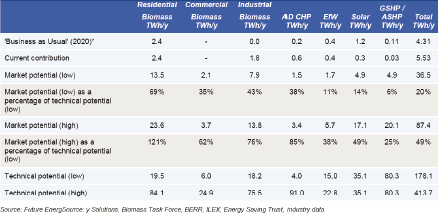
In Northern Ireland, MOSAIC segmentation research undertaken by Experian (2005) on behalf of the Energy Saving Trust indicates that there are 25% of households (Environmentally Mature and Comfortable Conservatives) that are most likely to take up renewable energy technologies.
Using this segmentation data, the Northern Ireland Energy Agency estimates that there is potential for 133,9501 biomass retrofit installations in N. Ireland over the next 5 years, plus 12,5002 new build opportunities over the same period. See Table 4.
Table 4. Potential for domestic renewables in N. Ireland over 5 years.
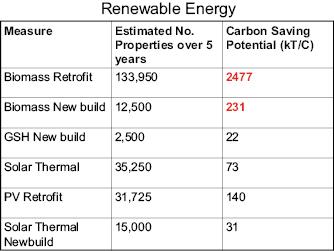
Assumptions – number of houses achievable over a five year period taking a total of 705,000 houses in NI (NIHE, 2007)
Carbon based on EST figures for UK, supplied 2007-08.
1 Biomass Retrofit - Based on 25% of oil and solid fuel properties (76% of total) who are Environmentally Mature and Comfortable Conservatives = 25% of 535,800 = 133,950
2 Biomass Newbuild - Based on 10,000 new builds pa over 5 years = 50,000 * 25% (EM + CC) = 12,500
GSH Newbuild - Based on 5% taking action @ 10,000 newbuilds pa over 5 years = 50,000 * 5% = 2,500
Solar Thermal Retrofit - Assumed 20% of existing houses with suitable south facing roof who are EM + CC i.e. 705,000 * 0.2 = 141,000 * 25% = 35,250
PV Retrofit - Based on same as solar retrofit - 141,000 * 25% - reduced by 10% because of larger roof area required = 31,725
Solar Thermal New build - Assume 30% of new properties have correct roof aspect and heating system i.e. 10,000 * 5 * 30% = 15,000
Source: Northern Ireland Energy Agency, January 2008.
However, the capital cost of biomass boilers is a known barrier to uptake (Action Renewables, 2005) and given the imminent closure of the Reconnect grant programme which provides £3,250 towards the cost, this potential is unlikely to be fulfilled without new government support mechanisms.
Further evidence is provided in the Renewable Heat Initial Business Case report for DEFRA/BERR, 2007, which concludes that (i) a number of renewable heat technologies do require financial support to make them cost competitive and (ii) a number of such technologies do present relatively affordable carbon savings. [Also see Table 7.]
The range of support available to renewable initiatives at local, national and European levels.
To compare the range of fiscal and other incentives offered elsewhere to support the development of a renewable energy industry and the infrastructure to support it.
Other EU markets have made good progress and their experiences show that renewable heat can be driven by policy support, with particular focus on the residential district heating sector. See Table 5.
Table 5. Renewable Heat Markets.

Since district heating may not be feasible on a large scale in N. Ireland given its rural nature, and negative public perceptions surrounding community heating (DARD 2004), the initial focus is likely to be on individual residential technologies.
Table 6 shows that the combined use of capital grants and the Carbon Emissions Reduction Target (CERT) represents the most effective form of support for residential technologies. CERT is similar to N. Ireland’s Energy Efficiency Levy. See Table 6.
Table 6. Residential Sector – individual property based heat solutions.
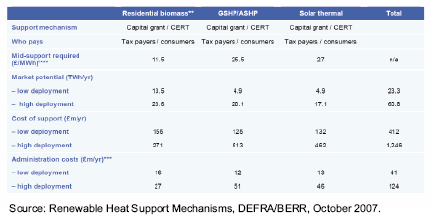
Existing and upcoming policy measures such as the stricter requirements in the 2006 Building Regulations, Part F; the Code for Sustainable Homes and PPS 18 should help to increase the use of low carbon technologies in new build homes in N. Ireland.
However, given that there are only 10,000 new builds per year compared to the existing 705,000 dwellings, of which 133,950 would be suitable for switching to biomass over the next 5 years, biomass retrofit holds significant carbon saving potential in N. Ireland.
Table 7. Carbon Savings.
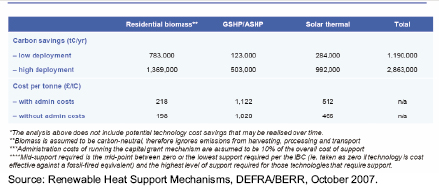
Table 7 shows that residential biomass heating systems offer the opportunity for significant carbon savings at a cost comparable to onshore wind of around £215/tC. (Source: BERR/DEFRA, cited in Renewable Heat Support Mechanisms, 2007.)
Therefore, supporting domestic sector end use of biomass fuels provides a cost effective method of reducing N. Ireland’s carbon emissions.
(f) The potential role of farm and rural businesses and rural communities in the delivery of a renewables programme which contributes to the sustainability of those business and the wider community.
The potential for producing and using biomass fuel offers an opportunity for diversification of farm and rural businesses3; however, in order to support such future expansion, and to benefit from the associated carbon savings, the N. Ireland biomass supply chain must be robust.
Summary of the current status of the biomass supply chain.
Fuel suppliers:
- There are 10 biomass fuel suppliers in NI, and 17 in RoI.
- Balcas produces 50,000 tpa of pellets and has 8 purpose built pellet delivery lorries with a spare lorry as backup.
- Pellet quality is well above the min European standards. Brites conform to wood pellet standard CEN / TS 14961.
- Costs: Domestic bulk order 3 tonnes £118/tonne + VAT @5%. Bags £2/10kg bag. Commercial 16 tonnes £100/tonne + VAT @ 17.5%.
Installers:
- The Renewable Energy Installer Academy has 559 installers, of which 169 are biomass installers.
- LCBP has 253 NI installers, of which 54 are biomass installers.
- LCBP Phase 2 has 7 Framework Suppliers, of which 3 are biomass suppliers.
Estimated SRC potential.
By 2002, DARD estimated that there were 447 ha of SRC planted in Northern Ireland. In 2004, the Challenge Fund for SRC supported further planting and by early 2007 another 400 ha had been planted or approved, with a further 410 ha approved for the 2007 planting year (DARD, 2007).
However, given DARD’s estimated potential for 5,000 ha of Northern Ireland’s grassland to switch to willow, there is much scope for further SRC development across Northern Ireland. Hence, the Northern Ireland Rural Development Programme 2007-2013 should continue to support SRC.
Rural business opportunities.
- The establishment of SRC plantations.
- The establishment of Energy Services Companies (ESCos) by farmers, using locally grown willow or locally manufactured pellets.
- Note that Balcas exports a significant percentage of its 50,000 tonnes of wood pellets to power stations in GB due to the limited local demand at present. This is both economically and environmentally sub optimal and demonstrates the risks to the potential biomass industry of leaving all the risk of unplanned development with the private sector.
- The establishment of district heating networks supplied by locally grown willow plantations. Capital grants would assist the installation of centralised community wood chip boilers. E.g. Camphill in Clanabogan, Co. Tyrone.
- The establishment of district heating supplied by wood pellets. Capital grants would assist the installation of centralised community wood pellet boilers. E.g. The Share Centre in Lisnaskea, Co. Fermanagh.
Environmental impacts of SRC.
In Northern Ireland, SRC will typically replace grassland therefore there are no issues regarding deforestation. Indeed, SRC is likely to provide positive benefits to wildlife, diversity of plant species, insects and birds; furthermore, it offers opportunities for bioremediation. (DARD, 2004)
(g) The ways by which the Department for Agriculture and Rural Development could implement and resource a renewable energy programme in a manner which contributes to the sustainability of the agricultural/rural sector and contributes to Northern Ireland’s renewable energy targets.
To provide continued support for SRC plantations.
- To support the establishment of Energy Services Companies (ESCos) by farmers, using locally grown willow.
- To support the establishment of Energy Services Companies (ESCos) by farmers, using locally manufactured wood pellets.
- To support the establishment of district heating supplied by locally grown willow plantations and to provide capital grants for the installation of centralised community wood chip boilers.
- To support the establishment of district heating supplied by wood pellets and to provide capital grants for the installation of centralised community wood pellet boilers.
- To provide capital grants for the installation of domestic and non-domestic wood fuelled boilers.
Recommendations
1. To call for the development of a ten year strategy bringing together the Government, the farming and private sector to create a framework for the orderly role out a biomass heating industry;
2. To provide continued support for SRC plantations.
3. To support the establishment of Energy Services Companies (ESCos) by farmers.
4. To support the establishment of district heating networks where appropriate.
5. To provide capital grants for the installation of domestic and non-domestic wood fuelled boilers.
Conclusion.
Northern Ireland has a large rural population who cannot be economically connected to the natural gas network and who are at present and who will otherwise remain dependent on more polluting fuels such as oil and coal for space and water heating. Northern Ireland is fortunate in having the possibility of remedying this situation from the development of indigenous resources. This potentially represents a five fold gain. It reduces CO2 emissions, it provides space and water heating costs for rural households on terms which would be immune from the international upward pressure on fossil fuel prices, it provides a revenue stream for the farming community, it creates a rural supply and installation industry with the potential of local manufacturing, and finally it would reduce Northern Ireland’s exposure to fuel imports.
However this opportunity will be lost if all that Government is prepared to do is offer verbal support and a few short term demonstration schemes or a grant regime of short or unpredictable duration.
New energy industries require a framework. The fact that biomass unlike gas or electricity does not have wires or pipes does not mean that there is not a need to provide connectedness and confidence between all those who are potential actors in this industry – the farmers who are the suppliers of the fuel, the installers of the appliances, the manufacturers of the appliances, the financial institutions who are required to finance the transactions and the end customers who put their confidence in this industry. If a new biomass industry is to develop and realise its potential a longer term view is needed.
The responsibility for ensuring that this happen lies with Government.
Bibliography
Action Renewables, 2005, Potential Market in Northern Ireland for Small Scale Renewable Energy Technologies, Market Research Report.
Action Renewables, 2007, presentation at the Renewable/Sustainable Development Conference, Royal Town Planning Institute, 2007.
DARD, 2004, Study on the Potential Market for, and Economic and Environmental Sustainability of, Heat and Power and Heat-Only Systems in the Rural Economy.
DARD, 2007, Renewable Energy Action Plan.
DEFRA/BERR, 2007, Renewable Heat Business Case.
DEFRA/BERR, 2007, Renewable Heat Support Mechanisms.
Energy Saving Trust, 2005, MOSAIC Segmentation Research, Experian.
Northern Ireland Environment Link
Northern Ireland Environment Link is the networking and forum body for non-statutory organisations concerned with the environment of Northern Ireland. Its 49 Full Members represent over 90,000 individuals, 255 subsidiary groups, have an annual turnover of £44 million and manage over 230,000 acres of land. Members are involved in environmental issues of all types and at all levels from the local community to the global environment.
These comments are agreed by Members, but some members may be providing independent comments as well. If you would like to discuss these comments we would be delighted to do so.
Prof Sue Christie, Director
Northern Ireland Environment Link
89 Loopland Drive
Belfast, BT6 9DW
P: 028 9045 5770
E: Sue@nienvironmentlink.org
W: www.nienvironmentlink.org
Northern Ireland Environment Link is a Company limited by guarantee No NI034988 and a Charity registered with Inland Revenue No XR19598
Introduction
Northern Ireland Environment Link (NIEL) welcomes the Agriculture and Rural Development Committee’s decision to hold an inquiry into the development of renewable energy within the rural community and alternative land uses. NIEL would encourage the Committee to see this ‘invitation to submit written evidence’ as the start of the evidence gathering and stakeholder involvement process. We would encourage further opportunities for engagement to include inviting presentations to the committee, external consultation events, site visits to examples of best practice (local and international) and submissions from local and international experts.
Terms of Reference
The terms of reference provide a useful steer for those wishing to provide comment. However, NIEL believes that greater emphasis should be placed on trying to ascertain the relative benefits of each energy source/renewable technology and in investigating the potential impacts of any support mechanisms on the wider integrity and sustainability of Northern Ireland’s countryside and rural communities.
The Terms of Reference seem to avoid mentioning the issue that is driving much of the moves towards renewable energy. Although climate change is not the only reason for encouraging renewable energy development and alternative land uses, it seems perverse that the inquiry does not use the opportunity to contextualise the problem and put forward their proposed report as a contribution to efforts to mitigate and adapt to climate change. Linking the enquiry to the climate change challenge would also draw more attention to the importance of land use policies, which has slightly been lost in the Terms of Reference.
Northern Ireland Environment Link, Scottish Environment Link, Wales Environment Link and Wildlife and Countryside Link prepared a policy paper, Bioenergy in the UK: Turning Green Promises into Environmental Reality, which sets out measures that the Links believe need to be taken by national and devolved governments to ensure that UK bioenergy production and use develop in a sustainable way. NIEL would like this document to be given due consideration in the Committee’s inquiry (copies will be forwarded to Committee members but also see Bioenergy in the UK).
Context
The science of climate change is now well established and the evidence to suggest that urgent action is needed is overwhelming. For example:
- The Intergovernmental Panel on Climate Change (IPCC), a group containing over 2500 scientists, reported (AR4) that ‘warming of the climate is unequivocal’ and that ‘most of the observed increase in temperature is very likely (90%) due to human activity’. The findings of the IPCC are also supported by the Academies of Science of the 11 largest countries in the world, including the Royal Society of London.
- The Stern Review calculated that the dangers of unabated climate change would be equivalent to at least 5% of GDP each year. However, when more recent scientific evidence is included in the models, the Review estimates that the dangers could be equivalent to 20% of GDP or more. In contrast, the costs of action to reduce greenhouse gas emissions to avoid the worst impacts of climate change can be limited to around 1% of global GDP each year. The central message is that reducing emissions today will make us better off in the future: one model predicts benefits of up to $2.5 trillion each year if the world shifts to a low carbon path.
- The recent SNIFFER report on the impacts of climate change on Northern Ireland identified a number of direct effects, mostly negative, on human health, the economy, natural habitats and water resources.
- John Sweeney’s research and modelling in Maynooth identifies the significant changes in agriculture that will particularly affect the eastern side of Northern Ireland. Climate Change will affect the agricultural practices and the crops that are grown through differing climatic conditions both in summer and winter. Many of these impacts are inevitable given the temperature rises that are already assured for the future, but it is clearly in Northern Ireland’s self interest to do its utmost, along with others, to minimise temperature rise. JS Climate Change and Agriculture
Northern Ireland should contribute its fair share of emissions reduction to stabilise the world’s climate at not more than 2oC above pre-industrial levels. Our scientific understanding of climate change is evolving but it is UK and EU policy that in order to prevent the most dangerous effects of climate change global temperatures should be stabilised at no more 2oC above pre-industrial levels. This is the imperative that informs all target setting and is determined by the concentration of carbon dioxide in the atmosphere.
Renewable Energy is under-utilised in Northern Ireland despite the existence of an impressive range and quantity of resources: only 4% of Northern Ireland’s electricity is generated from renewables, compared to 12% in Germany. NIEL believes that small renewable energy generators have an important role to play in providing a significant proportion of Northern Ireland’s energy needs with the added benefits of reducing the release of greenhouse gases and increasing the security of electricity supply by diversifying the numbers and types of sources.
Responding to the Terms of Reference
(a) The recent and current policy framework for the development of renewable energy in Northern Ireland, focussing on but not limited to those policies developed and implemented by the Department of Agriculture and Rural Development.
The UK Climate Change Bill will place legally binding emission targets on the UK Government. NIEL supports the UK Climate Change Bill and the NI Assembly’s desire to be included within the scope of the Bill. In addition, NIEL will continue to call on the Assembly to introduce legislation which will specifically require emissions reductions targets in Northern Ireland. We believe this is necessary to ensure the region contributes its fair share to international efforts to limit global warming. An annual Northern Ireland Carbon Budget, which includes legally binding regional targets, should be set to enable an immediate and sustained decline in Northern Ireland’s greenhouse gas emissions by an average of at least 3% per annum. The Northern Ireland Assembly should introduce cross-departmental policies and measures which will reduce carbon emissions and allow people, infrastructure, biodiversity and natural systems to adapt to changing climatic conditions.
Legally binding carbon reduction strategies and targets at the devolved level should include the specification of emissions reductions sector by sector, and the instruments by which government will ensure that each sector will stay within its carbon budget. This would:
- Translate the commitment to make a fair share reduction into policy.
- Curtail debates as to whether to cut emissions and enable the focus to be on how they should be cut, thus making the task more politically straightforward.
- Ensure that Northern Ireland benefits from the social, economic and environmental gains to be derived from cutting carbon emissions.
Adaptation is about developing resilience in natural systems that allow them to respond to change. The Bill should make provision for a programme for action on adaptation every three years, not just a report. This would help to deliver on the conclusion of the Stern Report that: ‘Government has a role in providing a clear policy framework to guide effective adaptation by individuals and firms in the medium and long term’.
It is vital that Northern Ireland should take advantage of the economic opportunities that will arise from the transition to a low carbon economy, and the targets will act as a potent driver for this. Long term targets should also provide the stable policy framework necessary for investor confidence and thereby aid the economy, not disadvantage it. The Carbon Trust study of 2005 provides information on how a reduction of 60% can be achieved while providing benefits in terms of job creation and economic growth and this information can provide a strong base to plan our emissions reduction programme. A recent report by WWF and others provides information on how an 80% reduction can be achieved at the UK level 80% Report.
According to the terms of the EU Energy package announced on 23rd January 2008, one of the UK’s legally binding targets is to achieve a 15% share of renewables in the final energy demand by 2020. A series of interim targets were also agreed by the EU on the following basis: member states must achieve a 25% of their 2005-2020 renewables increase by 2012, 35% by 2014, 45% by 2016, and 65% by 2018. Together these targets would make up an “indicative trajectory” that each member state would be expected to follow.
The EU energy package will also formalise transport fuel targets which the UK are introducing through the Renewable Transport Fuel Obligation (RTFO). The proposals set a minimum target of 10% for use of renewable transport fuels (this includes hydrogen fuels, etc as well as biofuels) in transport in the EU to be reached by 2020. This element remains controversial as serious questions have been asked of the policy’s sustainability. The RTFO includes sustainability criteria but at the moment the criteria are not mandatory. The DARD Renewable Energy Action Plan deals mainly with bioenergy development. Again, we refer you to the Links’ Bioenergy in the UK report.
The Sustainable Development Strategy First Steps to Sustainability introduced a target, “to ensure that 40% of electricity consumed in Northern Ireland is obtained from indigenous renewable energy sources beyond 2025.” The Programme for Government restated the SD Strategy target to ‘reduce Northern Ireland’s carbon footprint by 25% (on 1990 levels) by 2025’.
A number of policies recently announced by Assembly Ministers will impact on Northern Ireland’s ability to reduce emissions. There were a number of positive elements including the release of the draft Planning Policy Statement 18: Renewable Energy and the Minister for Finance and Personnel’s announcements on the rating system. If implemented the ratings measures would replicate similar schemes already operated by some local authorities in England. Building Regulations have also been updated for the better in recent years but NIEL was disappointed that mandatory microgeneration in new buildings will not now be required.
In January 2008, commenting on a North - South study on renewable energy and the electricity grid (‘The Grid Study’), the Minister for Enterprise Trade and Investment, Nigel Dodds, said that Northern Ireland “can make a significant contribution to the UK’s climate change goals by enhancing the amount of electricity generated from local renewable sources” and that “it is clear that we must be more ambitious in setting future renewable energy targets.”
(b) The range of renewable technologies currently in operation or planned in rural communities, taking into account, as appropriate, similar projects elsewhere.
(c) The relative importance in terms of contributing to Government’s renewable energy targets, of heat from renewable sources, electricity from renewable sources and fuel from renewable sources, and how relevant each could be to the NI economy.
There is huge potential for renewable energy generation in Northern Ireland. An upcoming NIEL publication, Climate Change: the Energy Issue, will provide information on many of these technologies. Macro-wind (Airtricity currently has plans to build a 10GW wind-farm, which could supply enough power for eight million homes) and tidal current (it is estimated that the UK has a 70 TWh/year marine energy resource) energy offer the most potential for renewable energy generation, with solar, geothermal, anaerobic digestion (the RICS has suggested that 30% of Northern Ireland’s vehicle fuel demand or 16% of its heat and power demand could be supplied by anaerobic digestion of biodegradable waste), small-scale hydro and wind, biofuels and CHP from biomass all likely to contribute to the energy mix.
The Grid Study discusses how renewable energy can be integrated with the grid. In addition, decentralised electricity production can be much more efficient, especially for rural communities and/or where the demand for energy is dispersed, and should be a very attractive option for many farmers, especially those who could produce and consume their own energy from local sources.
The table below examines the potential installation of renewable energy technologies in new homes, required to meet a 2016 target of zero carbon homes (adapted from Renewables Advisory Board, 2007).
Technology |
Minimum capacity installed to meet building regulations for new Zero Carbon homes (kW) for 300,000 new homes per year in UK |
Northern Ireland capacity potential based on 12,000 new homes per year (kW) |
Northern Ireland generation potential (GWh) |
|---|---|---|---|
| Electricity | |||
| PV | 237350 | 9494 | 74.90 |
| Micro Wind | 24222 | 968.88 | 2.55 |
| Small Wind | 116253 | 4650.12 | 12.23 |
| Large Wind | 20479 | 819.16 | 2.15 |
| Medium / Large Biomass CHP | 215903 | 8636.12 | 22.71 |
| Total Electricity | 24,568.28 | 114.54 | |
| Heat | Based on current levels of uptake(1) | ||
| Medium / Large Biomass Heat | 339 | 1500 | 10.52 |
| Community Biomass Boiler | 330 | 1000 | 7.01 |
| Solar Water Heating | 25357 | 2360 | 2.60(2) |
| Heat Pumps | 2451 | 4965 | 3.64(3) |
| Domestic Biomass Boiler | 1550 | 33,913.5 | 10.81(3) |
| Total Heat | 43,738.5 | 34.58 |
1. Heat potential from micro and embedded renewable generation in Northern Ireland’s new build housing in 2016 is estimated using current levels of installation in 2007.
2. Based on an average annual generation of 2207kWh per panel
3. Based on an average space heating demand of 11,000kWh per annum per dwelling
Biofuels – While we believe that biofuels have the potential to play a role in replacing a proportion of the fossil fuels used in transport, they are not a panacea and without ensuring strong sustainability criteria within any policies for their production and use, increasing the demand for and use of biofuels could be more damaging than beneficial. It is unacceptable to promote biofuels which cannot be reasonably shown to offer genuine carbon savings (based on complete life cycle costings) and which do not meet sustainability criteria.
Broadly speaking, we feel that second generation biofuels are the most likely to satisfy sustainability criteria. If possible, biofuels should be produced from the ‘waste’ of food crops or food; thus causing less disruption to existing land use, food supply, natural habitats and water availability. However, there must also be a commitment, from the outset, to introduce policies which will reduce the demand for energy within the transport sector and the UK energy market as a whole. We recommend:
- Ensuring that biofuels meet strict, externally audited, widely accepted and mandatory sustainability and greenhouse gas balance standards, including at least a 50 per cent saving on greenhouse gases compared to fossil fuels, taking a whole life-cycle approach (including fertilizers, pesticides and effluent treatment).
- Taking account of the greenhouse gases caused by land-use change and forest clearance to grow biofuels so that, where high carbon land-uses are lost, no saving is claimed.
We would also direct policy makers to the recently released UN report, Sustainable Bioenergy: A Framework for Decision Makers, which concluded that, “Only through a convergence of biodiversity, greenhouse gas emissions and water-use policies can bioenergy find its proper environmental context and agricultural scale.”
The growth of short-rotation-coppice could also be aligned with wastewater treatment, however, it is important to ensure that discharge conditions are applied. Willow has been used as a biofilter of wastewater with some success, however, long monitoring must be maintained. Biofuels from managed and coppiced woodlands can also supply a valuable energy source on a smaller, but also significant, scale. Small native woodland areas could be associated with rural dwellings and be used as an energy source and also contribute to biodiversity, water management and landscape enhancement.
(d) The range of support available to renewable initiatives at local, national and European levels.
(e) To compare the range of fiscal and other incentives offered elsewhere to support the development of a renewable energy industry and the infrastructure to support it.
We believe that the microgeneration market should be encouraged by offering enhanced rates, banded by technology (primarily through unit price but if necessary through ROC trading) for the electricity traded by microgenerators and by making it administratively simple for them to access these payments.
We would promote initiatives which replicate schemes being run in Germany whereby microgenerators are guaranteed a favourable price (banded by technology) for their electricity for a fixed (medium-to-long term) period of time. This system is acknowledged, by the Renewable Energy Foundation (REF) amongst others, to have resulted in a greater mix of technologies and has given German policy makers the flexibility to adapt their policies as technologies emerge and develop.
The ROC system, as it currently operates, results in a predominant technology (onshore wind), which is often economically viable without the ROC, being pursued rather than encouraging innovation in emerging technologies.
On January 28 2008, the Irish Energy Minister, Eamon Ryan, unveiled a new renewable energy grant scheme which will offer funds to businesses, schools and hospitals that want to install biomass-fuelled and anaerobic digestion combined heat and power units (CHPs).
The Renewable Energy Installer Academy (REIA), a pilot project funded under the INTERREG programme as a joint initiative of Action Renewables in Northern Ireland and Sustainable Energy Ireland in Republic of Ireland, was developed in response to the recognition that the lack of trained installers and specifiers is one of the critical barriers to the development of a sustainable renewable energy market. It is now planned to build upon the success of the pilot project and to develop REIA into a sustainable association for renewable energy installers to promote and ensure quality renewable energy installations. A key function of REIA will be the accreditation of training facilities to deliver the required competence in renewable energy installers and the registration of installers. The establishment of sufficient capacity in training institutes to deliver training will be essential to meeting the training needs and ensuring the competence of renewable installers.
Case Studies from the Concordia Study Trip to Freiburg, Germany
Concordia (Northern Ireland’s social partnership group) visited Germany in November 2006 to study the application of sustainable development in the city of Freiburg. The tour covered a wide range of topic including how renewable energy has been used on farms and in a rural setting. Notes from the trips to a number of farms and settings, which detail a range of inivative schemes and incentives, can be found below. Complete Freiburg Report
A Solar Roof
The main change to this farm enterprise was the addition of solar panels installed on the roof of the barn. These give a total output of 29.4 KW and are controlled by four transformers. The control centre links via the phone lines to a control centre in Freiburg which manages the input of the generated electricity into the grid. The project cost 135,000 euros and was financed by both private funding from the farmer and bank loans. The price received for the electricity is 54.5c per KW which is guaranteed for 20 years under contract. Future contracts will not be as attractive for newcomers to the business but this farmer gained best price because he was one of the first to take up the initiative. There is no direct state funding and a monthly management fee is paid to the power company for managing the system remotely. There is still a wooded area maintained and wood is cut and chipped for heating the house on the property.
Farm Biogas
The farm takes delivery of liquid slurry from other farms as fuel for a biodigester. This is delivered at no cost by local farmers and they exchange raw slurry for the digested slurry which is the end product of the process and acts as a better soil improver. Between 15 and 20 cubic metres of slurry is used per day. The slurry is mixed and bulked up with corn, grass and wheat in 1 tonne batches. Approximately 6 tonnes are used of these per day.
The cost of the plant was 700,000 euros. This was financed mainly by bank loan: the lower interest rate through a state bank is a considerable incentive (2% against the standard banking rate). Income is derived by selling the electricity into the grid. (main income element) and supplying a district heating system which includes neighbouring houses and the local sports ground. The rate achieved for the generated electricity is 10.1c per KWh with an additional top-up of 6c as an organic allowance for a guaranteed 20 year contract. His maximum output is 260KWh x 67000 hours per year.
Heat Exchange
This dairy farm produces milk that is sold to a local dairy. A heat exchanger is installed to use the heat from the fresh milk to raise the temperature of the water for heating the house to a temperature of 35 degrees centigrade. The exchanger produces 1 litre of water at 35 degrees for every litre of milk going through the system. The farm also has a wood chip burner linked to the system which is used in winter to boost the temperature. The farm also rented land for a wind turbine and invested in the generation of electricity. The tubine is a 1.2 megawatt machine and has been financed through a mixture of private investment (140 investors covered one third of the total cost) and a major bank providing two thirds the cost. The total cost of the turbine was roughly 4 million euros. The electricity generated gets a value of 10c per KWh. This is equivalent to the price achieved within Northern Ireland, but Northern Ireland has a much better wind resources that would allow more electricity generation per turbine.
Sewage Plant
The sewage plant takes all of the waste water from a local highly residential area of roughly 40,000 inhabitants. All of the standard wastewater treatment processes are employed on site but the plant also allowed for the treatment of nitrogen and phosphorous. The main difference on site compared with plants in Northern Ireland was the use of a biodigester producing biogas to fuel a generator. This plant took all of the solid material from the waste water, treated it to reduce the pathogens and producing compost which is taken by local farmers. The farmers are paid 40 euros per tonne for the removal of the material and it is used as a soil improver. Most of the energy produced is used on site with any additional power sold into the grid.
(f) The potential role of farm and rural businesses and rural communities in the delivery of a renewables programme which contributes to the sustainability of those business and the wider community.
The renewable sector in Germany supports 170,000 people and existing German government support measures promoting renewable energy could create 130,000 new jobs by 2020, according to the German Environment Ministry. The figure for the UK is only 25,000 with a small percentage of these jobs in Northern Ireland. Northern Ireland has huge potential for developing and exploiting renewable resources, a manufacturing tradition, a skilled workforce and a need and Government commitment to develop new infrastructure. The scale of the opportunities offered by a low carbon economy were illustrated, for example, by the 1999 analysis by Greenpeace which showed how over 30,000 new jobs could be created in the UK if the Government committed to a target of 10% of electricity from offshore wind in the next 10 years. In a recent speech, the Prime Minister stated that the overall added value of the low carbon energy sector by 2050 could be as high as $3 trillion per year worldwide and that it could employ more than 25 million people.
(g) The ways by which the Department of Agriculture and Rural Development could implement and resource a renewable energy programme in a manner which contributes to the sustainability of the agricultural/rural sector and contributes to Northern Ireland’s renewable energy targets
The CAP remains a key driver of Northern Ireland’s agricultural policy. As mentioned in the introduction, agriculture can play a significant role in mitigating and adapting to climate change beyond simply contributing to renewable energy targets. Permanent grassland is one of the most important farmed habitats in the EU (and particularly so in Northern Ireland) for biodiversity, and it is also a significant carbon sink. NIEL believes that cross-compliance should be strengthened to ensure permanent grassland is protected. NIEL considers it essential that measures to address climate change are introduced into both pillars of the CAP. However, it is important to recognise that there may be additional costs for implementing measures needed to adapt farmed land to address the effects of climate change on biodiversity and it is appropriate that adequate funding is provided to deliver these measures.
In the longer term we believe the CAP must evolve to support sustainable land management and to address the environmental challenges we are facing. We seek a radical re-orientation of land management policies to:
- protect and restore our wildlife and habitats;
- protect and enhance our historic environment, landscapes and woodlands;
- ensure the sustainable use of our limited water and soil resources;
- help mitigate and adapt to the challenges arising from climate change;
- promote sustainable local food production; and
- ensure the secure and sustainable production of animal welfare friendly food and other commodities.
Additionally, adapting farming practices to make them more sustainable will also be important so that agriculture can reduce its emissions of greenhouse gases and protect soil and water resources.
Much political, legislative and media attention has focused on mitigation issues, while adaptation has been given much less thought. This is especially true here in Northern Ireland and perhaps the UK in general, as there has been a perception that climate change will not have a significant impact on the region’s natural systems and societal infrastructure in the short to medium term. It is worth noting that, while more attention has been directed at adaptation recently, considerable further effort is required.
The Woodland Trust report, Adapt or Die? Climate Change and Woodland, introduces a number of policy priorities for inclusion in an adaptation strategy. In this report the Trust argues for the importance of landscape scale action. Any attempt to help biodiversity adapt to climate change should place a particular emphasis on the urgent need to conserve and create landscapes welcoming to wildlife because of the scale of the action required and the timescale needed for habitats to develop to maturity. By making natural systems more resilient, not only will biodiversity benefit but human society will also benefit from the ‘services’ which natural ecosystems provide such as flood relief, healthy soils, carbon sinks and future sequestration, water quality and renewable natural resources. Woodland, as the most widespread semi-natural habitat, is uniquely placed to act as a key component of a more sympathetic and receptive landscape for wildlife in the face of climate change. Woodland Trust - Adapt or Die
NIEL has identified the urgent need for climate change adaptation measures to be made a priority. We believe that climate change impact assessments should be incorporated within all government policies and strategies. The assessments should detail the impacts of programmes and projects on mitigation targets and ensure that all policies take into account the ability of human and natural systems to adapt to climate change. In particular, planning can be used as a key driver of a low carbon economy and can help deliver ‘future proofed’ infrastructure and natural systems. Planning policy should ensure that the impacts of any proposed development on carbon emissions and the potential impact of climate change consequences on the development are considered. It is particularly important that climate change impacts are a strong consideration in all decisions relating to nature conservation as new ways of looking at designated sites (e.g. buffer zones, corridors, low intensity networks and landscape scale actions) will be required for wildlife to be able to adapt to changing climatic conditions. Planning and nature conservation policies, and action plans, should facilitate the implementation of landscape scale action to help habitats and species adapt to climate change. The traditional practice of designating nature reserves as the primary means of protecting either species or habitats will need to be reviewed.
Powertech Ltd
40 Devesky Rd, Carrickmore,
Co. Tyrone
BT79 9BU
Email: info@powertechireland.com
Powertech Ltd
Powertech Ltd is a renewable energy company in Co. Tyrone, formed in 2003, with thirty employees. The business is centered around solar, geothermal and biomass heating systems. To date the total biomass heating capacity installed in Ireland by Powertech is 20MW. These installations vary from domestic building to hotels, schools and other industrial buildings.
Summary of Response
In Northern Ireland, as elsewhere, there will continue to be a need for sources of electricity and heat. At present, 90% of this need is met by using fossil fuels.
The supply of such sources is limited, dependent on extraneous factors and causing irreparable damage to the environment. European Directives require member states, under penalty of severe fines, to reduce dependency on fossil fuels and to reduce carbon emissions.
Existing sources must therefore be replaced by renewable sources.
A key source of renewable energy can be obtained by growing wood.
With the adoption of a new approach, wood for energy could be produced in large quantities at a cost comparable to existing fossil fuels, such as coal, oil and gas, which would also give a good return on investment to the producer. This could rejuvenate the agricultural sector, create employment and revenue for the rural community, while reducing dependence on the dwindling supply of imported fuels.
This would involve a new approach both to the power-generating infrastructure and to the method of production of wood (biomass).
Existing power generation facilities need to be adapted to burn biomass.
New power generation facilities, strategically located, need to be constructed so that the heat generated in the production of the electricity can be utilised.
The technology involved in producing electricity and heat from biomass is clean, simple, and tried and tested throughout the world, including Northern Ireland (as exemplified by Balcas in Enniskillen).
There needs to be a radically different approach, as has happened elsewhere, to the growing of wood, which can achieve high output at low cost. This will involve short rotation forestry (6-8 years) instead of existing 25-30 years, the selection of different species of trees,(e.g. eucalyptus, poplar), the adoption of different methods of silviculture, and the use of land no longer used or required for traditional farming crops.
Large quantities of land in Northern Ireland, with good accessibility and easy harvesting potential, are now unused or are under-used for agricultural purposes, and are readily available for the growing of trees.
Many of the traditional sources of income on family farms are no longer available and need to be replaced by new revenue-generating sources. Short Rotation Forestry (SRC) could play a major role in achieving this.
To be successful and to gain the support of the farming community, this strategy will require the support of government, both for the power-generating infrastructure and for the growing of wood to supply the infrastructure. This could largely be met by the restructuring of current financial incentives and/or tax remissions for capital investment in renewable energy, extended to include crop production.
Savings made by government in meeting the requirements of European Directives and thereby avoiding the payment of fines which would result from non-compliance could be used to help finance these incentives.
Submission to Inquiry
1. Our purpose in making this submission is to encourage the Committee to examine the potential to use a much greater proportion of the land to help meet the demand for renewable energy and thereby to contribute to a key element of the Programme for Government – to reduce greenhouse gas emissions by 25% below 1990 levels by 2025, while providing significant economic benefits to the farming community. In this submission, we wish to focus in particular on the contribution that a fresh approach to the growth of wood, and in particular eucalyptus, specifically for energy purposes, can make to the government’s targets for renewable energy and for the development of the rural economy.
2. In this submission, we will first refer briefly to the general background and then deal in turn with each of the terms of reference of the Inquiry.
Background
3. In recent years, there has been a sharp decline in the use of the land for traditional agricultural purposes. Income from traditional farming activities has also declined sharply for the vast majority of landowners. There is now a significant proportion of land, which in the past was required for the growth of agricultural produce, now available for other uses. This is likely to be the situation for the foreseeable future, particularly in light of EU set-aside and other policies.
4. In parallel with this, there is an urgent need in the island of Ireland to develop alternative sources of energy. The island of Ireland has the most energy import-dependent economy in the industrialised world – importing almost 90% of all its fuels. Climate change due to greenhouse gas emissions is now recognised as a key international policy issue. The government is committed to meet its obligations arising from the Kyoto Protocol and European Union directives. All these factors make it imperative that every viable option to secure a reliable and safe energy supply is explored. This submission will focus on one specific means – the development of Short Rotation Forestry (SRF) – to achieve that objective, while making an important contribution to the economic wellbeing of the rural community.
Comments on terms of reference
Term of reference a)
5. The Department of Agriculture and Rural Development (DARD) has already begun, in a number of key documents in recent years, to chart a policy direction which, if implemented and developed, would begin to address some of the issues which face rural communities. These documents include:
6. The Northern Ireland Rural Strategy 2007-2013;
Northern Ireland Forest Service – A Strategy for Sustainability and Growth;
The Northern Ireland Forest Service Business Plan for 2007-2008.
7. Key elements of the policy framework include:
- Promoting alternative land use options through increased conversion of farmland to woodland and increased exploitation of non-food crop opportunities;
- Focusing on the central role of agriculture and forestry in the development of renewable energy;
- Expanding forest cover to contribute to renewable energy policies, while providing an alternative and viable land use for farmers and landowners, and making an important contribution to the balanced development of rural areas;
- Encouraging the development of new afforestation, largely led by the private sector, with the aim of doubling over the next 50 years the area of forest;
- Strengthening the social and economic infrastructure of rural areas by promoting and expanding entrepreneurship and employment, community capacity, skills acquisition and organisation for local strategy development.
8. In the wider policy context, the government has introduced Renewables Obligations for electricity production and road transport fuel, which involve obtaining an increasing proportion of electricity from renewable sources.
Comments in this submission on subsequent terms of reference will suggest a strategy to achieve the above objectives.
Term of reference b)
9. Good work has been done in recent years in Ireland, north and south, with regard to renewable technologies, but this still remains at a low level in comparison with other European countries and it has had only a limited impact on rural communities. This impact is likely to remain minimal, because in general they do not involve the production of goods or services by a significant proportion of the farming community, they do not involve the use of land for productive purposes, and therefore they do not lead to the generation of economic benefits for the rural population. The vast majority of existing woodland in Northern Ireland is coniferous. In general, it is planted in upland mountainous areas with poor accessibility; it takes about 30 years to mature, and harvesting costs are high. As a result, the return on investment to the rural community is extremely limited, and it is unlikely to be an attractive option in the long term.
10. In this general context, and in the particular context of land use for the production of wood and for renewable energy purposes, a few comparative statistics may be helpful.
- In Northern Ireland, forest and woodland cover 6% of the land area (approximately 86,000 hectares).
- Forest cover in Great Britain is 12%, in the Republic of Ireland 10%, and in Europe 33%.
- EU policy targets an increase in the contribution of renewables to 12% of Europe’s total energy by 2010.
- 96% of all Europe’s renewable heat comes from wood.
- Austria produces 70% of its electricity from renewable sources, with biomass yielding 11.2% of total energy supply and 21% of heat production.
- 24% of Sweden’s energy and 22% of Finland’s energy come from biomass.
- Sweden plans to be the first country worldwide to eliminate oil from its energy mix by 2020.
11. In its key policy document - A Strategy for Sustainability and Growth - the Northern Ireland Forest Service points out that at current rates it would take well over 100 years to attain even the current Great Britain forestry intensity.. The present targets set for Northern Ireland envisage an annual increase of only 550 hectares per annum in combined public and private forest areas, including 100 hectares of Short Rotation Coppice willow.
Term of reference c)
12. This submission addresses the broad issue of the importance of renewable energy sources for heat and electricity, the contribution which a new approach to the increased production of wood can make to these areas and the economic benefits which this can have for rural dwellers. See sections f) and g) below for details.
Terms of reference d) and e)
13. At present, grants and incentives are available to landowners in Northern Ireland for woodland development. Suggestions in relation to these are included under f) and g) below.
Terms of reference f) and g)
14. The remainder of this submission examines the potential role of one major farm and rural business – Short Rotation Forestry (SRF). It is intended to outline the case for a new approach to afforestation which can provide a realistic, viable and economically sound alternative to existing land use and which can complement other strategies being developed for the provision of alternative sources of renewable energy, involving a new approach both to the power-generating infrastructure and to the method of production of wood (biomass). It argues that Northern Ireland can, and indeed must, produce greatly increased quantities of wood at commercially competitive rates for existing and new power stations, and that this can be done in a way that represents good value for the Northern Ireland economy and a guaranteed local market for producers of wood.
Power-generating Infrastructure
15. One of the key elements will be the adaptation of existing power generation facilities in Northern Ireland in order to burn biomass on a large scale. In addition, new power generation facilities, strategically located, need to be constructed so that the heat generated in the production of the electricity can be utilised. At present, electricity is generally produced independently of heat, and maximum efficiency is not achieved. This is not sustainable in the long or even the medium term. When other sources of fuel are being developed, such as biomass, it makes good economic sense to maximise their potential by the combined production of localised heat and power stations.
16. The technology involved in producing electricity and heat from biomass is clean, simple, and tried and tested throughout the world. An excellent example of this already exists in Northern Ireland where Balcas in Enniskillen has a modern plant in operation which produces combined heat and power.
17. The modification of the existing infrastructure and the development of new infrastructure, as outlined above, will be the engine which will drive the demand for biomass. A guaranteed outlet for biomass in power stations, underpinned by strong support from government, would generate confidence within the farming community to produce wood on the scale which will be required.
Short Rotation Forestry (SRF)
18. A major source of supply for the power stations, whether serving Northern Ireland as whole or smaller sub-regions, would be the large quantities of wood to be produced specifically for this purpose by the farming community. There are large areas of Northern Ireland which are currently not being used for any economic purpose. It is well established that the climate in Ireland is among the best in the world for the growing of trees. Unlike many areas of England, these lands are in the ownership of the farmers who can made decisions, without reference to lessors, about the utilisation of their land for this purpose
19. In order to meet government energy and environmental targets and to help develop the rural economy, there is a need to produce wood primarily for the purpose of meeting our energy needs. This needs to be done in a way that will be economically attractive to those who own land which is now available for alternative use, while meeting energy needs in a reliable manner and at an economic price. This new primary purpose will radically transform the perspective from which certain species of trees are viewed. It will involve a paradigm shift in relation to the development of forestry, resulting in wood being produced predominantly for energy rather than for lumber, and grown largely on arable land rather than in mountainous as heretofore. Because such land was used previously for agricultural crops and already has a good infrastructure, harvesting costs are reduced substantially.
20. Short Rotation Forestry (SRF) is a subtle variation on traditional forestry practice, but the potential improvement in terms of yield is substantial. With careful and measured choice of species and suitable horticultural techniques, it has been shown that very high yields are possible over significantly reduced rotations in a sustainable manner. The practice of thinning crops will produce usable fuel, and can take place as early as four years after planting, with a final harvest after six to eight years.
21. The benefits of single stem hardwood are manifold, both in costs and value. Wood grown as single trees is preferable to coppice material, from both harvesting and fuel quality perspectives. Burning clean, white wood causes none of the problems such as high moisture content, high proportions of bark to wood and unsuitable chemical concentrations, low density/high handling costs usually associated with Short Rotation Coppice (SRC).
22. To date, there has been little development of Short Rotation Forestry in the UK and none in Northern Ireland. However, in recent years, there have been small pockets of development in England which have clearly demonstrated the potential of SRF to deliver clean green energy from wood in a relatively short time span, at economic rates, and which can be replicated in Northern Ireland.
Eucalyptus
23. Among the range of crops examined for their suitability as biomass crops were SRC willow and poplar, miscanthus, many annual crops and eucalyptus grown on short rotations. Eucalyptus has been shown to be the clear leader, with an annual yield of 45-50 tonnes per hectare. By comparison, the yield for sitka spruce, which is the predominant species grown in Ireland and is the most common source of biomass in Ireland, is 15-20 tonnes per hectare. Indicative costs and returns show that eucalyptus can be produced at a cost which offers a good return on investment to the producer and good value for money to the purchaser.
24. Eucalyptus can help to meet energy needs by taking the maximum amount of energy from the minimum area of land at the lowest possible cost in the shortest possible time, while at the same time respecting the environment, and reducing carbon emissions. It will produce a renewable energy crop that is clean, high quality, low cost, fast growing (short rotation). It can be grown locally, thus minimising transport costs. It can be used for heating all types of buildings and for providing heating and electricity (CHP).
Conclusion
27. In this submission, a case has been made for a new approach to the development of wood growing in Northern Ireland. This would involve a way forward that would be economically attractive to those who own land which is now available for alternative use, while meeting energy needs in a reliable manner and at an economic price. We are confident that, if adopted, this strategy could go a long way to transform the rural economy of Northern Ireland and to put it in the forefront of renewable energy developments. We would welcome the opportunity to make an oral submission, if invited to do so by the Committee.
Rural Development Council

Mr Paul Carlisle
Committee Clerk
Committee for Agriculture and Rural Development
Room 284
Parliament Buildings
BELFAST
BT4 3XX
30th January 2008
Dear Sirs,
Re: Inquiry into Renewable Energy and Alternative Land Uses
RDC welcomes the Agriculture and Rural Development Committee decision to hold an inquiry into the development of renewable energy within the rural community and, where appropriate, alternative land uses.
The role of the Northern Ireland Rural Development Council
The Northern Ireland Rural Development Council (RDC) is an independent organisation operating at a regional level across rural Northern Ireland.
Established in 1991 its main objective is to advance rural development.
RDC is presently managed by a 13-member Council comprised of representatives drawn from a wide range of rural interests. This independent Council of rural stakeholders is working to bring about positive change for those who live, work and enjoy the countryside.
In practical terms this means:-
1. RDC provides objective analysis so decisions can be based on clear evidence
2. RDC delivers practical actions and solutions
3. RDC identifies, promotes and shares best practice
RDC is involved in the delivery of European grant programmes and acts as a key agent for the International Fund for Ireland (the Fund). This has included, among other activities, support to help people in rural areas to develop community halls, create workspace, gain employment, sustain transport networks, build play parks, deliver training, protect their environment, access essential services and maintain their local shop. RDC is currently working with 441 projects with a combined EU and Fund investment of £23.167 million.
It is this experience that informs the RDC response to this inquiry with a focus on:-
- The potential role of farm and rural businesses and rural communities in the delivery of a renewables programme which contributes to the sustainability of those business and the wider community
We hope you find our comments useful. Should you require any further information please do not hesitate to get in contact.
Yours sincerely,
Teresa Canavan
Deputy Chief Executive
Farmers and Farming
1. Rural represents a significant economic resource in the region. Rural areas in a changing marketplace offer considerable scope for economic innovation drawing on natural, environmental and cultural resources.
2. A concerted and positive signal from government for a creative re-take on rural enterprise is particularly important given the vulnerability of the agri-food industry in Northern Ireland. Whilst there is a body of farmers that can face up to the challenges of competing in global markets, coupled with an innovative food processing sector, at least 60% of farms are too small to support a full-time farmer, and although working as efficiently as possible, many farms (particularly in the beef suckler sector) make no money or effectively ‘pay’ to be farmers.
3. Whilst farmers are only part of the rural population with a stake in rural economic development, they are a significant focus for appropriate structural change, particularly in more marginal areas (a sizable portion of the overall land area of Northern Ireland). The map below shows levels of dependency on farming for employment and household livelihoods. It includes full and part-time farming, spouses and family members employed on farms, and full, part-time and casual labour. Green areas are those where there is a higher level of dependency on farming and typically, a lower productivity from farming also.
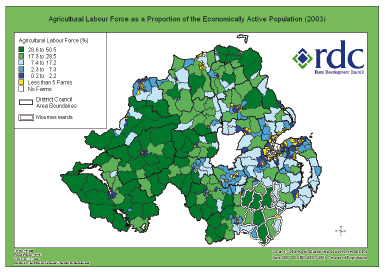
4. The pattern shows different levels of dependency on agriculture from West to East, with particular dependency in the rural west, the south, and the north east. Areas where dependency on agriculture is high and productivity limited require a significant re-deployment of farm resources. This would suggest a potential opportunity to diversify into renewables and the opportunity to explore the potential for and feasibility of clustering renewable energy developments in appropriate locations.
5. Farmers often however lack confidence in the applicability of their farming skills outside of farming, or indeed lack qualifications and additional skills required for re-directing farm resources into other enterprises. Key to this re-deployment must be an appropriate and integrated programme of support, in other words, there may be a need to support skills development and training of the local workforce to help retain more economic benefits from renewable energy technologies – both in developing crops and in the specialist manufacture of plant and service provision.
Rural Communities
6. Rural communities offer great potential to be early adopters of renewable energy however the use of and development of renewable energy sources are still in many ways new and whilst some are much more tried and tested than others there remains a level of uncertainty or fear in use. Only a small number of RDC funded projects have embraced new technologies (see annex 1 for information on the groups, technologies and feedback). One of the main messages from groups engaging in renewable energy technologies is that it is a long term process and to measure the economic benefits needs a long term view.
7. Community driven schemes can act to stimulate the market and offer opportunities for private sector developments to emerge.
8. To increase usage, awareness and promotion there needs to be adequate investment in organisations that can help with information and advice. This needs to be tailored for specific sectors, organisations and businesses to help them respond. People and communities need information and knowledge to help to motivate them. Working demonstrations of energy efficiency measures and alternative energy installations at small and larger scales to show what is achievable is recommended.
9. Embedding renewable energy developments in a local area through community ownership can have wider social and economic benefits and helps to promote public awareness of sustainable development. Opportunities to work in partnership should be explored between communities, the private and public sectors. Government should also help the public sector to lead by example and should market this message to the public.
Funding
10. The new Rural Development Programme 2007-2013 offers potential opportunities to fund renewable energy projects both within communities and more specifically the farming sector. Although this will not offer a full solution to funding requirements it should offer opportunities to test out and pilot new approaches in helping to raise awareness in the benefits of renewables. The proposed National Rural Network to be established as part of the new programme also offers opportunities to share best practice and to disseminate lessons from other EU regions to the Northern Ireland community and farm sector.
Rural Generation Limited

Brook Hall Estate
65-67 Culmore Road
Londonderry
BT48 8JE
Tel: +44(0) 28 7135 8215
Fax: +44(0) 28 7135 0970
Email: info@ruralgeneration.com
Committee for Agriculture and Rural Development
Room 284
Parliament Buildings
Belfast
BT4 3XX
1st February 2008
Dear Paul,
Re: Inquiry into renewable energy and alternative land uses.
Further to your letter 13th December 2007, we wish to submit evidence to the Committee.
Rural Generation Ltd is a biomass company based in Londonderry. We are involved in the promotion and use of Short Rotation Willow Coppice both as an energy crop and as a biofiliter. We also sell biomass boilers. Our main area of interest is biomass to heat.
We welcome the opportunity to feed into the process. We welcome the Committees focus on a renewable energy and on alternative land uses, as we believe that Northern Ireland has a capacity to develop a sustainable biomass to energy industry.
I shall try to be as brief as possible:
1. In PPS 18, section 2.12, Sustainable development strategy there is a reference to “Building on the existing success.” I hope that this is recognised, as a recent development in using forestry in Northern Ireland, as a route for the disposal of sewage sludge, has mitigated against the development of Short Rotation Coppice. This is evident in the reduced level of applications for the planting of willows in 2008.
2. In PPS 18, section 3.1, policy objectives, there are targets of 12% renewable electricity by 2012 and 40% by 2025. There is no reference to heat targets. It is important that when considering the contribution that agriculture can make towards renewable energy, that conversion efficiencies are considered i.e. biomass converted to heat is normally at about 90% efficient. Biomass to electricity is normally about 30%. Essentially you get three times as much energy by converting biomass to heat than by converting biomass to electricity.
3. Peter Robinson’s recent decision not to implement new building regulations that require developers to incorporate renewable energy technologies in the building process is, in our opinion a mistake. This was a good opportunity to move the situation forwards. I’m sure that you are aware of the Stern report which was published in 2007. It not only highlights the consequences of not taking action now, to address climate change, but it also quantifies the cost of delaying action. It is important to recognise that any delay in taking action will incur higher costs in the long run. We therefore believe that there has to be recognition that reducing our carbon footprint will have a cost.
4. Within the Draft Programme for Government 2008-2011, one of the key goals for the environment is to ensure that 12% of our electricity is generated from indigenous renewable sources by 2012. Electricity only accounts for approximately 34% of our energy consumption. Why is there no target for heat?
5. Also within the Draft Programme is a target for increasing the area of forest and woodland by 1,650 hectares by 2011. This equates to approximately 0.2% of the land under agriculture in Northern Ireland. The target is pitifully low and will not make any significant contribution to our biomass resource. Northern Ireland has one of the lowest levels of afforestation in the European Union and we would suggest that considerable effort should be put into increasing the area.
6. We understand that the current grant scheme supporting the installation of biomass boilers into domestic houses will cease in March 2008. In our opinion this will cause a downturn in boiler installation as most house owners will not proceed with boiler installations without grant assistance. This also sends out confusing messages to the public as there is a perception that government is not committed to heat from biomass.
7. There is an unfortunate situation at present where agricultural businesses cannot benefit from Invest Northern Ireland’s expertise and schemes. While DARD have considerable expertise in supporting the agronomic aspects of farm businesses I think that it is generally accepted that they have been unsuccessful in fulfilling their remit in terms of Rural Development. They are essentially an agricultural organisation, not a business support agency.
8 We are aware of an initiative within sustainable energy branch of DETI (seminar 19th Feb 08). This is a very welcome development as interdepartmental cooperation is required.
9. It is imperative that DARD develop short term medium and long term strategies for the development of renewable energy. These strategies should be delivered by way of specific plans, with identifiable and measurable targets, e.g. it was unclear what would follow on from the short rotation challenge fund which ran from 2004-2007. As far as we were aware the new scheme was only launched in November 2007 so there was a period of approximately 12 months when farmers and land owners were uncertain about whether the scheme would continue, or what would replace it. Why can a programme not run for 5-8 years with clear milestones and deliverables? Investment in agricultural land is generally long term and it is difficult to cope with short fix changes in policy which are not anticipated.
We wish you every success with this initiative which we consider is critical both for farmers in Northern Ireland and for the long term issues associated with security of energy supplies. We are willing to give oral evidence to the Committee if you think that this would be helpful.
Yours sincerely
For Rural Generation Limited
![]()
Michael Doran
Business Development Director
Ulster Farmers’ Union

Renewable Energy and Alternative Land Use Opportunities for Northern Ireland Society & Agriculture.
World focus is currently on renewable energy and its potential to mitigate excessive climate change. The disastrous implications of this climate change has galvanized world governments and climate change forced them to recognize the deleterious consequences of relying too heavily on the highly profitable petrochemical economy. Historically cheap and widely available fossil fuel did not engender efficient energy system design while the ignorance of wider environmental implications led to a failure to significantly improve efficiencies. The European Commission now recognizes that there is a major world problem to face and that one important aspect of this is to reduce the emissions of noxious gases into our atmosphere especially those derived from fossil carbon fuel.
This new direction indicated by Europe creates many opportunities for those who are able to produce raw materials and or energy from non fossil sources. Northern Ireland has more potential to benefit from the opportunities created by these necessary fundamental changes than any other country in the European Union. The Province imports the highest proportion of fuels within the entire European Community; it pays some of the highest prices for energy and then promptly wastes through inefficient design a greater proportion than almost any other country. There is real potential to improve on all these figures and if the Northern Ireland Government was to target any or all of these factors then the result would be more money kept within the local economy, which would significantly improve the province’s balance of payments, as well as providing substantial benefits for the environment and the development of ‘rural’ Northern Ireland.
The short term policy decisions must be focused on energy but as the renewable market matures it is essential that an eye is kept on the development of renewable raw materials. In five to ten years it is these renewable raw materials and their potential to produce sustainable products that will give the greatest opportunity for economic growth and employment for all sectors within Northern Ireland. It is essential that sufficient land resources will be available for these future markets and that they are not all committed long-term to comparatively low value energy production – the government in the Republic of Ireland has already taken cognizance of this and planned accordingly. To put this into perspective, one acre of land currently produces enough vegetable oil to directly replace one ton of diesel fuel oil and the by-products of the oil seed crop would replace a second ton of fuel. The same vegetable oil could however directly produce enough insulation foam to insulate fifteen houses to modern standards, hence replacing many thousands of pounds worth of imports; and then at end of life the insulation would be burned safely to replace the second ton of fossil fuel. Furthermore products that have been derived from vegetable matter without the polluting influence of mineral oils can usually be recycled by bio-remediation on land that is being used for non-food products which in turn further reduces fertilizer input.
96% is the figure commonly reported to be the percentage of fuel imported into Northern Ireland. This figure alone stands in stark contrast to the fact that Ireland as a whole is best positioned within the entire northern hemisphere to benefit from biomass production. The North Atlantic Drift with its associated mild winters and wet summers coupled to Ireland’s northern latitude, which gives rise to long daylight hours, means that it is able to produce 15% more biomass than the UK mainland and up to three times more biomass than Eastern Europe. The island also benefits from some of Europe’s best wind resource and highest tides. These important competitive advantages must not be allowed to be disregarded or avoided any longer.
The potential for biomass as a source of energy must not be underestimated. The planet as a whole is radiated with energy from the sun (the ultimate source of all renewables) that is in excess of 26,000 times that that is released by man by burning fossil fuel. Most of this energy is reflected back out to space but a very large quantity is absorbed by plant growth and stored in biomass. The normal planet cycles and atmospheric cleansing safely stores this excess energy in what we now call fossil fuel. It is interesting to note that all of man’s present energy requirements and future energy requirements could easily be accommodated by redirecting some of these natural energy systems without recall to fossil fuels. It is highly unlikely that society as it is currently constituted would have the desire to make such radical changes but that on its own is not good enough reason to ignore the benefits that are currently available. For example the most efficient and cost effective method of capturing this free sunlight energy is photosynthesis or simply growing biomass. To put this into a financial perspective, the most efficient practical photoelectric cells available on a commercial scale are theoretically about 11% efficient at energy conversion; in Northern Ireland this figure is practically found to be about 8%; when this is stored the efficiency falls to about 4% -- the same as photosynthesis. To cover a hectare of land with photocells would cost in excess of £20,000,000 while the same area of grass or crops would store the same energy for about £200. The first scenario is heavily endorsed and supported by powerful industrial lobby interests with huge financial resources, the second is supported by concern for the environment and a stressed agricultural sector who are currently in a position to supply biomass but have no viable route to the energy market.
It is essential that the policies that the Northern Ireland Government decides upon encourage the integration of this renewable energy into an existing energy network. This will require difficult but minor changes to the current supply chain structure to allow free competition for local markets that are currently exclusively supplied by external investors. Similarly new short supply chains will have to be created on a local basis to save wasteful network overheads. If the electricity supply network is taken for an example there are very significant benefits to be made. Fossil fuels are imported and burned in power stations that waste at source between 50 and 70% as heat and noxious gases. The remaining energy is then distributed at high voltages at further losses in the region of 10%. In winter the peak requirement for Northern Ireland electricity is about 1800 megawatts for only about three hours in the day and this figure falls to a base load of about 300 megawatts – this huge variation in load often means that generators must be left running doing nothing because they cannot be restarted in time for the next peak. This all leads to an ‘availability charge’ that dwarfs by comparison the supply electrical unit charge. It is this availability charge that needs to be opened up to the local market which in turn would reduce payback times for any renewable electrical installation to those that would be of interest to financial institutions for investment. To further progress this example if electricity and heat were generated in a distributed network using local combined heat and power plants, then energy savings in excess of 75% would be achieved –this alone would surpass Europe’s 2050 target. The easiest way to visualize this scenario would be to look at the influence the Internet had on computer processing power; there was a rapid movement away from central powerful computers to local small personal computers networked to produce a much more powerful computing entity. There is considerable support and research within mainland Europe and the timing is now ripe for the Assembly to endorse and promote this network energy technology to the benefit of the local economy.
It is important that the Northern Ireland Government opens strenuously protected markets such as electricity and fuel to local producers at financially viable prices. The previous NI Electricity Regulator reported that the producer of electricity should receive 80% of the retail value, this aspiration has not even come close for the average local renewable electricity supplier. If this figure could be achieved then direct financial support, required to install technologies, such as anaerobic digestion or small scale combined heat and power or even larger projects such as tidal power, would be supplied by commercial financial institutions without further ongoing government financial support. In Germany, the government guaranteed the electricity supplied price from anaerobic digesters at approximately 20¢ per kilowatt hour. This promoted a very large number of installations because they became financially worthwhile – in Northern Ireland anaerobic digesters are currently just not financially viable with the low electricity price offered resulting in gases from waste that should be fuelling our local economy currently adding to our greenhouse gas emissions.
The food versus fuel debate has the potential to stifle the renewable market and it is essential that the Northern Ireland Government is in a position to judge the relative merits from an unbiased local point of view. There is plenty of potential for the industry to supply both energy and food but there is a requirement for a holistic viewpoint to be taken. Currently the food industry dispatches approximately 50% of the harvested food to landfill very often for aesthetic reasons. Energy could and should be recovered from this source and used to generate local heat and power as required. Land use should be considered carefully and more use made of all parts of the crops that are grown. A very large proportion of the agricultural production in Northern Ireland is sold as raw material without the benefit of added value which benefits the local economy. To achieve this it is essential to create local and often shorter supply chains directly from the farm to the end user. The National Non-Food Crop Centre was set up several years ago in the UK by the DTI and DEFRA to address these supply chain problems; this organization has achieved significant success in promoting the local economies and the Assembly should consider establishing this or a similar body within Northern Ireland to promote, guide and implement this agenda.
Both Central and Local Government in Northern Ireland are themselves very large energy consumers which, despite commitments by the former NI Secretary of State, still fails to properly endorse and nurture the renewable market. Current technology which is well proven throughout Europe could be employed to introduce renewable energy sources directly to the Government Estate without further research and development. Assistance however is needed at the start to encourage, train, guide and support some of the approximately 40,000 individual Single Farm Payment registered landowners (biomass producers) into developing energy supply companies. If this was to occur, then confidence and financial support shown by the Government would be multiplied several fold as any money spent would be kept within the Province and help the local economy and directly promote both a secondary service support industry and development of rural areas throughout Northern Ireland.
The Northern Ireland Government should consider how best to implement a renewable policy throughout all aspects of its structure, not only to give coordination and consistency but also to promote a holistic approach. The structure of Government within the province tends to specialize in numerous independent Government Departments that take responsibility for their specific domains. This has worked well historically in promoting and giving accountability to each of those specific domains individually but has not been so successful in introducing policies that cover and interact between all Departments. One model that should be considered and possibly replicated is that currently used to introduce Biodiversity regulation throughout NI Government.
The local agricultural industry has once again much to offer society as a whole. While in recent years agriculture has become synonymous with the agri-food industry it still has the original and most cost effective source of renewable energy and sustainable raw materials available to mankind. Over the past 50 years the financial value of farming relative to the energy market driven world has fallen dramatically. Any future that has sustainability or renewables incorporated in its ethos has no alternative but to use land area as an integral part of its strategy. It is imperative that farmers –the current landowners in Northern Ireland –are instrumental in forging a brave new world.
Northern Ireland’s farmers are ready and willing to deliver but are enormously frustrated at the present inertia. A political impetus and coordinated approach from Northern Ireland’s Government is a pre-requisite to ensuring that this can be realized.
Appendix to UFU Submission for NI Assembly Renewables Inquiry
1. ‘Renewables’ Legislation
International
- Kyoto Protocol (Dec ’97) – UK to reduce greenhouse gas emissions by 12.5% on 1990 levels by 2008-12
EU
- 20% average share of renewables in overall energy consumption by 2010 (15% for UK)
- 10% binding target for biofuels in transport by 2020
- Report by end of 2011 on a similar sustainability scheme for biomass
UK
- Energy White Paper
- 10% electricity from renewable sources by 2020
- Publication of ‘Biomass Strategy’ for heat
- Possibility of increasing proportion of transport fuel from renewables through
- Renewable Transport Fuel Obligation (RTFO) – currently 5% content by 2010
ROI
- Renewables Energy Feed In Tariff (REFIT) (May 2006)
- €80/ha national top-up to €45/ha EU Energy Crop Premium (Dec 2006)
- Energy White Paper (March 2007)
- €11 million Renewable Energy Grant Scheme for CHP systems (Jan 2008)
- REFIT Tariff increased to 12 eurocents/kWh (Jan 2008)
NI
- NI Renewables Obligation Order – 6% electricity by 2012/13
- £59 million NI Environment and Renewable Energy Fund (Feb 2006)
- DARD Renewable Energy Action Plan (Jan 2007)
2. UFU ACTION
- Established UFU Rural Enterprise Committee
- Established firm links with National Non-Food Crops Centre (NNFCC)
- Engaging with Government: (DARD, DETI, Invest NI); NI Assembly; and Local Councils
- Responded to DARD Consultation: Recommendations to ‘DARD for a Renewable Energy Policy’
- Speaking with NI industry: Energy & Environment Show (2006); UFU ‘Renewable Energy’ Conference (Jan 2007); and participation in DARD/industry ‘Renewables Open Day’ (Aug 07)
- Inclusion of ‘public procurement’ of renewable energy in UFU NI Programme for Government Document
- Meeting with NI Electricity Regulator
- Meetings with Irish Farmers’ Association
Woodland Trust

Response to the Committee for Agriculture and Rural Development inquiry into renewable energy and alternative land uses
1. The Woodland Trust welcomes the opportunity to respond to this consultation. The Trust is the UK’s leading woodland conservation charity. We have four main aims: no further loss of ancient woodland, restoring and improving woodland biodiversity, increasing new native woodland and increasing people’s understanding and enjoyment of woodland. We own over 1,000 sites across the UK, covering around 20,000 hectares (50,000 acres) and we have 300,000 members and supporters.
Summary
The Woodland Trust supports the use of renewable energy sources as an important part of mitigating climate change, where such energy generation is environmentally sustainable. While the inquiry refers to renewable energy generally, our evidence relates mainly to bioenergy – the production of heat, power and liquid fuels from biomass. This fast-developing sector has potential to make a huge impact on forestry, conservation and land-use issues in Northern Ireland in the near future.
Bioenergy could reduce net production of greenhouse gas emissions, and mitigate against climate change, and could therefore play a significant part in the Department for Agriculture and Rural Affairs approach to reinvigorating agriculture. However, it should be environmentally sustainable; offering real carbon savings, avoiding negative impacts on the natural environment and wherever possible delivering positive environmental benefits.
The use of biomass for production of heat and power, and in the longer term, for second-generation biofuels, will achieve the greatest greenhouse gas savings. Use of low-grade timber and forestry residues, and planting of new woodland and short-rotation coppice, also have the potential, if targeted, to provide other positive environmental benefits, such as restoration and buffering of semi-natural habitats. We would therefore prefer policy and incentives to favour these developments, rather than production of transport fuels from agricultural crops, which potentially provides less greenhouse gas savings, and carries more risk of negative environmental impacts.
The Department for Agriculture and Rural Affairs must ensure there are necessary checks and balances to prevent unsustainable practice. In particular, it is essential that some form of certification, linked to both financial incentives and regulation, is put in place as soon as possible to ensure bioenergy production is environmentally sustainable.
The recent and current policy framework for the development of renewable energy in Northern Ireland, focussing on but not limited to those policies developed and implemented by the Department of Agriculture and Rural Development
2. Bioenergy could form part of a wider suite of polices to help Northern Ireland diversify its energy mix and make greater use of renewables. Indeed, we argue that sustainable bioenergy could be used in the effort to mitigate against climate change, and subsequently ensure that the UK meets its emission reduction targets.
3. If managed correctly there might be a number of opportunities for the Department of Agriculture and Rural Affairs to use an expanded bioenergy industry to deliver environmental benefits that not only mitigate climate change, but ensure that the natural environment is capable of adapting to new pressures. Most of these benefits relate to production of heat or combined heat and power from biomass, or, in the longer term, the production of second-generation biofuels from woody crops and could include the following:
- Restoration of Plantations on Ancient Woodland Sites (PAWS): Many of Northern Ireland’s ancient and long established woods have been planted with non-native conifers. This has taken its toll on the unique woodland wildlife that ancient woods support. In many PAWS sites, ancient woodland communities cling on in isolated pockets, along rides or in glades, but a further round of felling and replanting could lead to their being lost altogether. The Woodland Trust is calling for restoration of all non-native conifer PAWS to mainly broadleaved woodland. While some of this work has begun on the Forest Service and other estates, a more buoyant market for low-grade timber could stimulate further restoration work.
- Buffering semi-natural habitats. Ancient woods and other semi-natural habitats often exist as isolated islands within an intensively managed landscape. As such they are vulnerable to negative edge-effects from surrounding land, such as nitrate run-off. New planting, including new native woodland, short rotation forestry and short rotation coppice, which require less intensive management than conventional arable crops, could act as buffers.
- Bringing semi-natural woodland into sensitive and appropriate management, where it can be demonstrated that this will have biodiversity and/or social benefits.
- Economic benefits: an expansion of the domestic timber market could benefit both individual woodland owners and the wider rural economy, through creation of employment in timber harvesting and transport.
- Improved soil and water quality: Certain crops, especially multi-annual crops that require less intensive management, including fewer fertilisers and pesticides – miscanthus and short-rotation coppice – could lead to improved soil and water quality, if they were to replace conventional arable crops.
4. Nevertheless bioenergy poses threats to the environment if it is not sourced sustainably, and the Department for Agriculture and Rural Development should be cautious in how it utilises the policy mechanisms available to increase production. Some of these threats include:
- Loss of valuable wildlife habitats to biofuel crops, or to the land-uses they displace, such as food crops. Valuable wildlife habitats include both semi-natural habitats and others, such as improved wet grassland. They could also include set-aside land that has been left fallow and has developed biodiversity interest.
- Increased use of fertilisers or pesticides, affecting water quality, where crops requiring this kind of management displace a less intensive land use.
- Increased use of deep ploughing and heavy harvesting techniques that create a risk of soil erosion, for example, in management of short rotation coppice.
- Over-exploitation and insensitive management of woods, and replanting with inappropriate species.
- Use of monocultures, which has both landscape and biodiversity implications, and would make crops more prone to disease
- Unknown biodiversity effects of planting large areas of new crops, such as Miscanthus.
- Continued and further intensification of land use between and around semi-natural habitats, just at a time when we are recognising the need for ecologically functional landscapes for the conservation of biodiversity. This is critical to survival and adaptation of wildlife in the face of climate change.
The relative importance in terms of contributing to Governments renewable energy targets, of heat from renewable sources, electricity from renewable sources and fuel from renewable sources, and how relevant each could be to the Northern Ireland economy
5. Current evidence is that the greatest potential greenhouse gas savings can be achieved through burning of woodchip to generate heat, gasification of biomass to produce electricity, and the use of “second-generation” biofuels produced from biomass. The use of low-grade timber and forestry residues, short rotation coppice and forestry for these purposes also offers more opportunities for “win-win” developments, where greenhouse gas savings from using bioenergy are supplemented by other environmental gains such as restoration and buffering of semi-natural habitats, reduced intensity of land-use, improved soil and water quality, as outlined in point 3 above.
6. The Woodland Trust would therefore like to see bioenergy policies place greater emphasis on the use of woody biomass crops for these purposes, rather than on agricultural crops such as sugar beet, oilseed rape and wheat for the production of biofuels. We particularly support small-scale, local, use of woodfuel for heat, since this offers an opportunity to develop local timber markets, benefiting rural economies, and to minimise emissions from transport of feedstocks.
7. Projections by the NFU for meeting the 5 per cent target by 2010 from production of wheat and oilseed rape indicate that this would require at least 1.2m ha of land, which is equivalent to 20 per cent of the UK’s arable land[1]. The NFU believes this target could be met through current surplus production of wheat, and use of set-aside land. However, in order to meet the 10 per cent target by 2020 through domestic production, biofuel crops would have to compete with the many other pressures on land in the UK, particularly use of land for food production and areas of biodiversity and recreational value. It is likely therefore that targets will only be met by importing biofuels, or by importing the raw materials such as palm oil, and rightly this is creating a great deal of concern about the potential effects of a burgeoning global market, which is seeing biofuel crops displacing both valuable natural habitats and the poorest people in developing countries. Concerns about the sustainability of biofuels have recently been expressed by both the Royal Society[2] and the Environmental Audit Committee[3], and the European Commission will also be reviewing biofuels policy in the forthcoming Renewable Energy Directive.
The range of support available to renewable initiatives at local, national and European levels
8. We believe that arable biofuels should not receive additional funding as there is sufficient market demand for their production. The Department for Agriculture and Rural Affairs could channel this funding into developing the woodfuel sector as this offers the most environmentally sustainable form of bioenergy.
The potential role of farm and rural businesses and rural communities in the delivery of a renewables programme which contributes to the sustainability of those businesses and wider community
9. Farm and rural businesses and rural communities could potentially contribute a great deal to developing a sustainable bioenergy sector for Northern Ireland. There are already examples in Northern Ireland of small-scale, local use of woodfuel for heating, and a number of farmers have taken up the option of growing short-rotation coppice. We believe that woodland owners, both on large estates (including Forest Service) and small farms could benefit from a re-invigorated timber market, providing woodfuel for heat and power. Farmers could contribute through further diversification to produce short-rotation coppice and other biomass crops.
10. However, it is essential that the policy and support framework is in place, so that there are appropriate checks and balances, and sufficient practical guidance, to ensure that the developments that take place create a bioenergy sector that offers genuine greenhouse gas savings without other adverse environmental impacts.
11. Northern Ireland is already struggling to meet the commitments held with the relevant sections of the Biodiversity Action Plan (BAP) and the sustainable development framework. Any new policies on bioenergy must pay heed to the likely effect on biodiversity and the requirement that Northern Ireland create ecological functional landscapes capable of meeting the various biodiversity commitments.
The ways by which the Department of Agriculture and Rural Development could implement and resource a renewable energy programme in a manner which contributes to Northern Ireland’s renewable targets
12. The Department of Agriculture and Rural Affairs will have a crucial role to play in ensuring that policies to encourage renewables do not damage Northern Ireland’s environmentally sensitive areas. In particular, the department can ensure that bioenergy is sourced sustainably, without damaging biodiversity, and the ecosystems upon which society is dependent for water, air and soil quality.
13. We would stress that any development in renewable energy must take place within an overarching framework that has at its centre reductions in energy use, through behavioural change, rather than focusing narrowly on substituting one energy source for another.
14. The Department of Agriculture and Rural Affairs should primarily deliver policies that cultivate landscape scale action. This would seek to develop an ecologically functional landscape rather than small isolated sanctuaries of biodiversity, and it is critical that producing bioenergy contributes to landscape scale principles rather than detracting from them. Importantly land-use policy should deliver an integrated response that will mitigate climate change, and allow species to adapt across ecologically robust habitats. Bioenergy can contribute to this, but only if there is a rigorous and transparent sustainability assessment.
The Woodland Trust, 1 Dufferin Court, Dufferin Avenue, Bangor, County Down, BT20 3BX
www.woodland-trust.org.uk/campaigns
For more information please contact:
PatrickCregg@woodland-trust.org.uk 02891 275 789 or
LeeBruce@woodalnd-trust.org.uk 01476 581 111
[1] NFU (2006), UK Biofuels – land required to meet the RTFO 2010. www.nfuonline.com/x9763.xml
[2] Royal Soceity (2008),Sustainable biofuels: prospects and challenges. http://royalsociety.org/document.asp?id=7366
[3] Environmental Audit Committee (2008), Are biofuels sustainable? http://www.parliament.uk/parliamentary_committees/environmental_audit_committee/eac_210108.cfm
WWF Northern Ireland

13 West Street, Carrickfergus
Co Antrim, Northern Ireland
BT38 7AR
t: 028 9335 5166
f: 028 9336 4448
www.wwf.org.uk/northernireland
Mr Paul Carlisle,
Committee Clerk,
Room 284,
Parliament Buildings,
Belfast
BT4 3XX.
Reference: ARD Committee inquiry into renewable energy and alternative land uses
01 February 2008
Dear Mr Carlisle,
WWF Northern Ireland welcomes this inquiry and the opportunity to comment on it.
WWF Northern Ireland is part of the world’s largest independent conservation organisation in the world which operates in over 90 countries. WWF is a challenging, constructive, science-based organisation that addresses issues from the survival of species and habitats to climate change, sustainable business and environmental education. WWF has some five million supporters worldwide and approximately 90% of our income derives from voluntary sources such as people and the business community.
WWF works to
- conserve endangered species - such as tigers, great apes and whales;
- protect endangered spaces - such as forests, savannahs, wetlands and seas;
- address global threats to the planet - such as climate change and toxic chemicals
for the benefit of people and nature.
If you have a further queries on this submission please do not hesitate to contact me.
Yours sincerely
Malachy Campbell
Policy Officer WWF Northern Ireland
WWF NI Submission to Ard Committee Inquiry Into Renewable Energy and Alternative Land Uses
(a) The recent and current policy framework for the development of renewable energy in Northern Ireland, focussing on but not limited to those policies developed and implemented by the Department of Agriculture and Rural Development.
According to the terms of the EU Energy package announced on 23rd January 2008, one of the UK’s legally binding targets is to achieve a 15% share of renewables in the final energy demand by 2020. A series of interim targets were also agreed by the EU on the following basis: member states must achieve a 25% of their 2005-2020 renewables increase by 2012, 35% by 2014, 45% by 2016, and 65% by 2018. Together these targets would make up an “indicative trajectory” that each member states would be expected to follow.
In addition there are also UK targets most notable the targets within the draft UK Climate change bill namely to reduce Carbon Dioxide (CO2) emissions by 60% by 2050 with an interim target to reduce CO2 emissions by 26-32% by 2020 against a 1990 baseline. However, WWF is pressing for these targets to be revised upwards to ensure a reduction in CO2 levels of 40% by 2020 and 80% by 2050.
In order to facilitate the achievement of the national and international targets and also to guide the development of energy policy in Northern Ireland, WWF Northern Ireland believes that there is a real need for a long term NI energy strategy which sets more ambitious targets for the generation of renewable energy in NI than currently exists.
In January 2008, commenting on a North South study on renewable energy and the grid, the Minister for Enterprise Trade and Investment, Nigel Dodds said that Northern Ireland “can make a significant contribution to the UK’s climate change goals by enhancing the amount of electricity generated from local renewable sources” and that “it is clear that we must be more ambitious in setting future renewable energy targets.”
WWF Northern Ireland fully supports this. Unfortunately though, the recent Programme for Government (PfG) was not more ambitious than any of the existing strategies as it only restated existing targets. For example, the target in the PfG to reduce NI’s carbon footprint by 25% by 2025 though welcome was a pre-existing target from the NI Sustainable Development Strategy (NI SDS) and WWF Northern Ireland is disappointed at the lack of ambition in demonstrated by the fact the 2007 PfG did not raise existing targets in the NI SDS.
The passing of the legislative consent motion in relation to Northern Ireland’s participation in the UK Climate Change Bill on Monday 10th December 2007, means that Northern Ireland agreed to be part of the UK Climate Change Bill. In introducing the legislative consent motion the Environment Minister Arlene Foster said
“it is now accepted that climate change is the greatest environmental challenge faced by the world today.”
and
“The UK Government, and each of the devolved administrations, are committed to tackling the issue, because we in Northern Ireland must play our part.”
Given that the interim target in the current draft of the Climate Change bill is to reduce CO2 emissions by 26-32% by 2020 against a 1990 baseline, a target to reduce Northern Ireland’s carbon footprint by 25% by 2025 is again actually below the comparable UK target, in terms of both the level of reduction and the time by which this has to be achieved, again reflective of a lack of ambition in Northern Ireland. WWF Northern Ireland recommends that in line with the emerging science, Northern Ireland aims to reduce its carbon emissions by 40% by 2020 and 80% by 2050.
While Scotland has a target to produce 40% of its electricity from renewable resources by 2020, Northern Ireland’s target is to have 12 % of electricity generated from renewable resources by 2012. According to a 2003 report by WWF Scotland nearly 50,000 new jobs could be created in Scotland in sectors such as wave and wind energy, recycling, public transport and organic farming. Though the potential for renewable energy sources such as wind and wave power are undoubtedly larger in Scotland than Northern Ireland, it is anticipated the potential in Northern Ireland would be significant and the potential for job creation should be explored.
Enormous potential exists for renewable energy, and yet only 4% of Northern Ireland’s electricity is generated from renewables. This compares to 12% in Germany which has embraced green technology and has around 170,000 people employed in green industries and that is projected to rise to 300,000 by 2020. The German government already has a target to cut CO2 emissions by 40% against 1990 levels by 2020, which it estimates will generate savings of €5bn in private households and industry by 2020, and that on average, every tonne of CO2 saved has a saving effect of €26.
In light of the range of potential benefits of greater development of renewable energy sources in Northern Ireland, Northern Ireland needs a long term energy strategy to reduce our dependence on imported fossil fuels, develop the potential for renewables and create jobs.
(b) The range of renewable technologies currently in operation or planned in rural communities, taking into account, as appropriate, similar projects elsewhere.
There is a broad range of renewable technologies available including, but not limited to, wind power (onshore and offshore), hydro, wave power and marine current power, biomass and biodiesel, solar power both in terms of solar water heating and photovoltaic, as well as passive solar heating. Given the recent advancements in bioenergy which mean that fuels can now be generated from rapeseed, cereals, and even grass, as well as the potential energy resource provided by (what are currently viewed) as organic agricultural and forestry wastes and by-products, it seems clear that a number of opportunities exist for Northern Ireland to reduce its dependence of fossil fuels and increase energy production from a range of renewable sources.
The nature of energy supply, in terms of the centralised grid is a very important factor, as it is a hugely inefficient system. Decentralised electricity can be much more efficient especially for rural communities and/or where the demand for energy is dispersed and should be a very attractive option for many farmers, especially those who could produce and consume their own energy source and WWF Northern Ireland supports the principle of decentralised energy.
The recent proposal by Rose Energy also shows the potential for what are currently viewed as waste products to be turned into energy sources, while tackling a waste and potential pollution problem.
(c) The relative importance in terms of contributing to Governments renewable energy targets, of heat from renewable sources, electricity from renewable sources and fuel from renewable sources, and how relevant each could be to the NI economy.
While the increasing utilisation of more efficient Combined Cycle Gas Turbines (CCGTs) has benefits, Combined Heat and Power (CHP) plants, which also use the heat generated in the course of the electricity production process, have an even greater efficiency level (of approximately 80%). For example, the Blackwater biomass CHP plant at Benburb (run by B9) operates at approximately 75% efficiency. Significant steps could be made in reducing the amount of energy consumed by greater use of CHP stations and should be facilitated as part of an integrated energy policy. It is however important to say that WWF’s support for CHP also depends on the fuel source used. For example WWF does not support the production of energy from domestic waste as a renewable resource, as this requires and often encourages the production of large quantities of waste. Similarly, while biomass is carbon neutral, WWF would not support the use of genetically modified plants for biomass projects and would recommend the use of native species like willow which support a greater level of (native) biodiversity in biomass projects.
While WWF recognises the potential for renewable bioenergy sources to be grown in Northern Ireland it believes the broader impact of their production must be considered and acceptable levels of social and environmental performance in the production of bioenergy among supply chain actors, from growers to end users should all be factored in. For example, there is a risk, especially on a small island, that a biofuel processing plant would create a market demand that cannot be met locally. This would put pressure for biofuel to be imported. This risks creating a demand for importing biofuels that may not have been produced sustainably and this could have significant, long term detrimental consequences for people and nature, as exemplified by the biofuels produced from the palm oil plantations that have been planted on former rainforest in Indonesia. The changes in land use for biofuel production in the US and subsequent changes in wheat prices demonstrates how global changes in policy and demand can affect commodity prices.
In WWF’s view, the following environmental principles need to be addressed by any standard as a minimum both for crops produced in Northern Ireland and as a requirement for imported fuel sources
- not damage high conservation value habitats and biodiversity
- not degrade soil quality
- not adversely impact the quantity and quality of freshwater resources
- not lead to damaging release of toxic compounds into the environment
- lead to substantially positive lifecycle GHG balances compared to fossil fuel equivalents
WWF will only support bioenergy that is environmentally, socially and economically sustainable and considers that effective measures are needed to address the following issues:
(1) Bioenergy must deliver large positive energy and Greenhouse Gas (GHG) balances over fossil fuels
(2) Bioenergy feedstock must be selected on the basis of the most efficient GHG balance, from production through to processing and use
(3) Bioenergy policies and programmes must address displacement effects (where a certain crop displaces an existing crop which in turn may then expand onto High Conservation Value Areas) that influence GHG balance poverty and the environment
(4) Permanent grasslands, natural and semi natural forests, natural floodplains, wetlands and peatlands important for threatened species and other High Conservation Value Areas (HCVAs) must not be turned into intensive bioenergy production
(5) Bioenergy feedstocks must be produced using better management practices
(6) Implementation of bioenergy policies must take into account food security and must not threaten the realisation of the right to food
(7) Governments must take measures to ensure an equitable playing fireld for small producers
(d) The range of support available to renewable initiatives at local, national and European levels.
The development of renewable energy in Germany has already been referred to and a major factor in the success of the renewable energy industry in Germany has been the policy of the German government in offering what are described as ‘feed in tariffs’ whereby energy (electricity) usually above and beyond what the producers consumes themselves, is purchased from the producer at a set rate, normally above the normal rate, on the basis of a long term contract. This approach has helped to make Germany a leader in renewable energy in Europe and globally and significantly, this option of feed in tariffs has also been adopted by the Republic of Ireland (RoI).
In January 2008, the Republic of Ireland’s Energy Minister, Eamon Ryan announced a new renewable energy grant scheme totalling €11 million channelled through Sustainable Energy Ireland (SEI) for the installation of biomass-fuelled and anaerobic digestion Combined Heat and Power Units (CHP), which included feed-in-tarrif or guaranteed price of €120 per MegaWatt Hour (MWh), for the production of electricity from biomass CHP and anaerobic digestion under the REFIT scheme. The Minister has also introduced a new feed-in-tariff under the REFIT scheme for wave energy of €220 per MWh. WWF Northern Ireland believes if such a system of feed-in tariffs were to be instigated in NI it would greatly assist the development of renewable energy sources.
Smart metering, whereby electricity demand is metered every half hour, is another option which has been shown to reduce demand.
WWF Northern Ireland understands that the Environment and Renewable Energy Fund (EREF) which offers grants for the installation of small scale renewable energy technologies in households will not be extended beyond the original deadline of March 2008. WWF views this as regrettable and would like to see this scheme continued. Similarly WWF Northern Ireland was disappointed at the decision by Minister for Finance and Personnel Peter Robinson to reverse the decision made by previous Secretary of State Peter Hain to require fitting of micro renewable technologies to all new build in Northern Ireland. However WWF Northern Ireland is delighted at and supports Minister Robinson’s decision to take forward a proposal to provide a rate rebate to existing homes that make energy efficiency improvements such as cavity wall and loft insulation and the proposal to give an initial rate exemption for the first purchase of new homes which are zero carbon rated.
(e) To compare the range of fiscal and other incentives offered elsewhere to support the development of a renewable energy industry and the infrastructure to support it.
Please see above.
(f) The potential role of farm and rural businesses and rural communities in the delivery of a renewables programme which contributes to the sustainability of those business and the wider community.
The 2007-2013 Rural Development Programme offers a great opportunity for farms, rural businesses and communities to contribute to the delivery of a renewables programme. However for this to happen in practice, the renewables programme needs to be better incorporated into all axes of the the NIRDP. For example, there is a measure in the NIRDP under Axis 1 is to modernise agricultural buildings. The current DARD guidance on this measure focuses on animal and handler welfare only even though the Commission guidelines included the possibility of this measure encompassing renewable technologies on farm. Similarly, several measures under Axis 3 offer the potential for communities to look at renewable technologies but again DARD’s focus would appear to be channelled along the more traditional lines for developing rural communities such as crèches, amenity spaces development and car parks.
WWF believes that notwithstanding the importance of the existing range of measures in the NIRDP proposals, there is clearly a much greater opportunity for the programme to enable farms, rural businesses and rural communities to contribute to a renewables programme and this potential should not be lost.
(g) The ways by which the Department of Agriculture and Rural Development could implement and resource a renewable energy programme in a manner which contributes to the sustainability of the agricultural/rural sector and contributes to Northern Ireland’s renewable energy targets
WWF Northern Ireland notes that a key underpinning rationale for the 2007-2013 Rural Development Programme is addressing climate change and is pleased that the Commission has guided Member States to include measures that will contribute to this objective under all axes of their programmes and not simply be considered as an Axis II priority. In the Community Strategic Guidelines for Rural Development for the 2007-2013 Programming Period, Member States are encouraged to focus support on ‘development of new outlets for agricultural and forestry products, which includes “support for investment and training in the field of non-food production …by …helping the development of renewable energy materials, biofuels and processing capacity”, under Axis I, ‘Improving the competitiveness of the agricultural and forestry sectors’. Also, by “developing the provision and innovative use of renewable energy sources”, under Axis III, ‘Improving the quality of life in rural areas and encouraging diversification’. In addition to the more obvious ‘combating climate change’ element of Axis II these offer the potential for the NIRDP to make a significant contribution to Climate Change objectives. There is a need now that the programme is in place, for DARD to ensure that these measures are readily available to farmers, rural businesses and communities and positively incentivised with clear monitoring target associated to their delivery.
WWF Northern Ireland also welcomes the broader approach that appears is being taken by DARD, that would support the development of a range of renewable technologies, rather than an over emphasis on the development of wind power.
